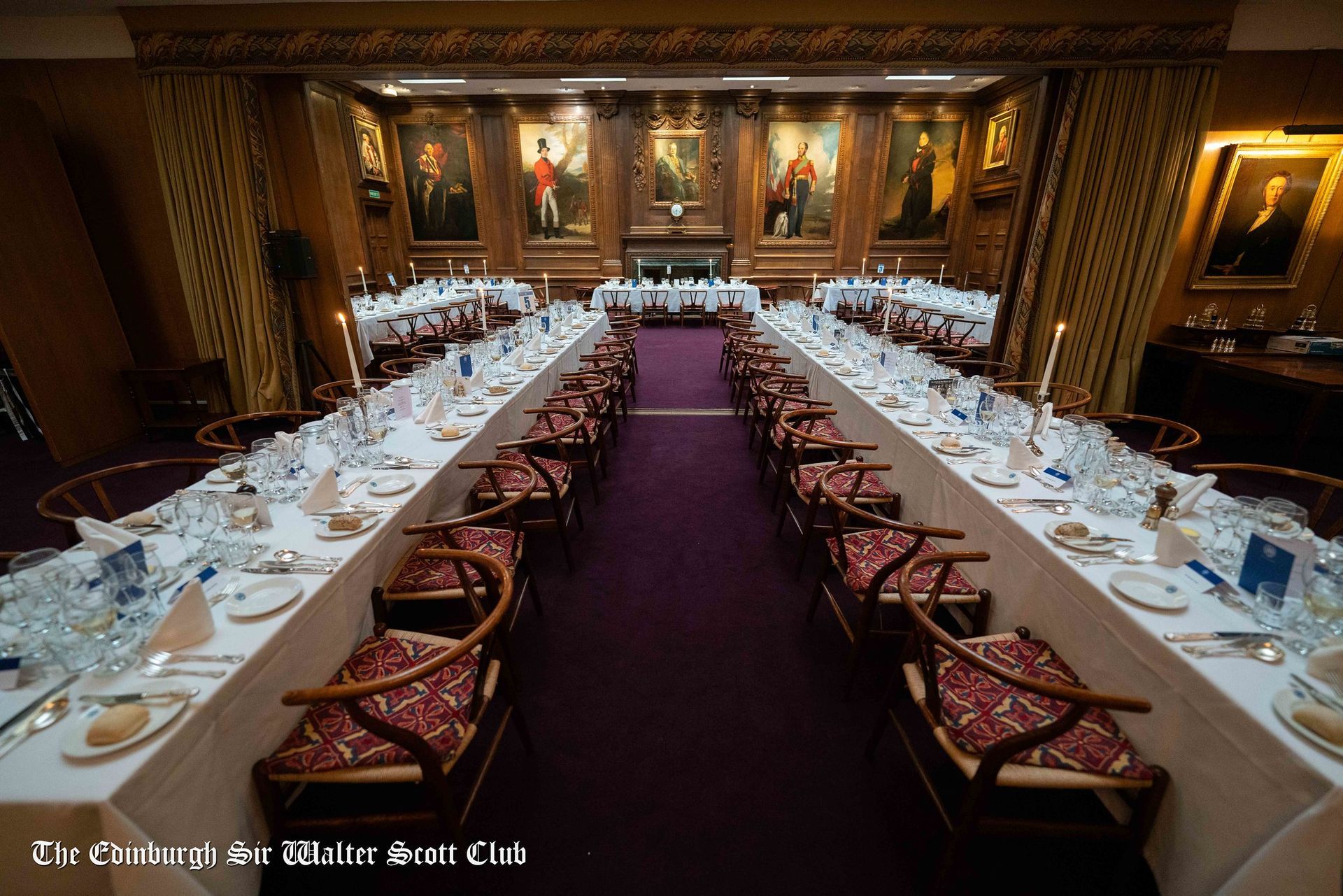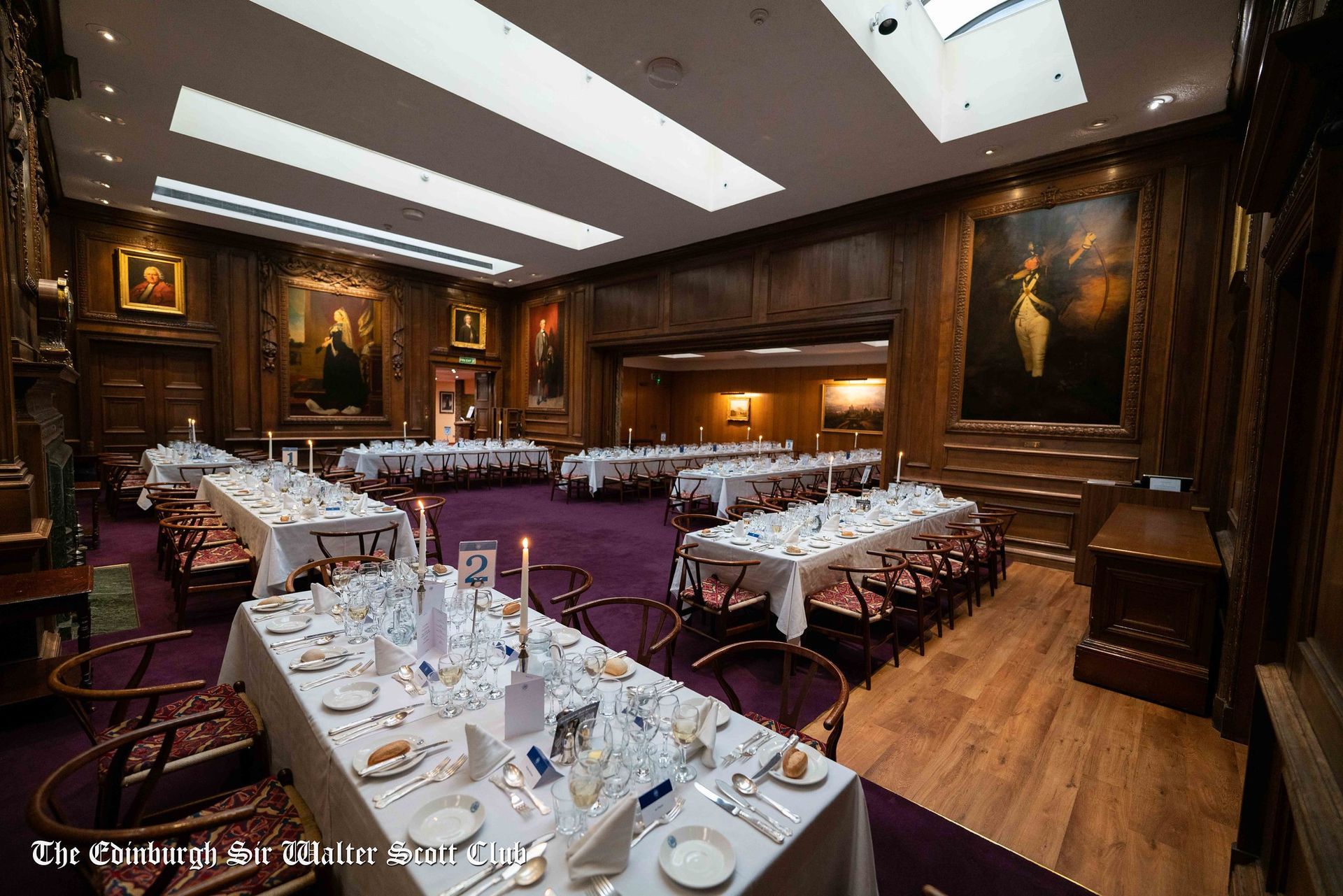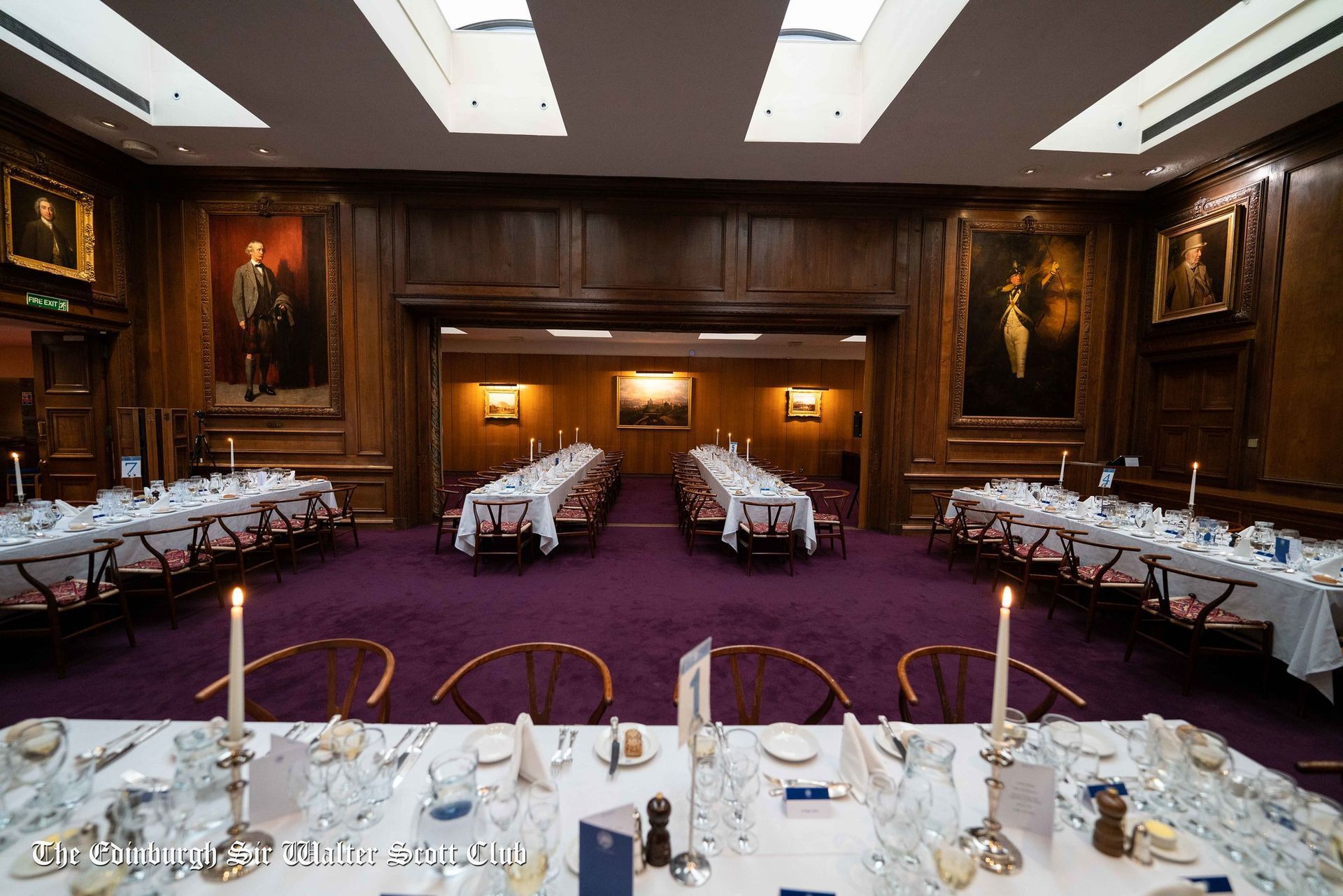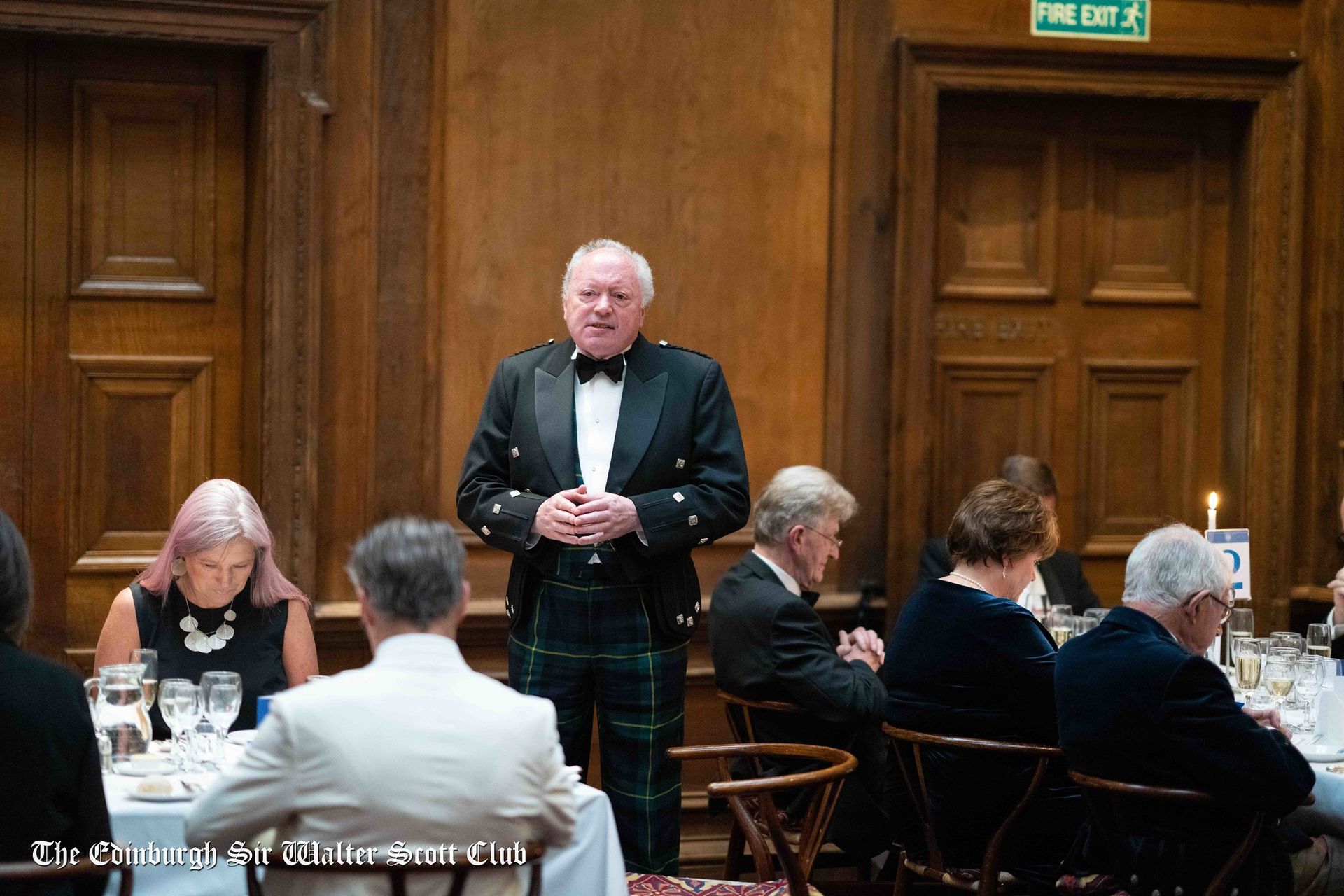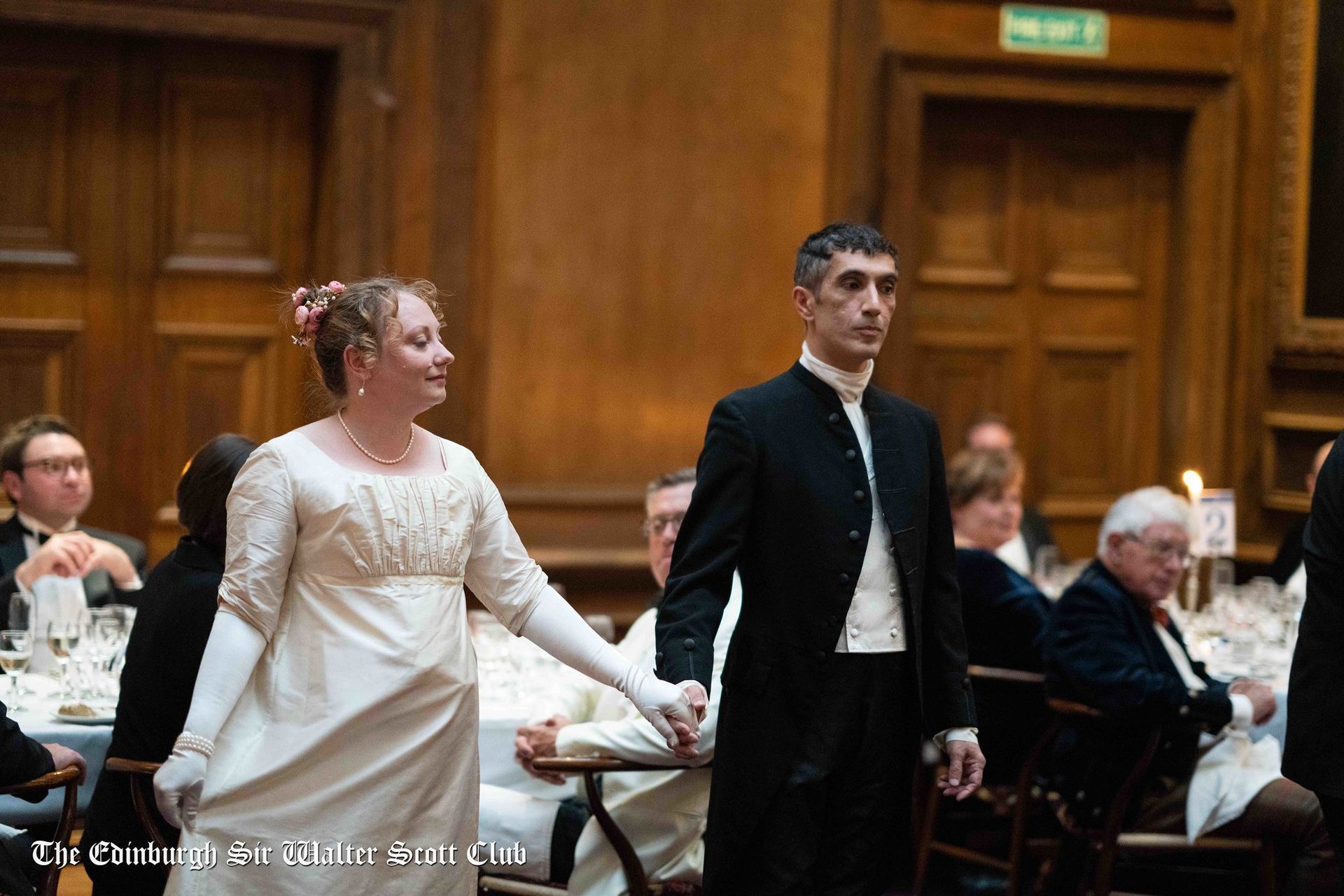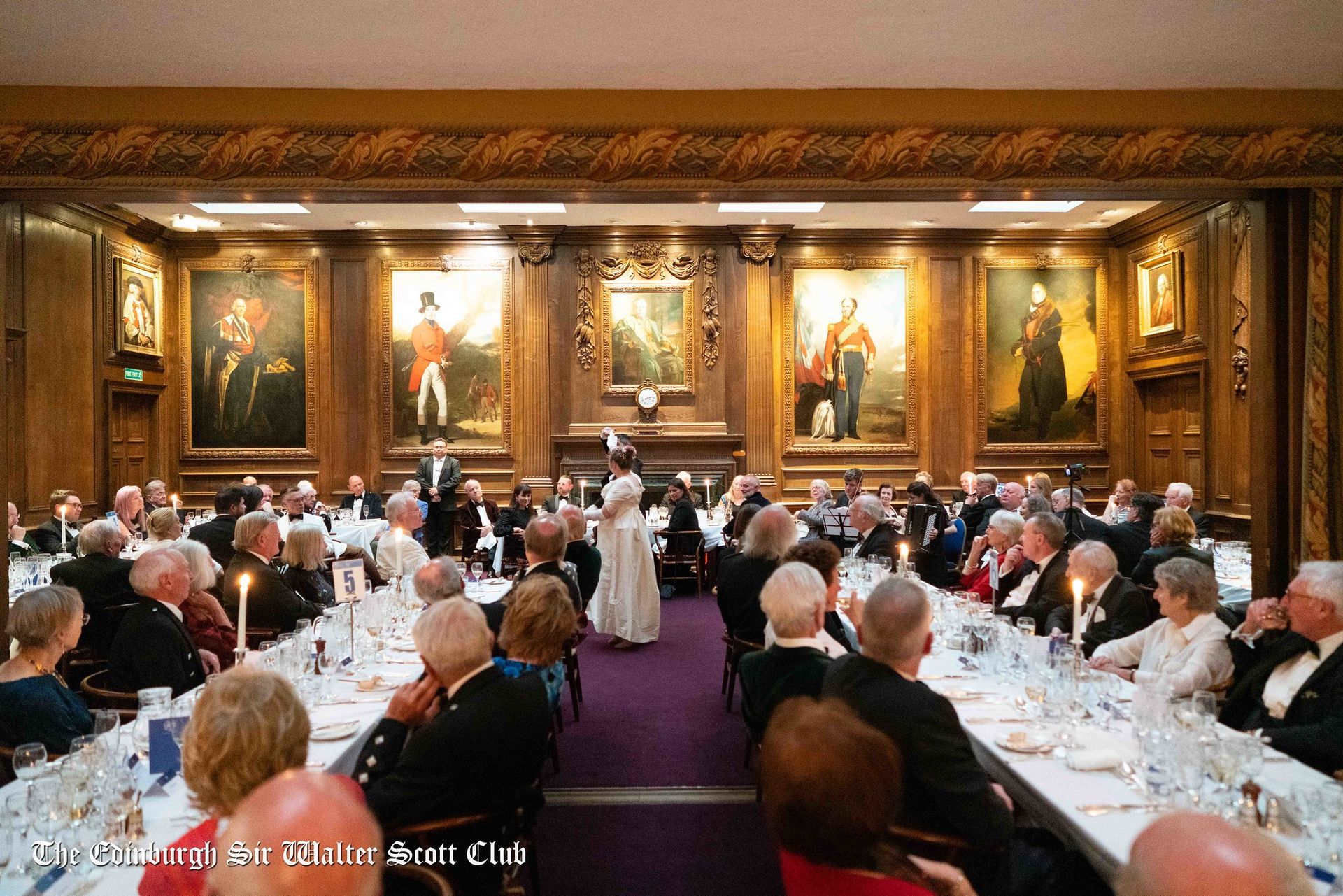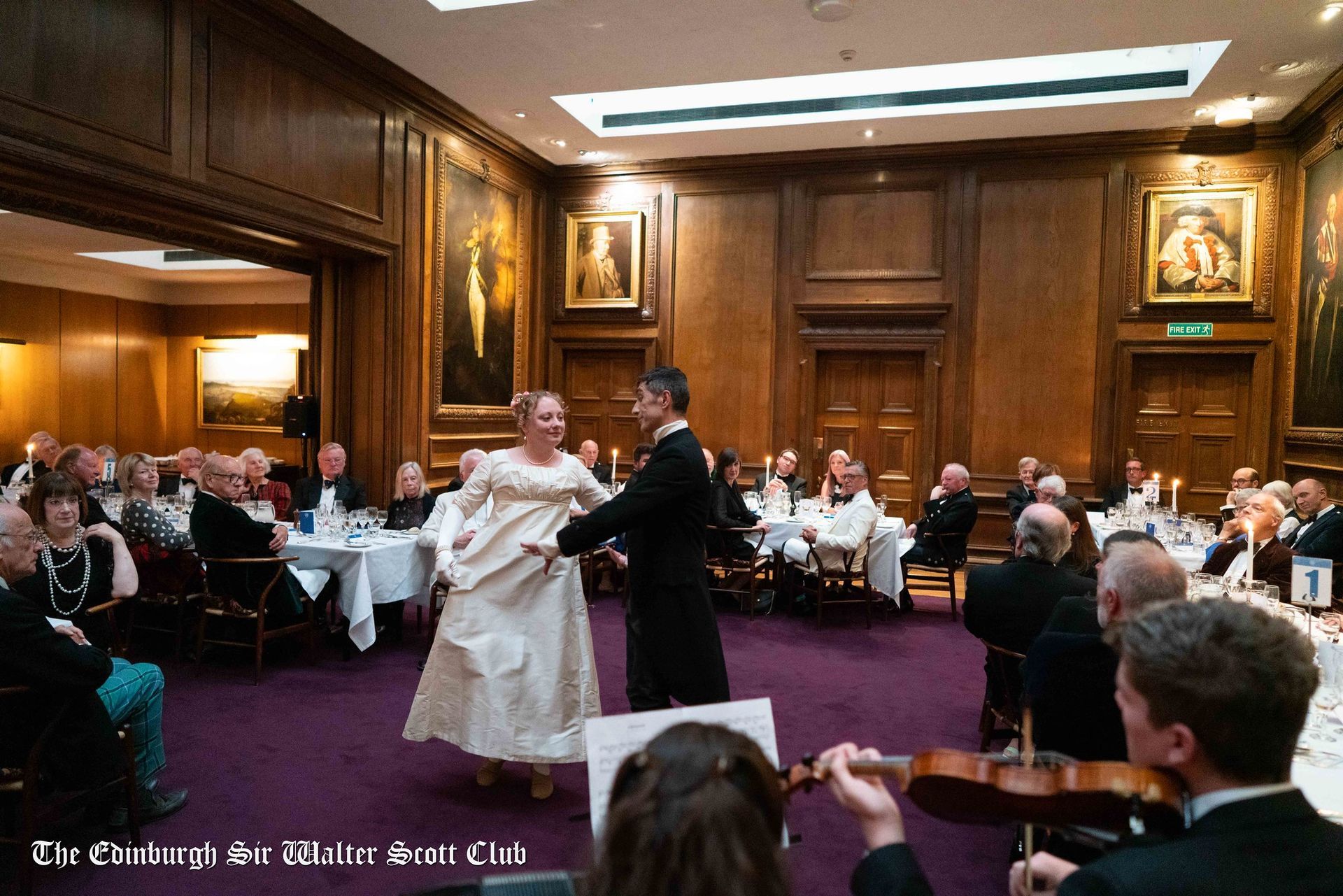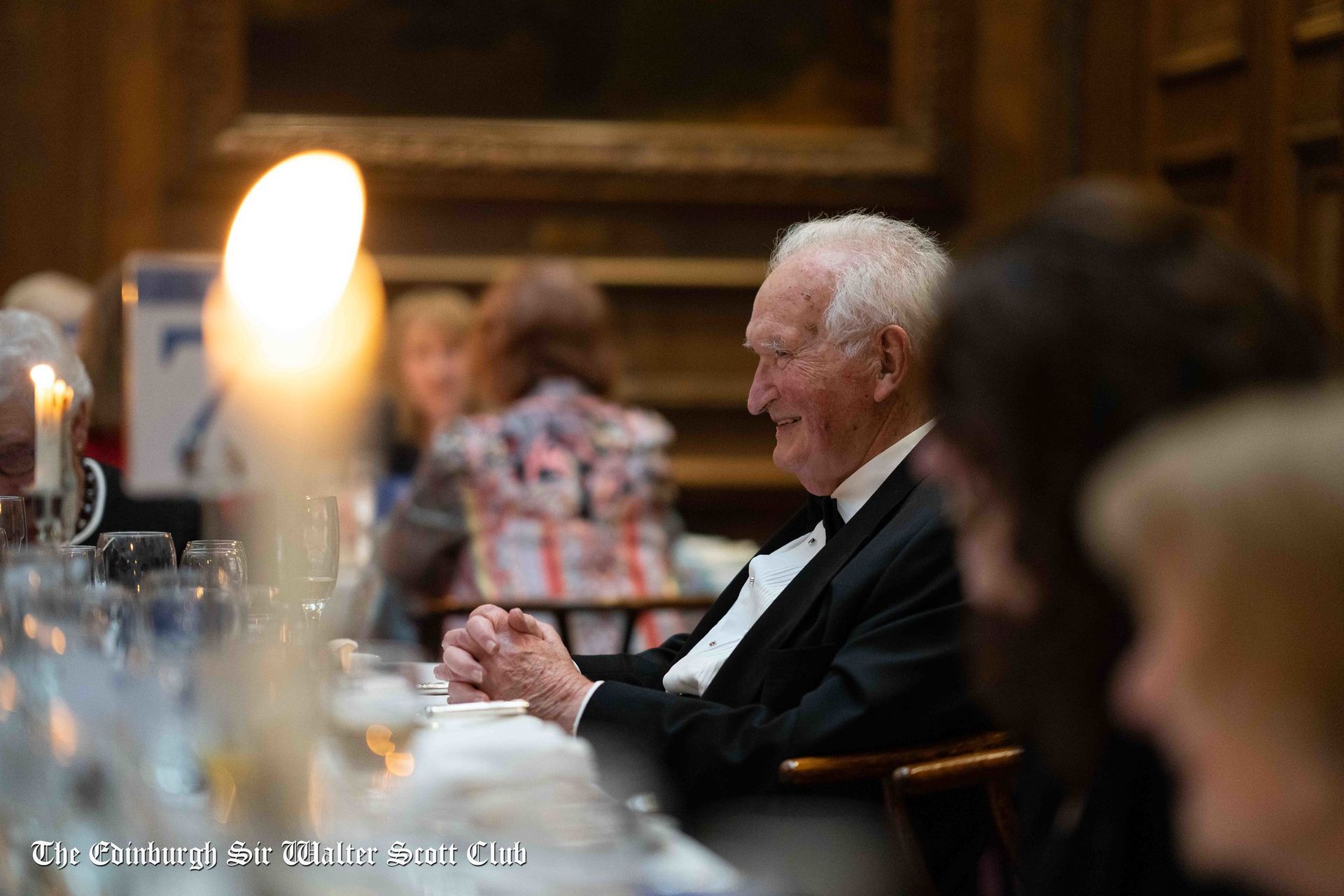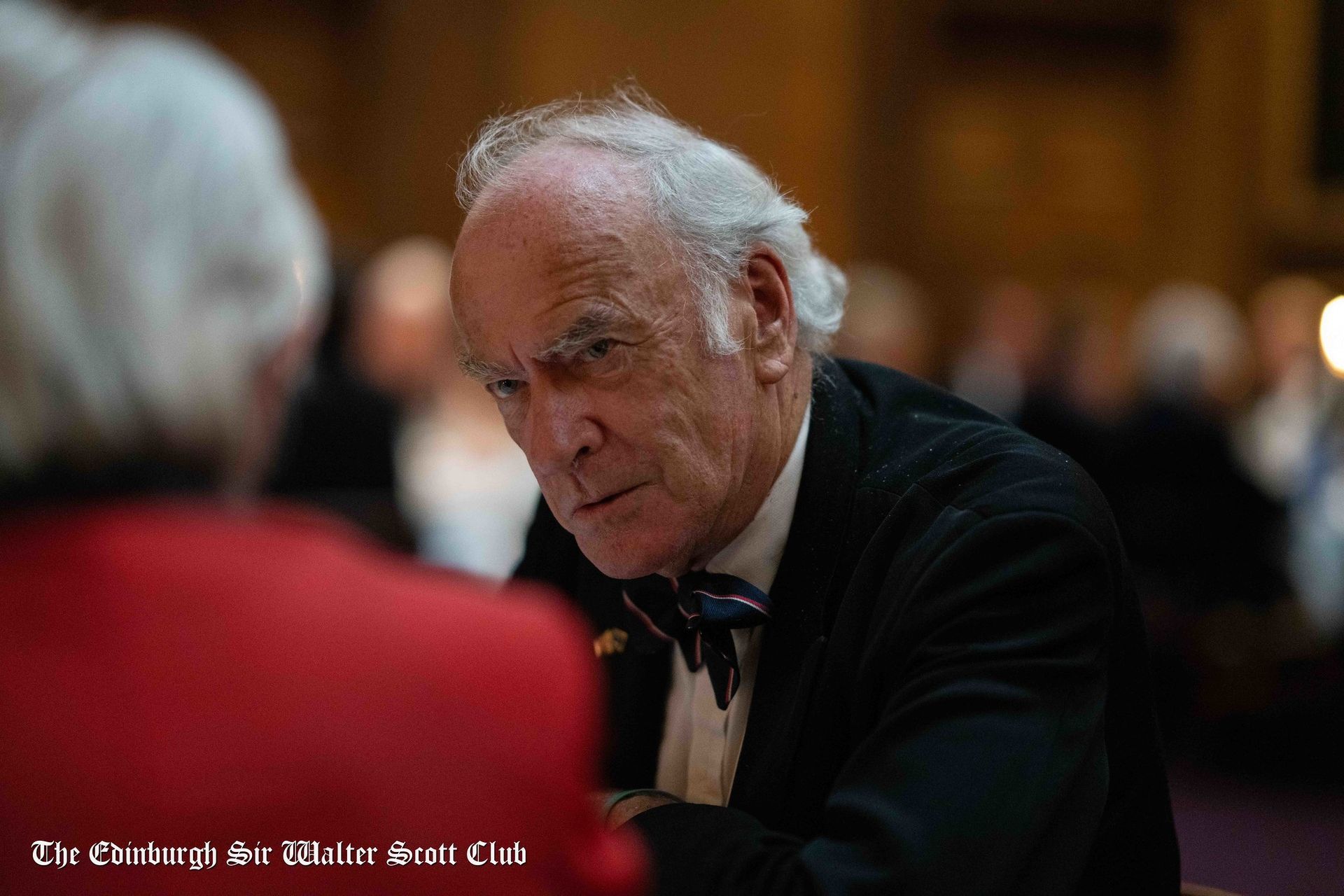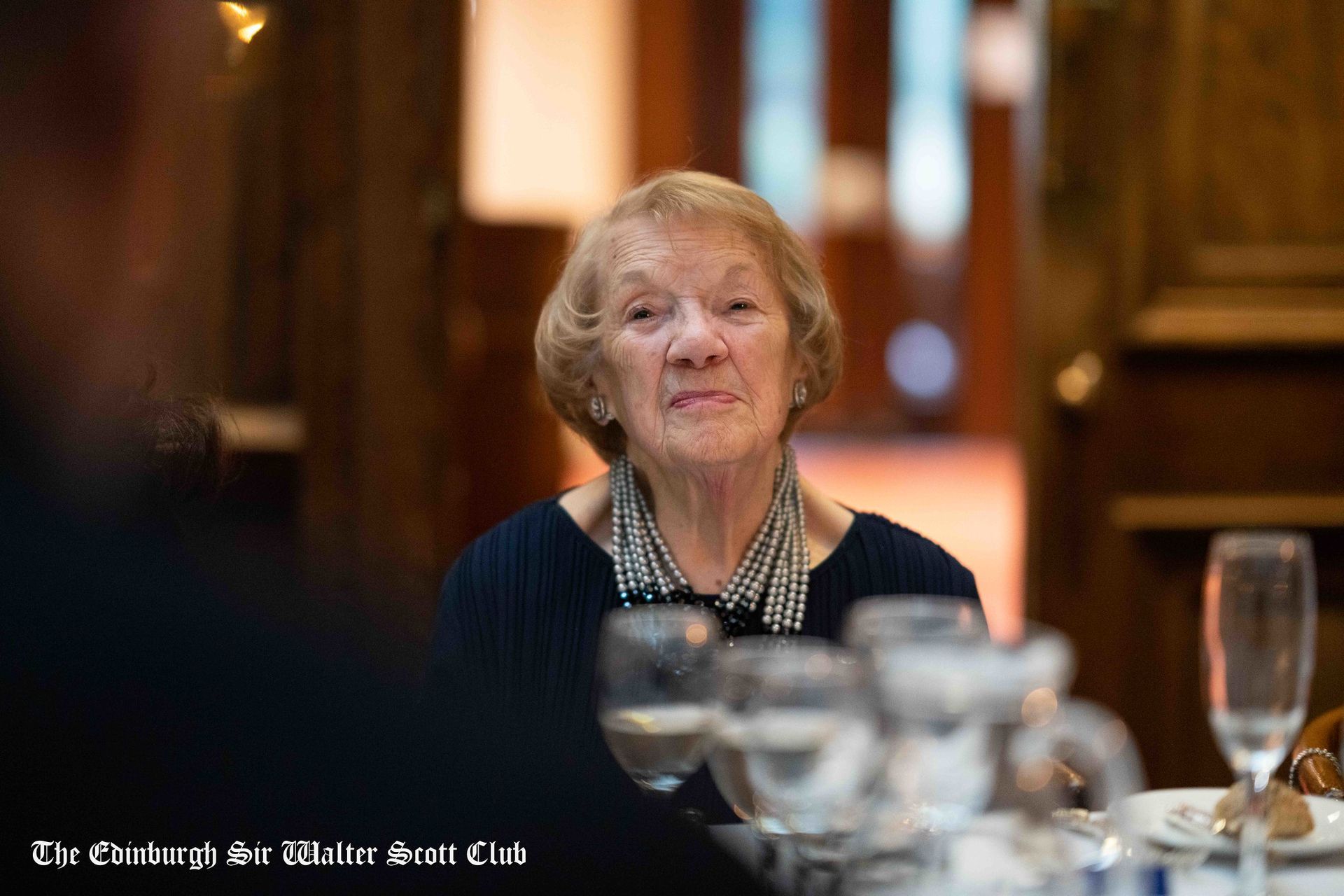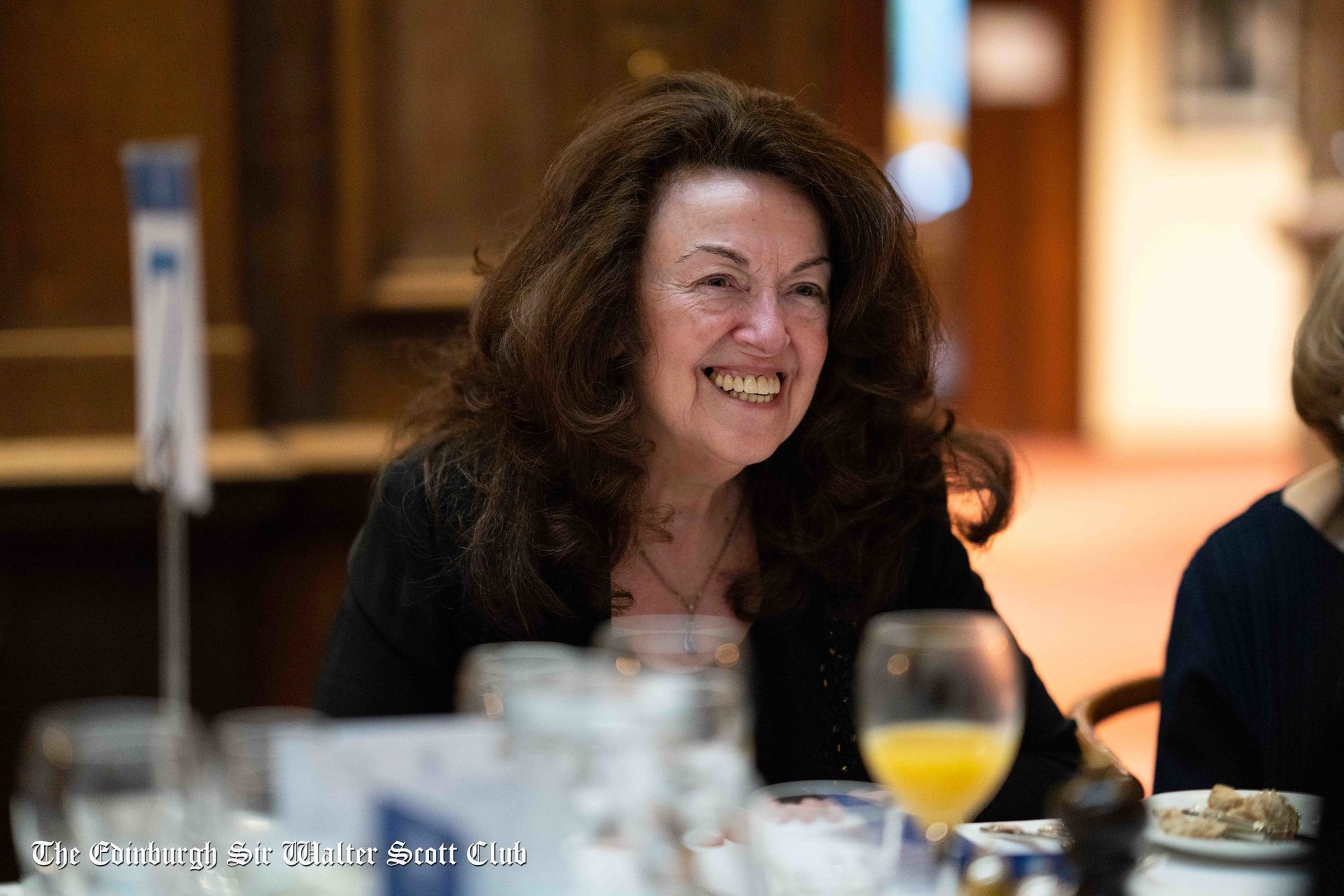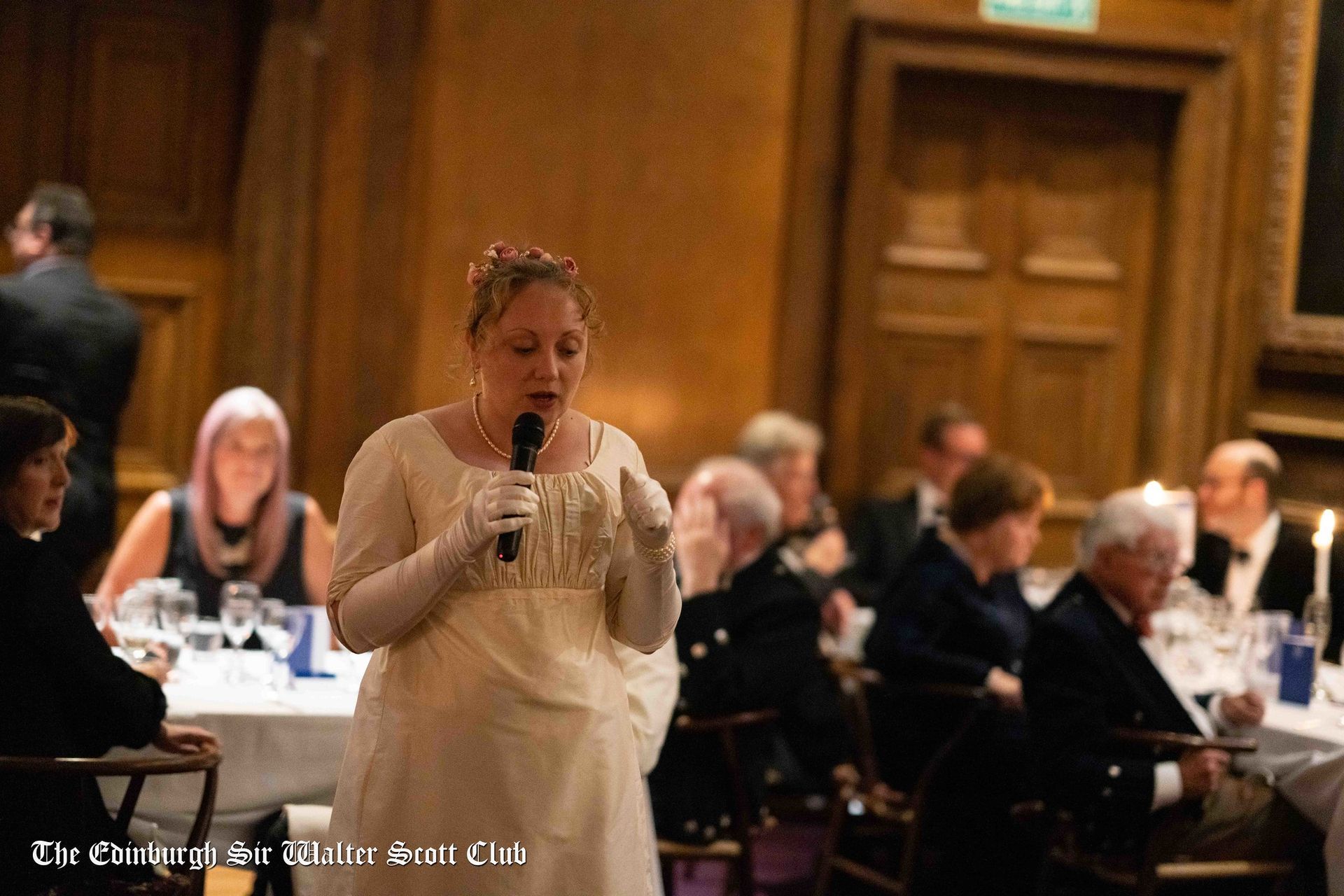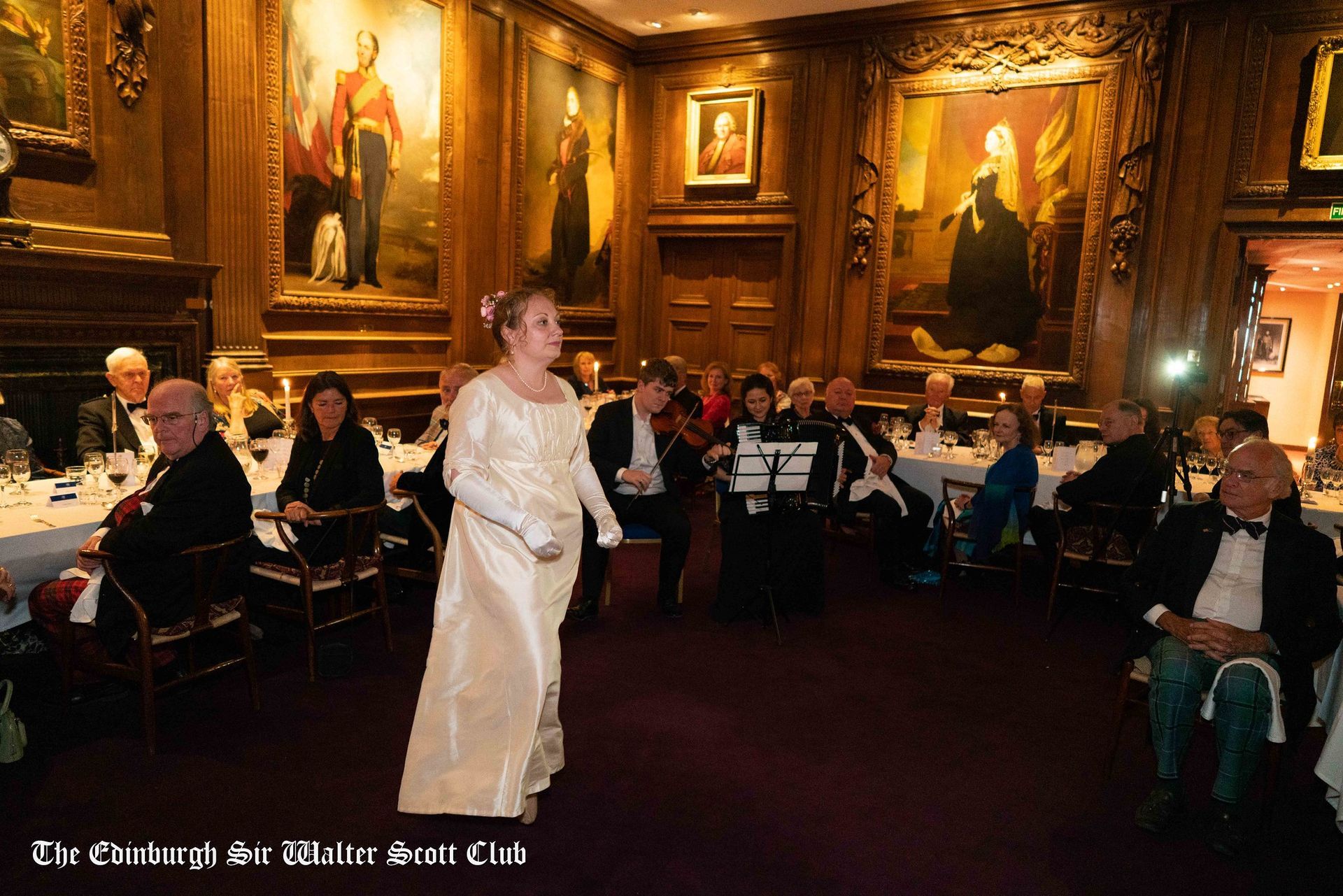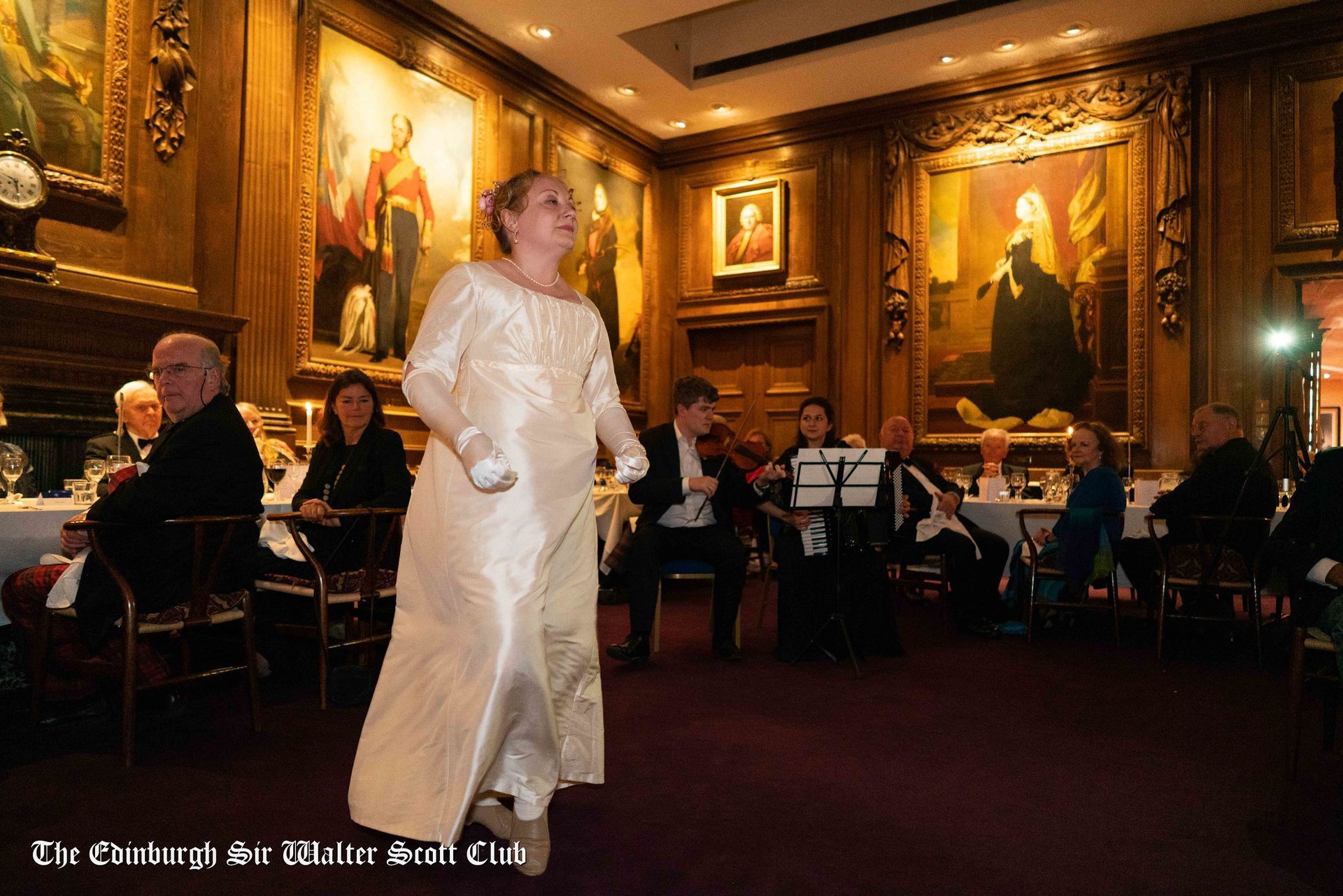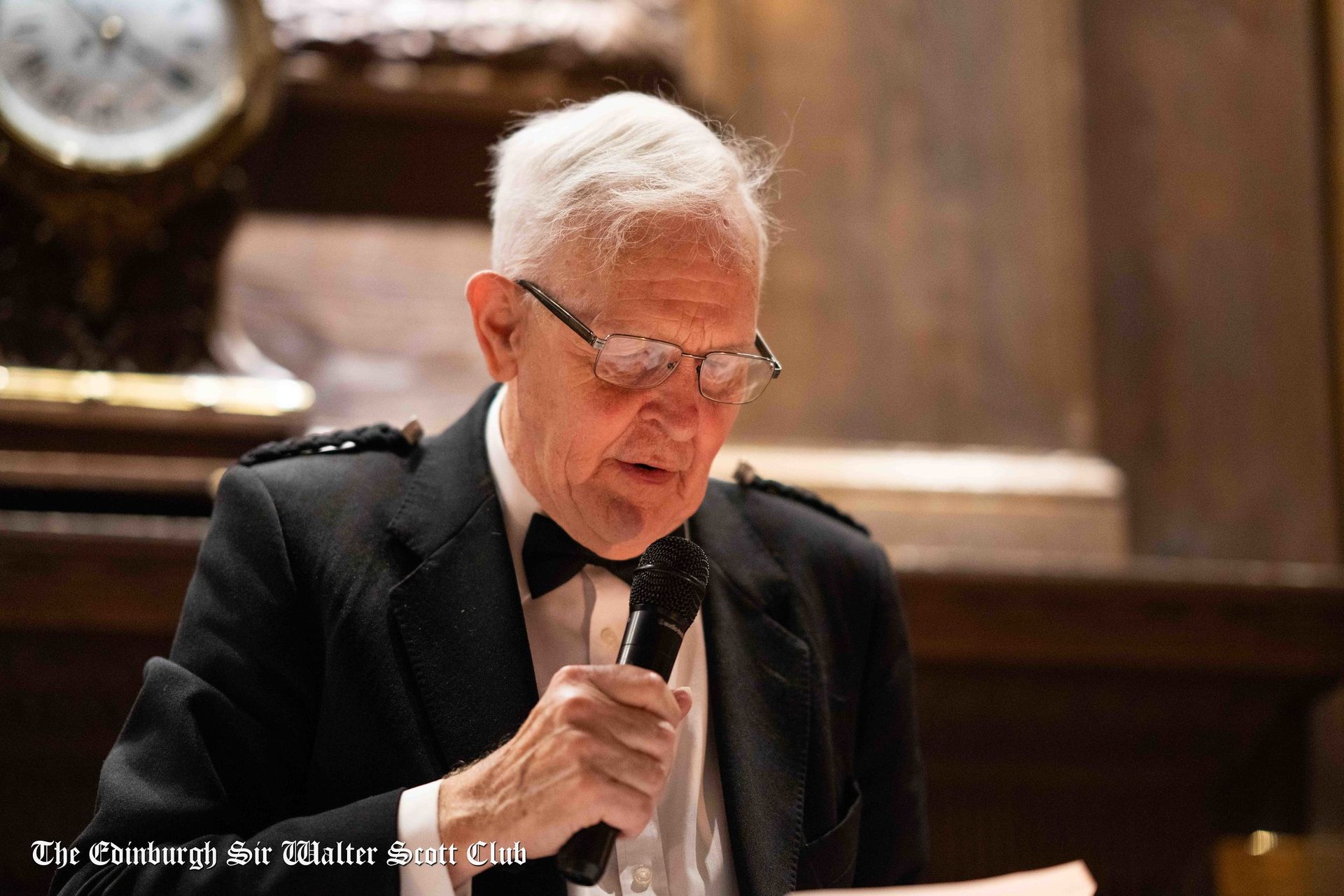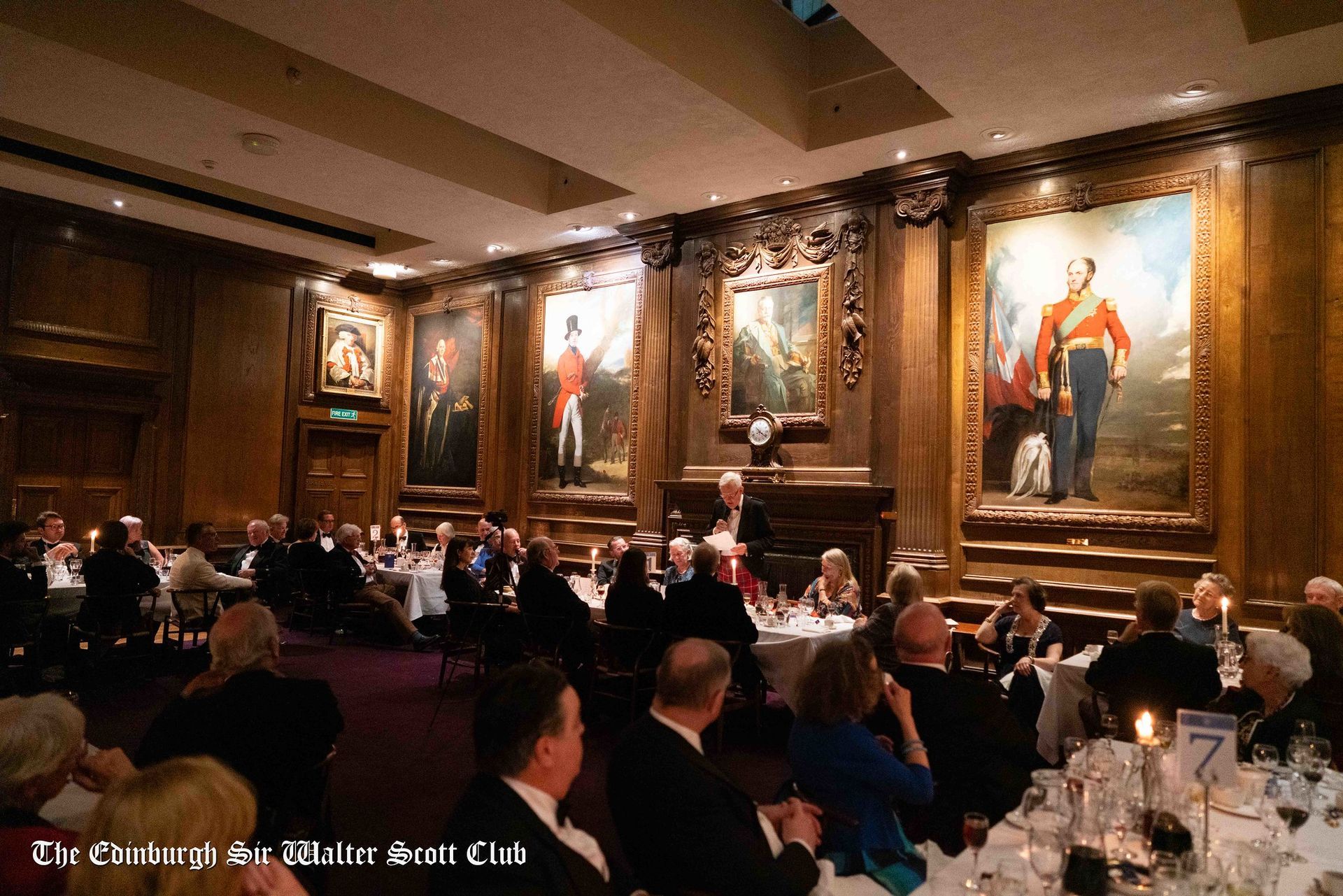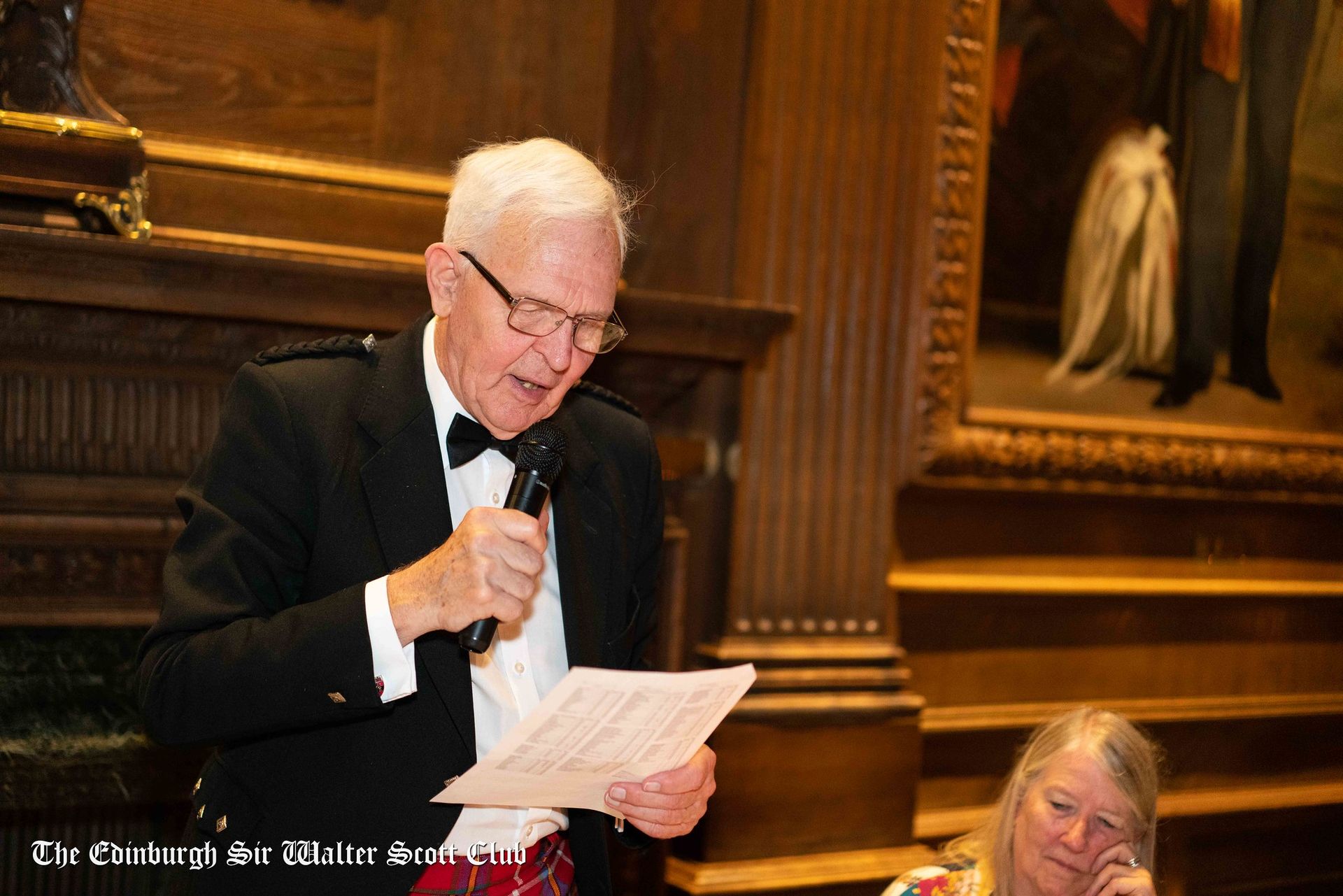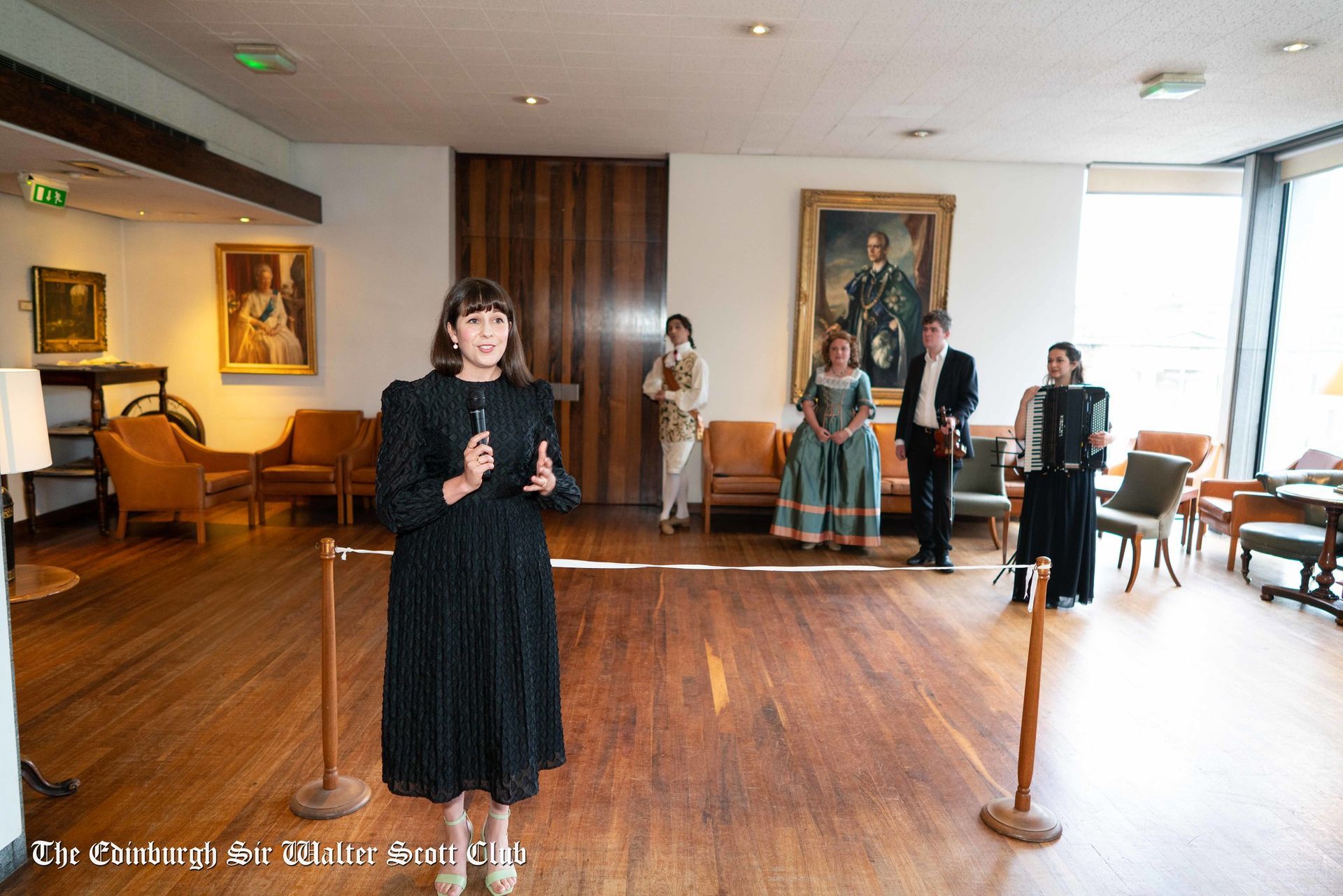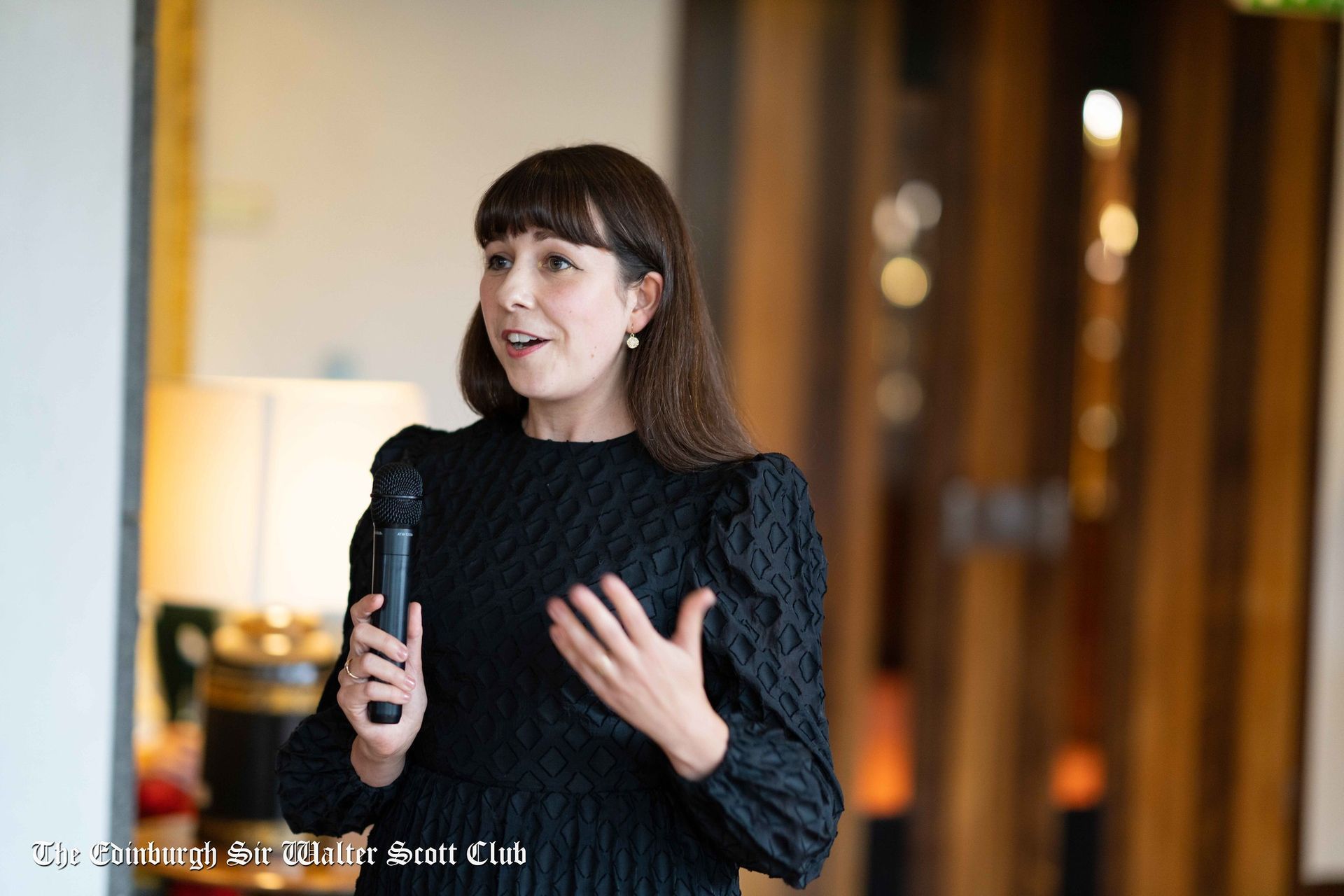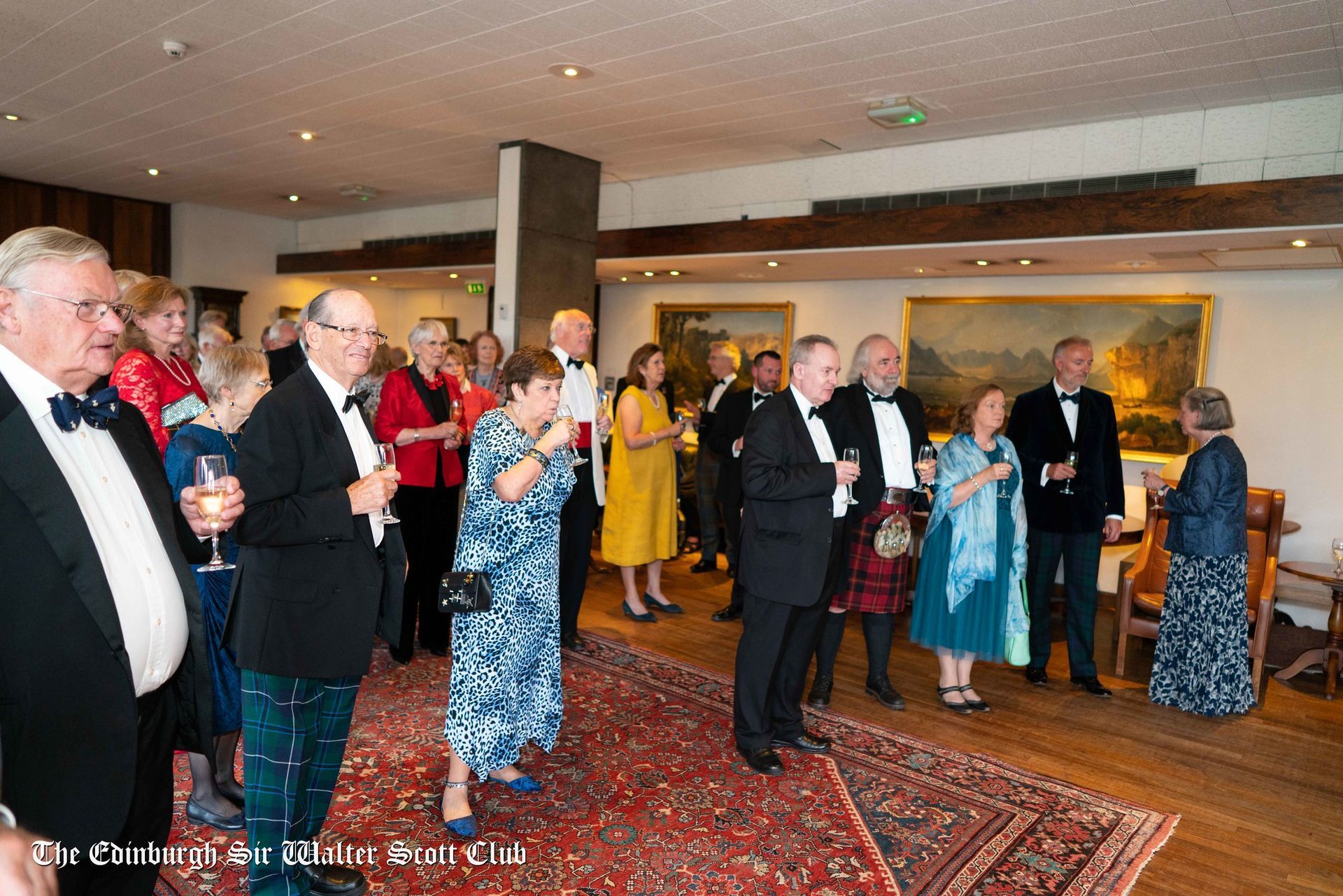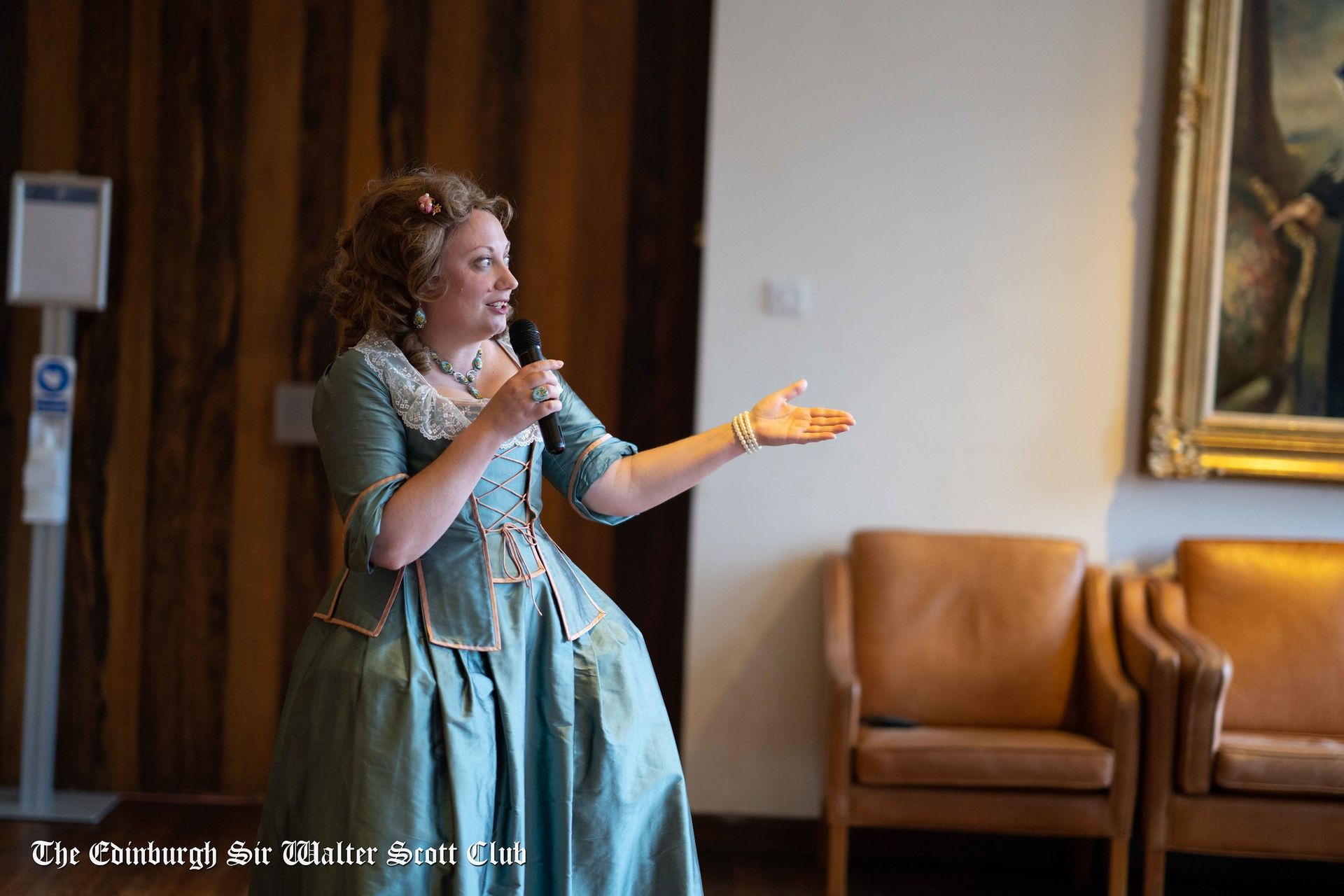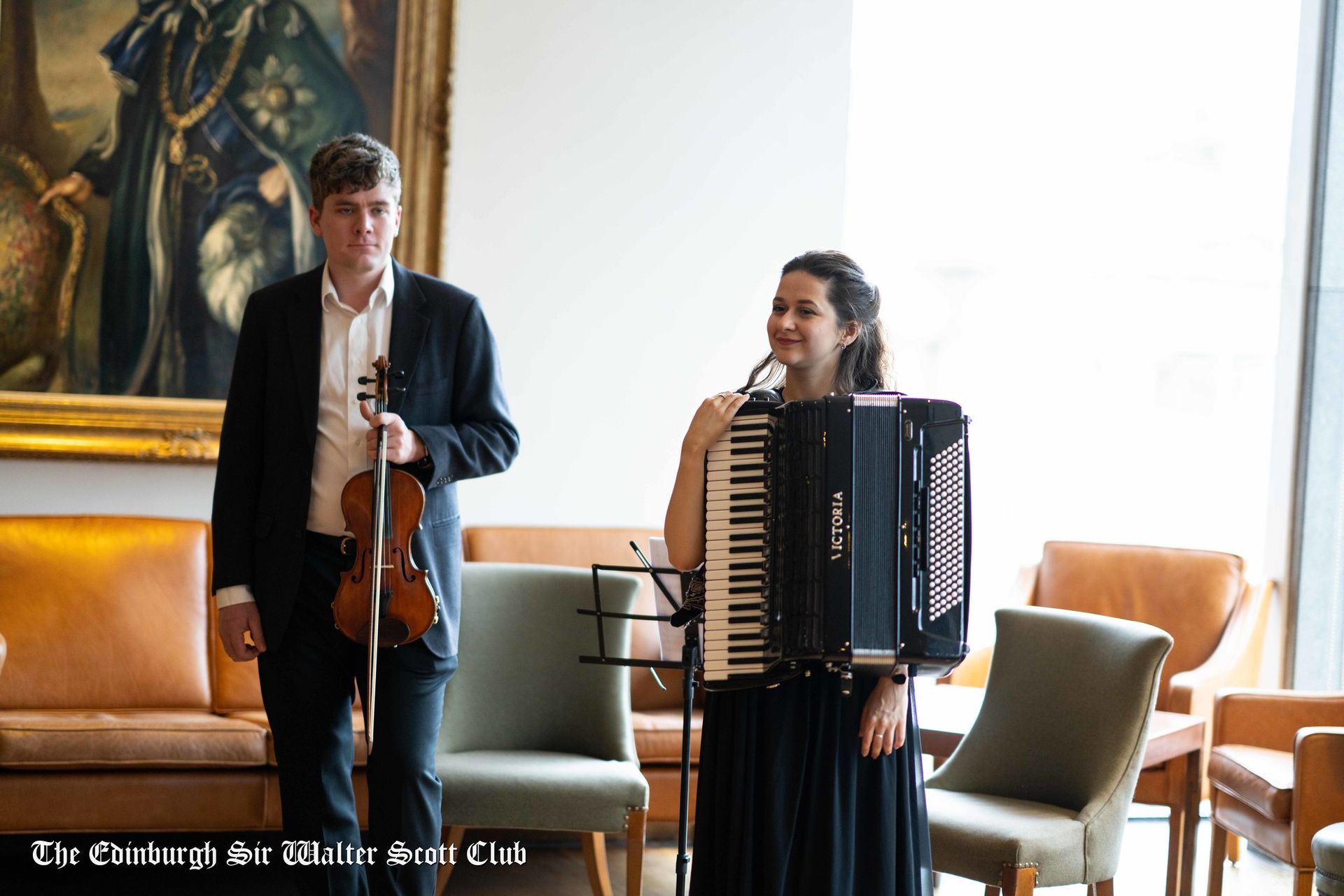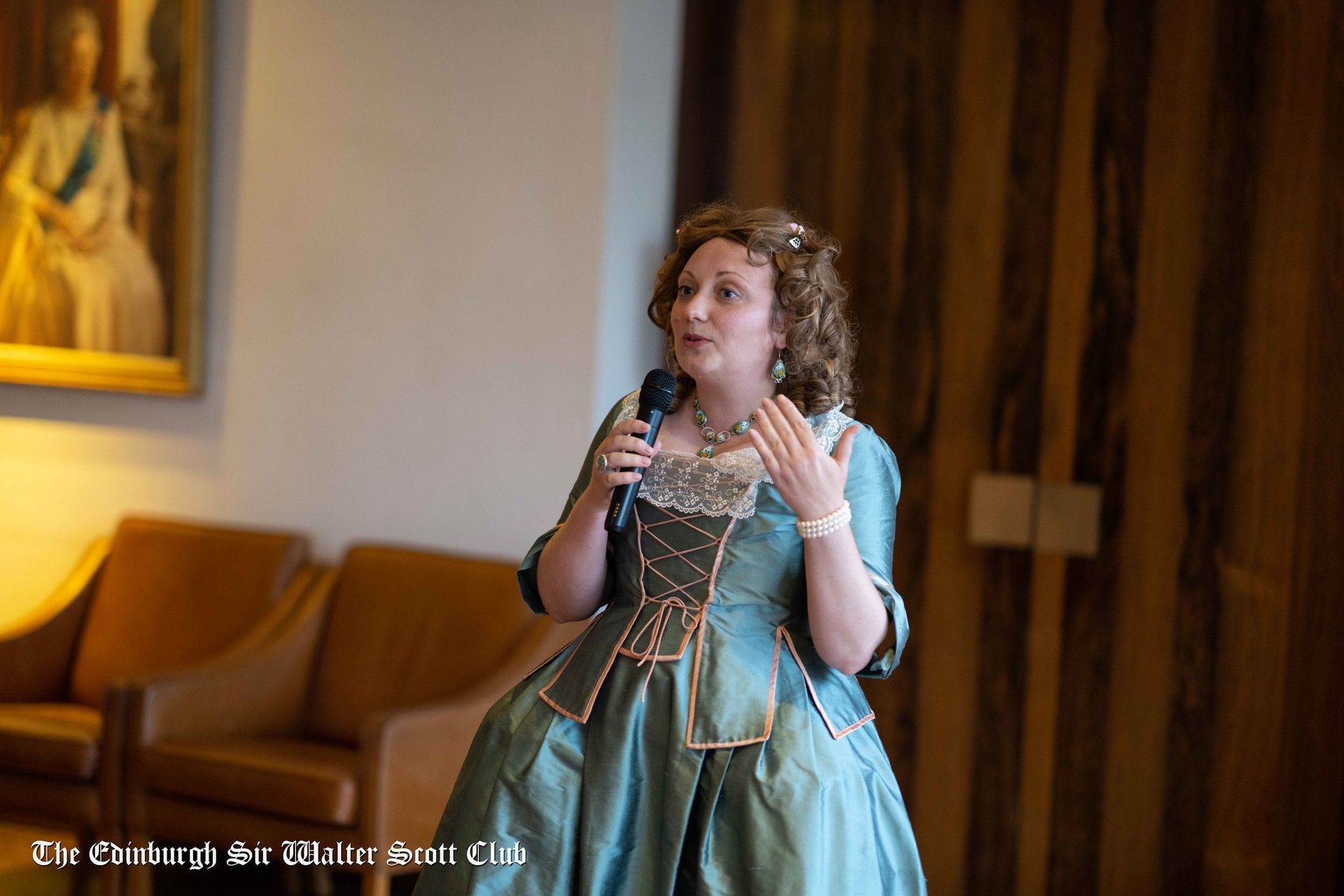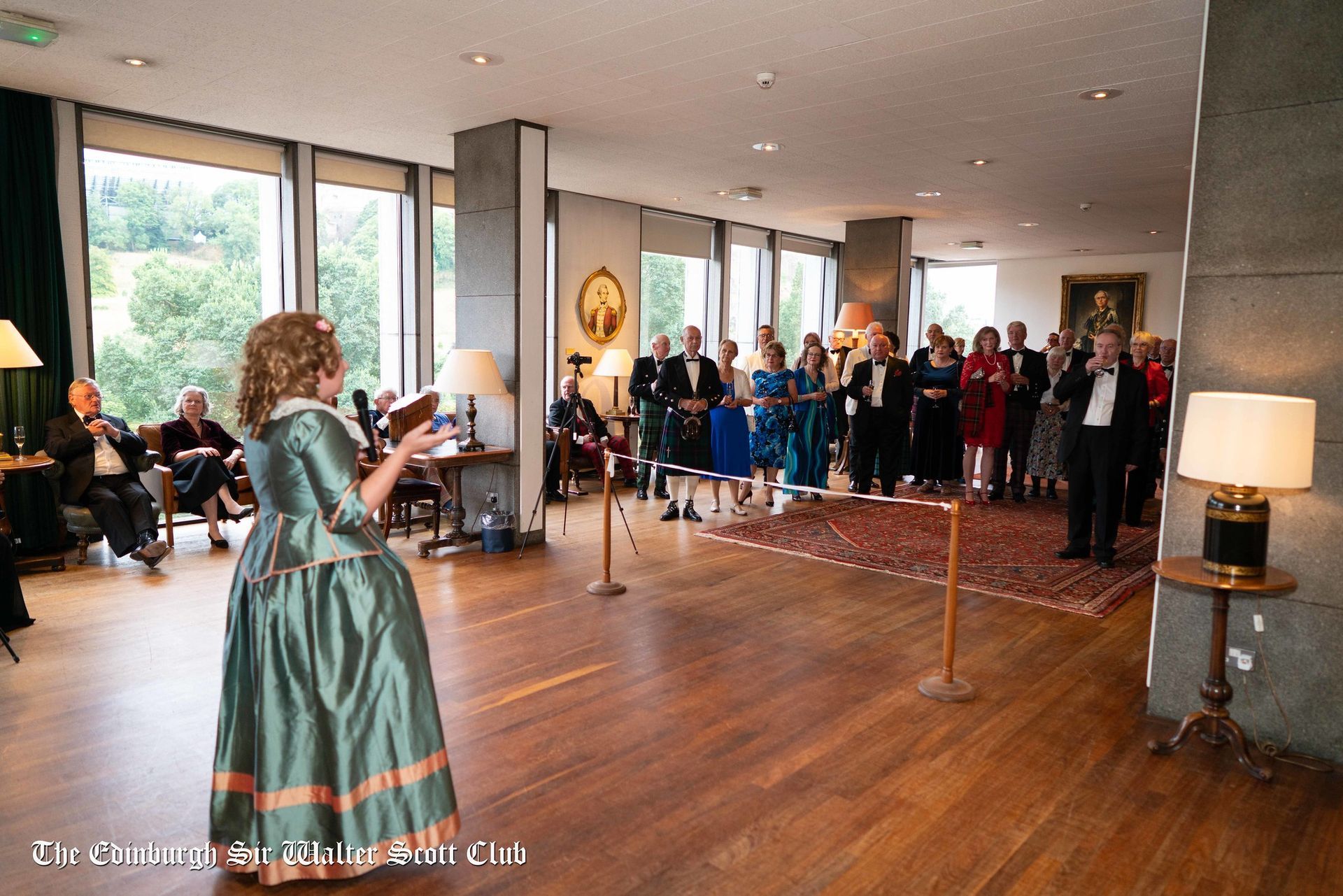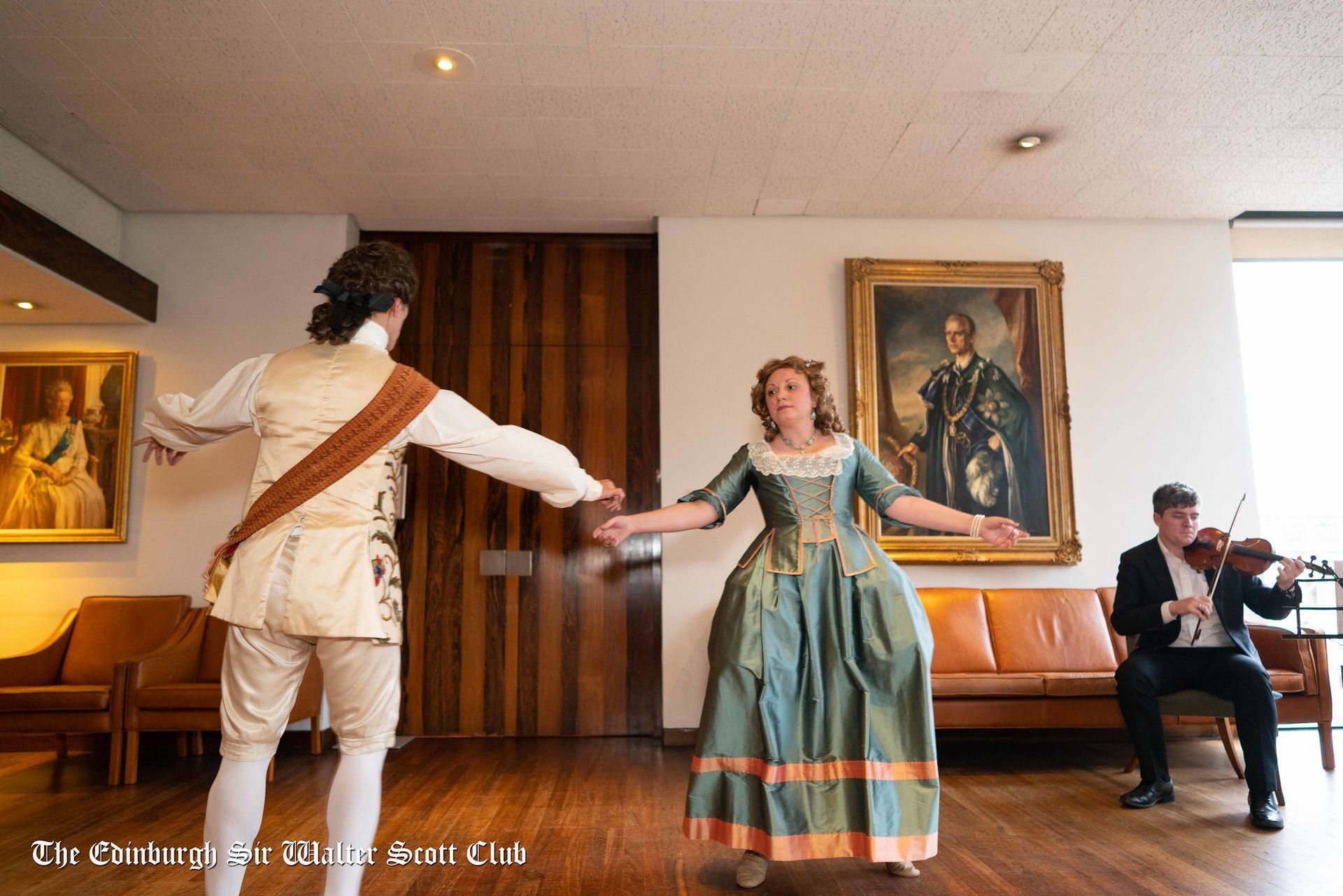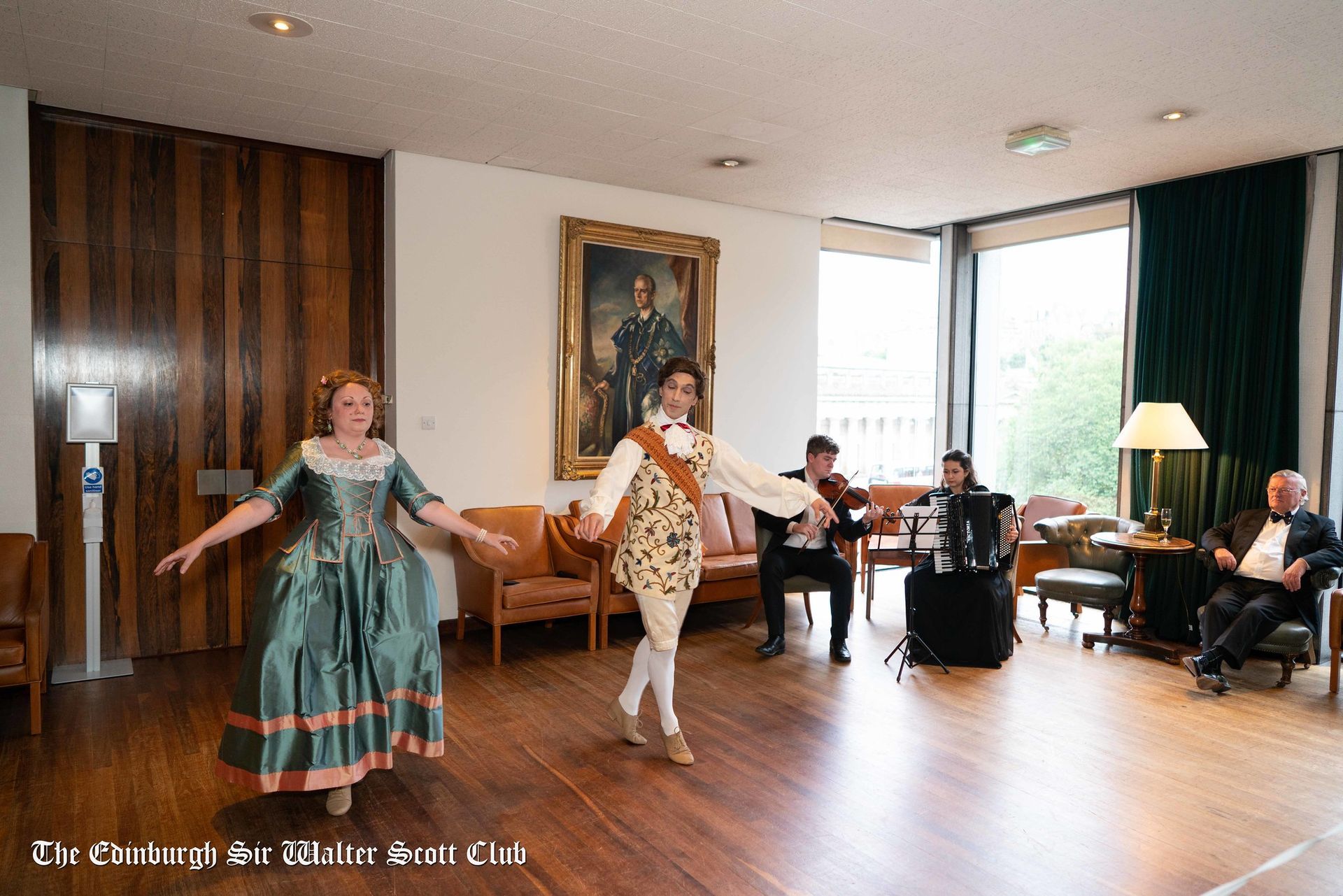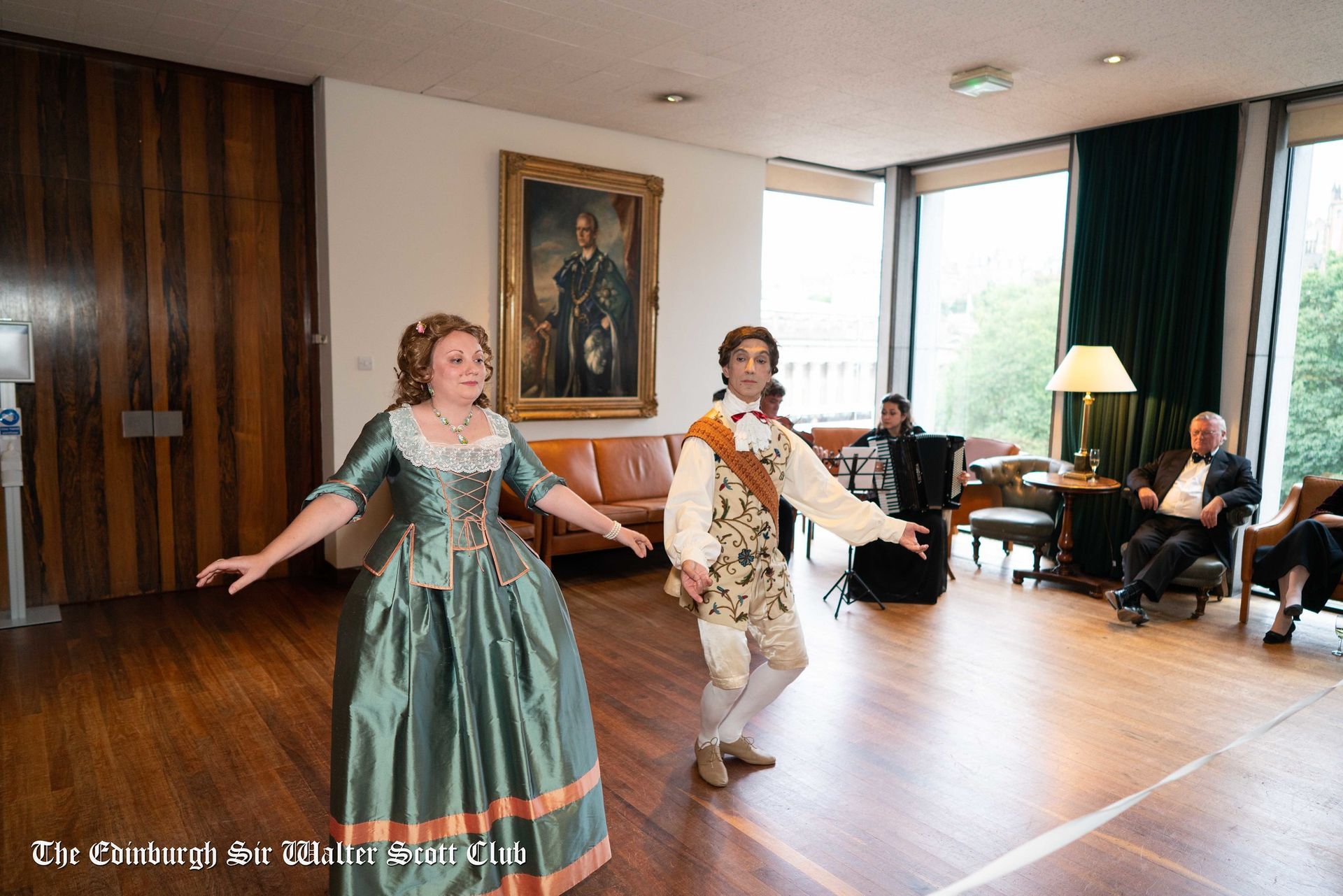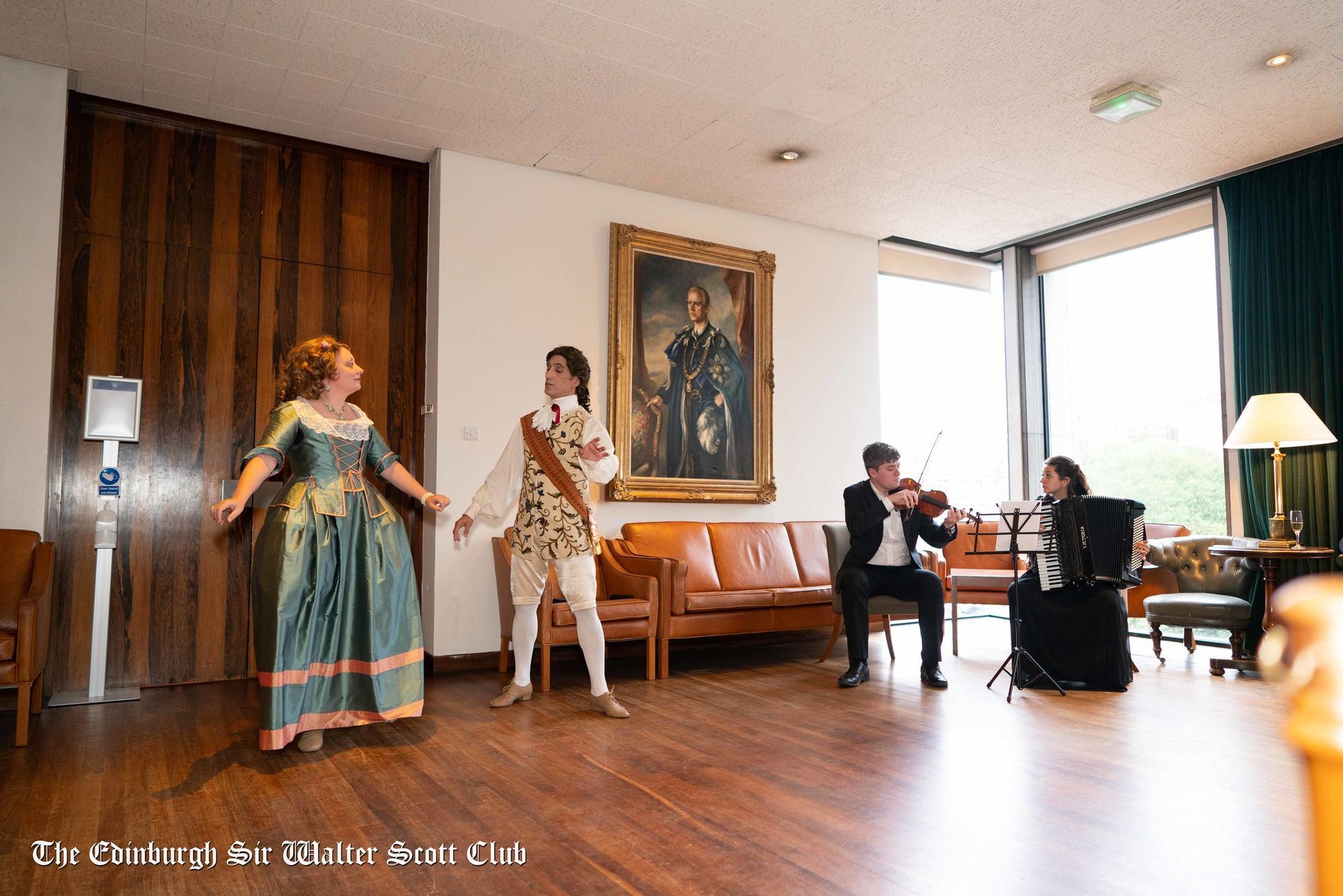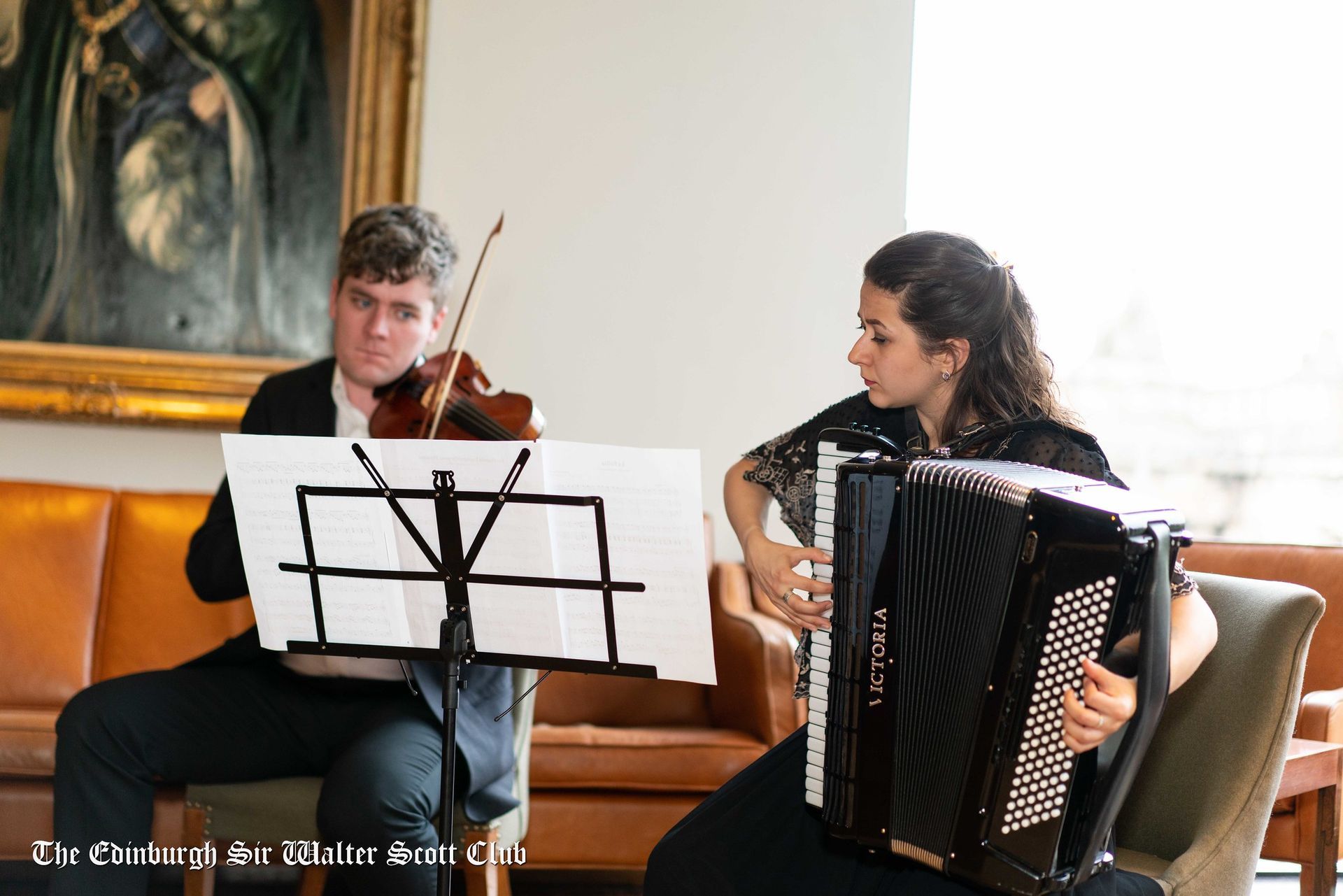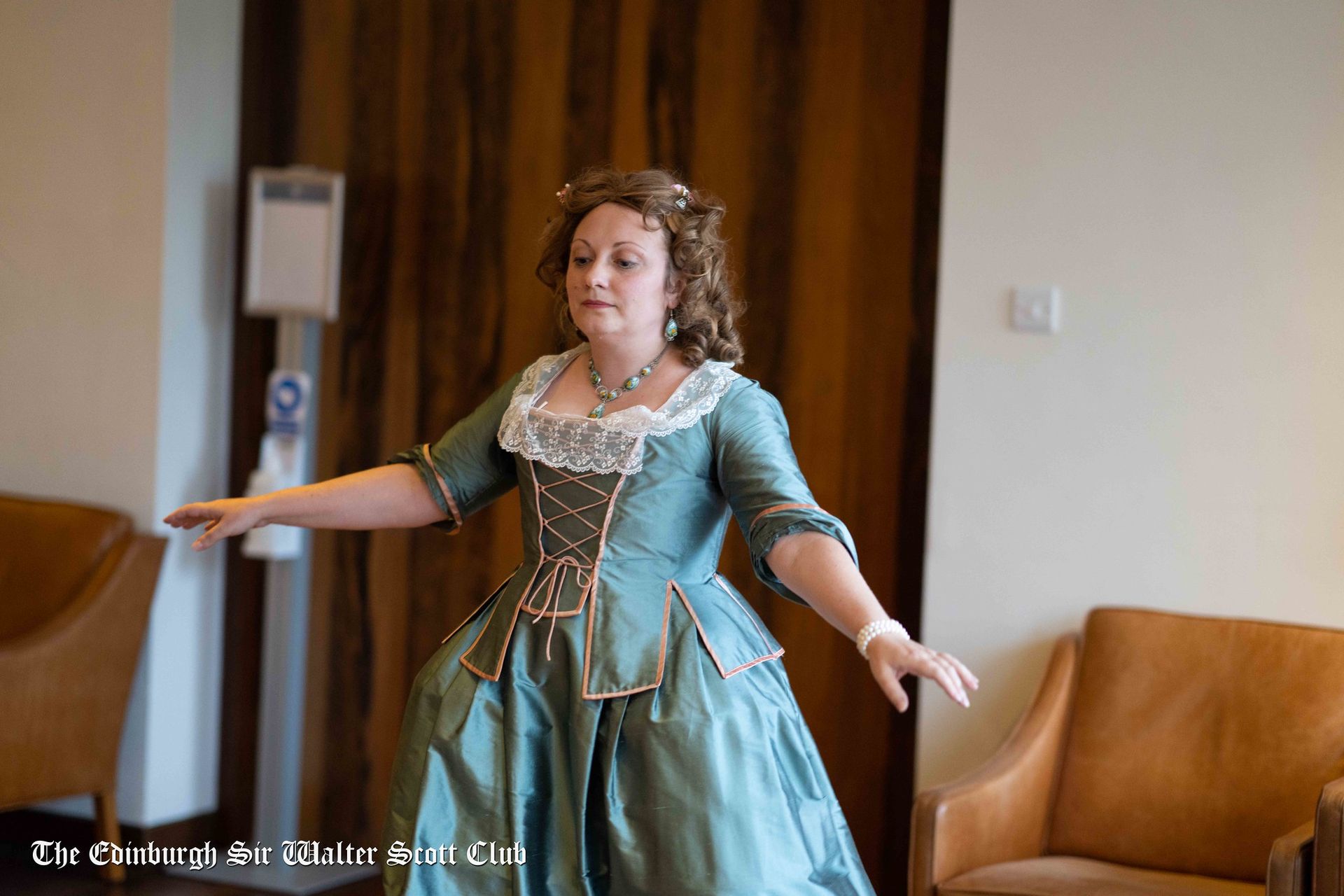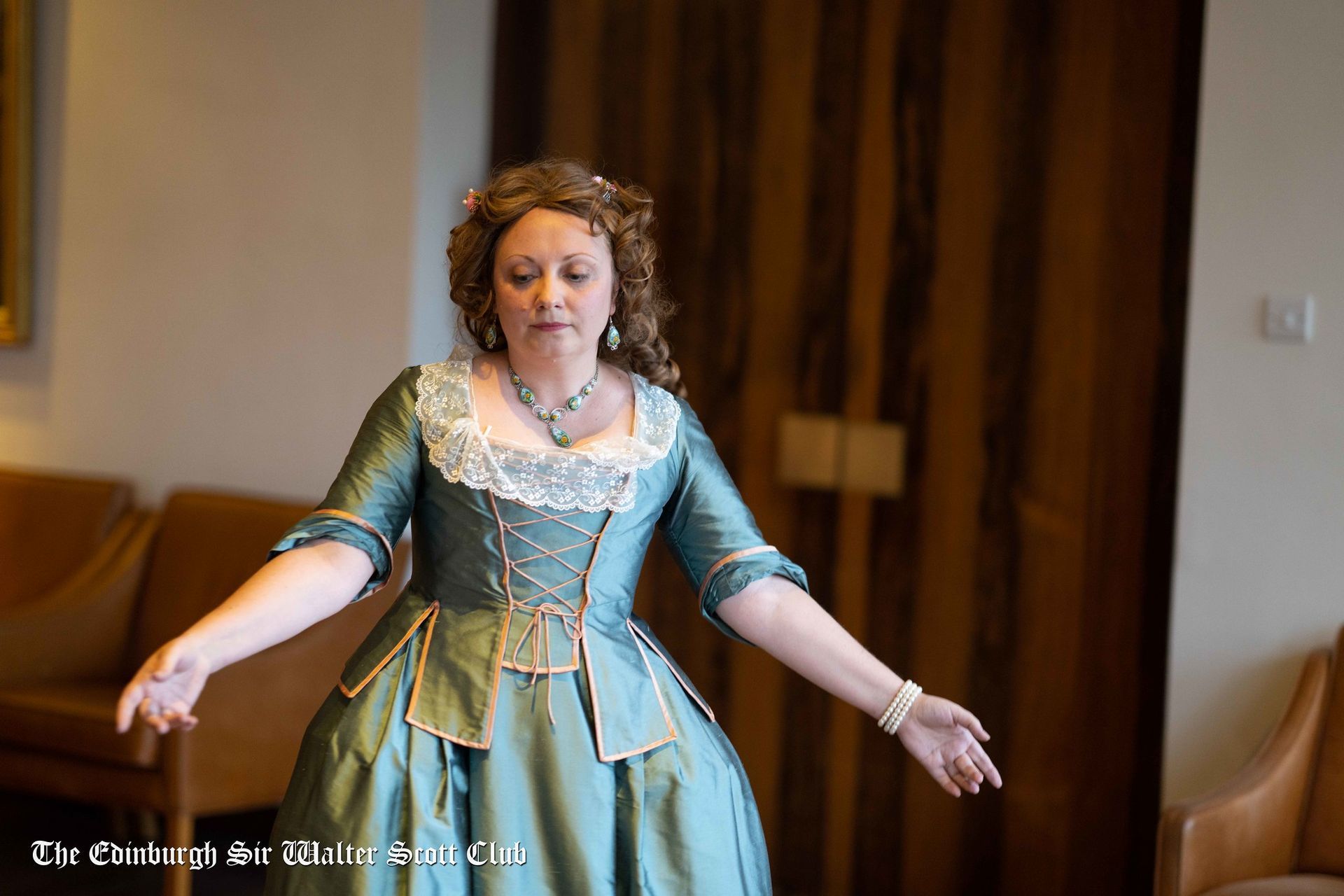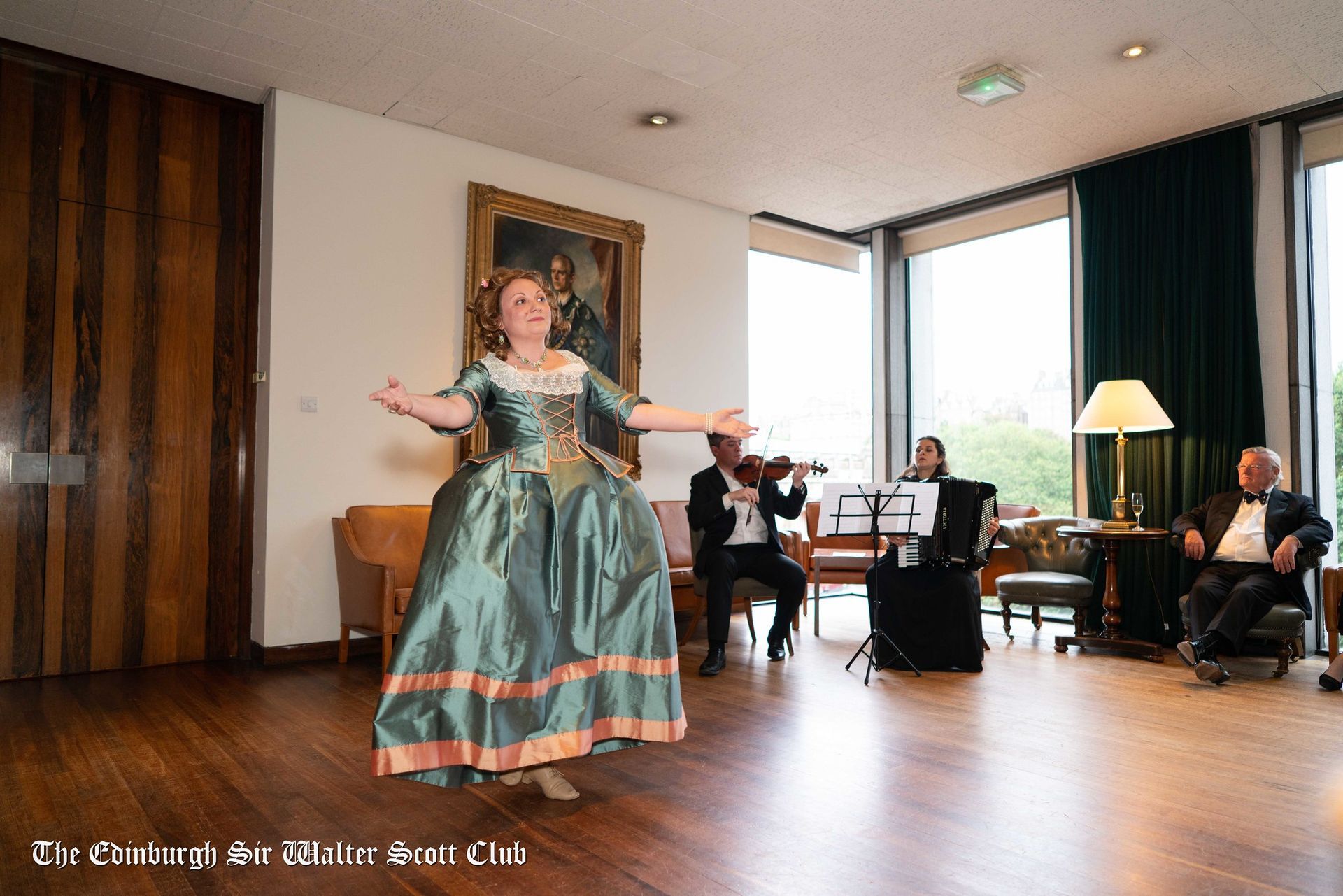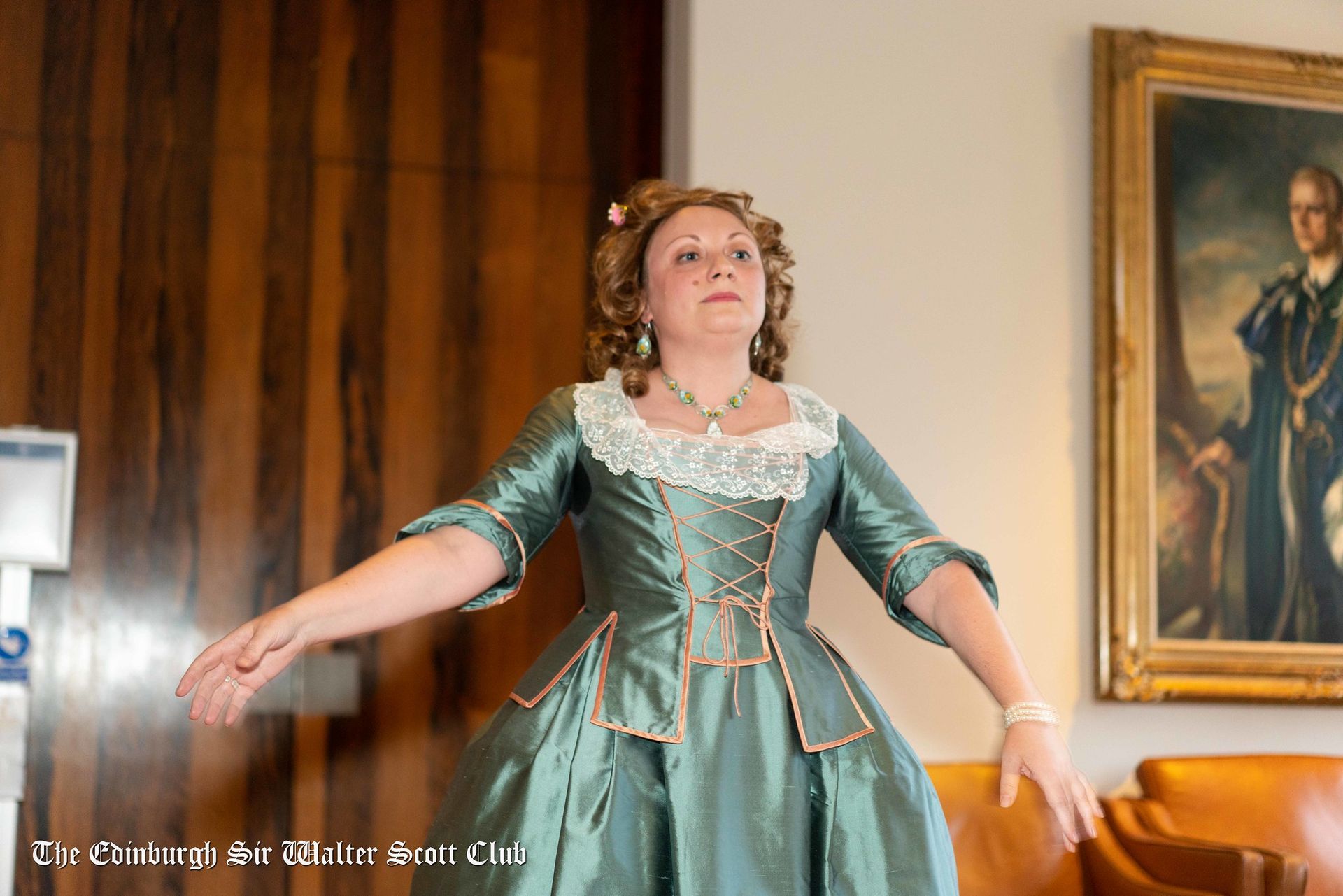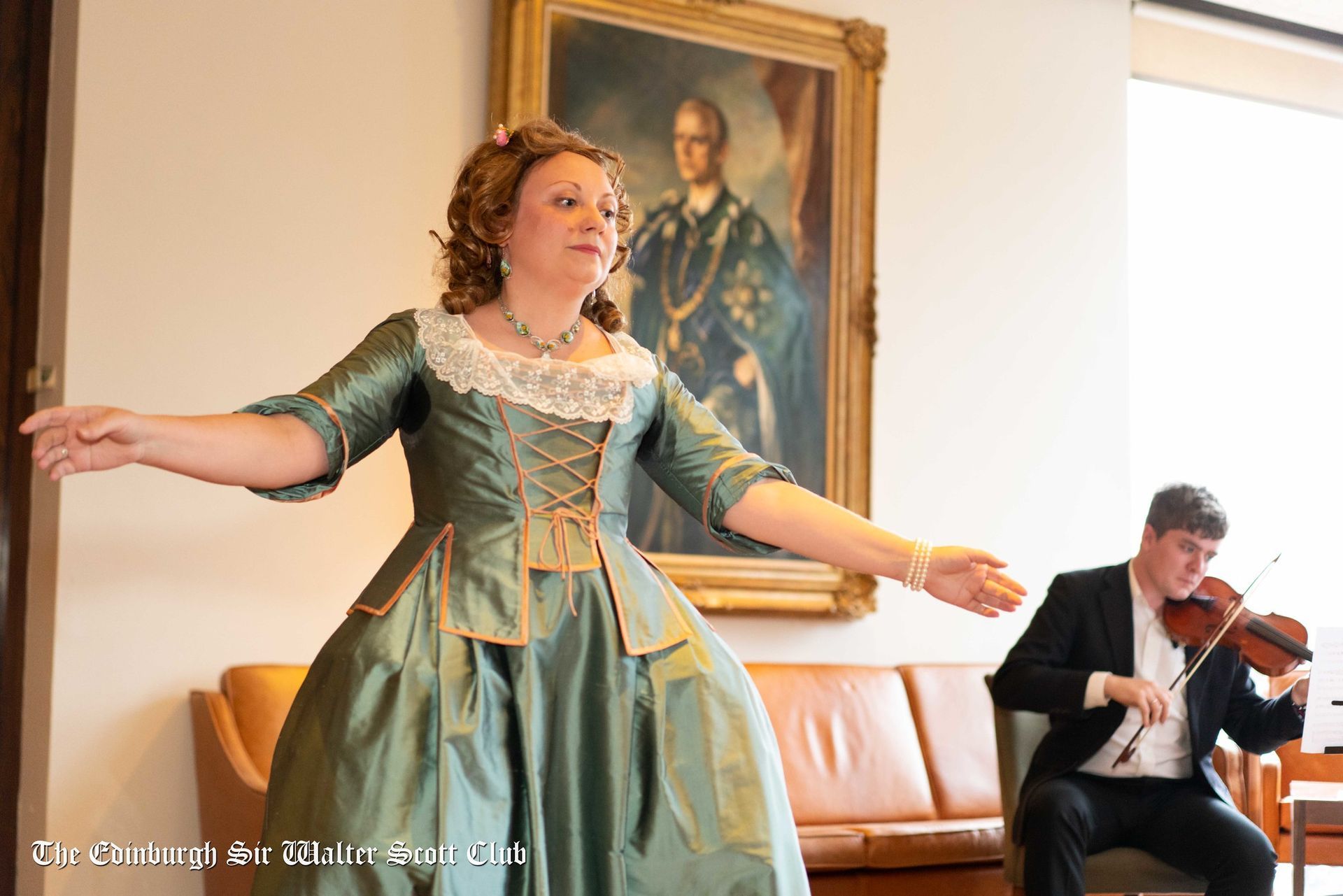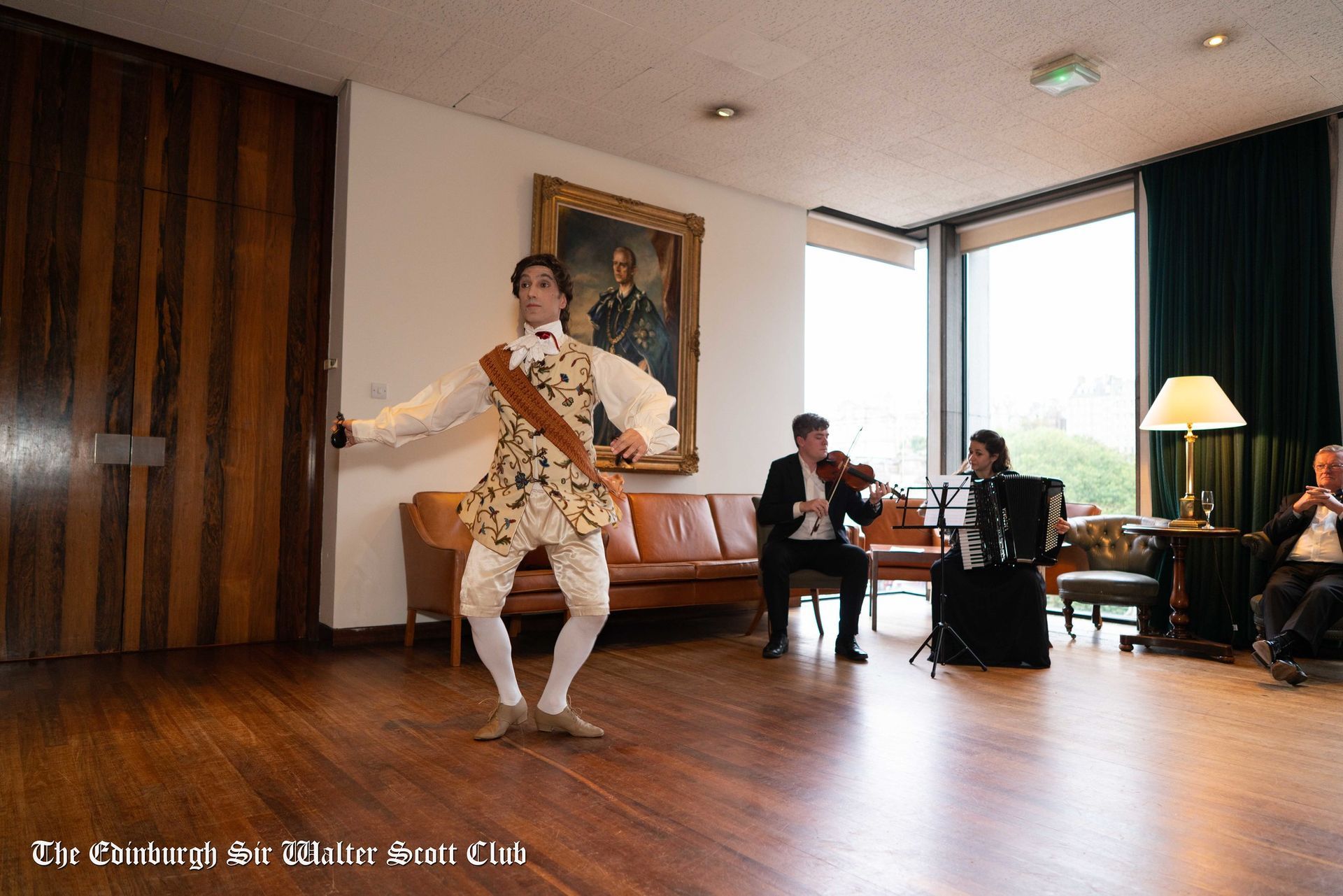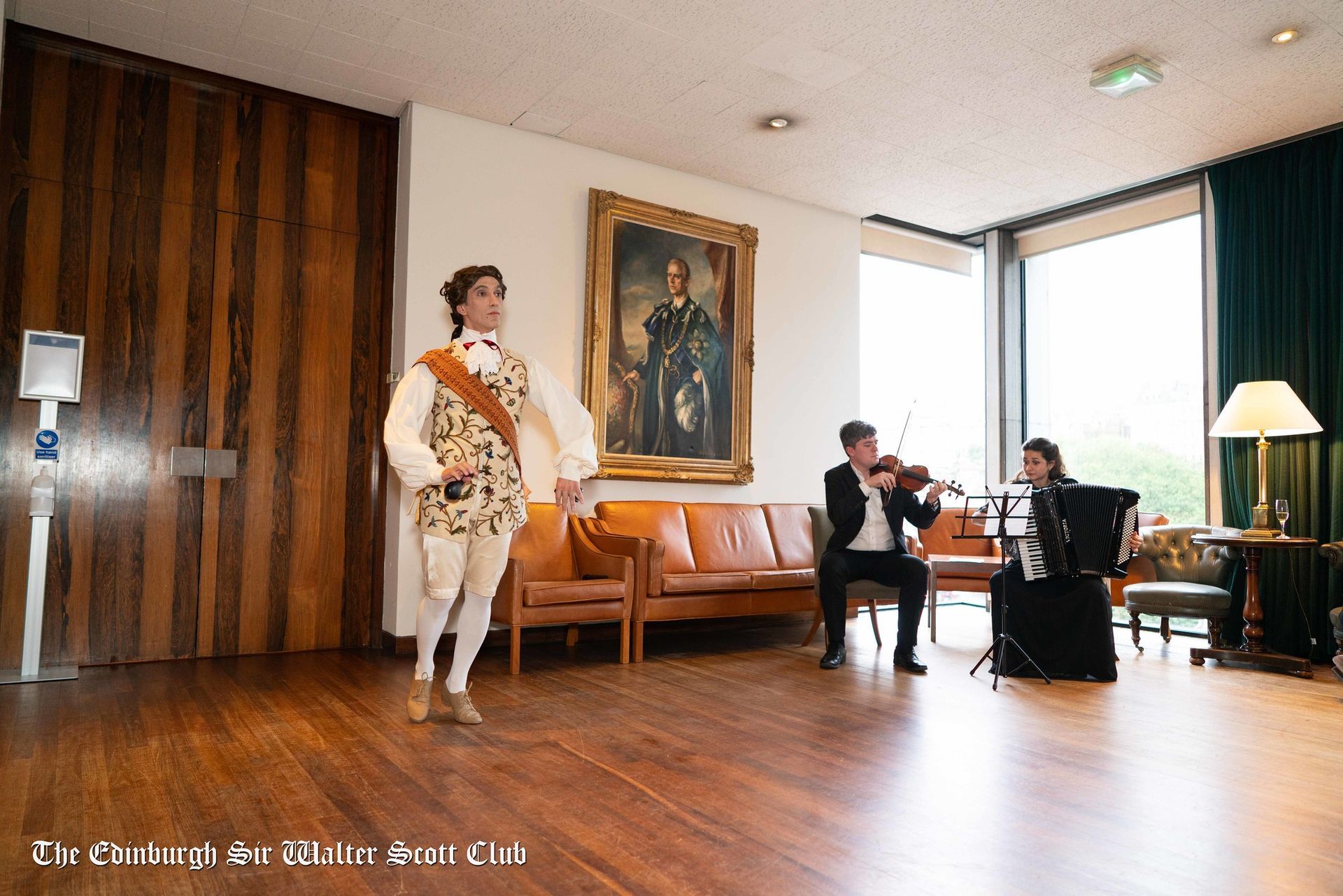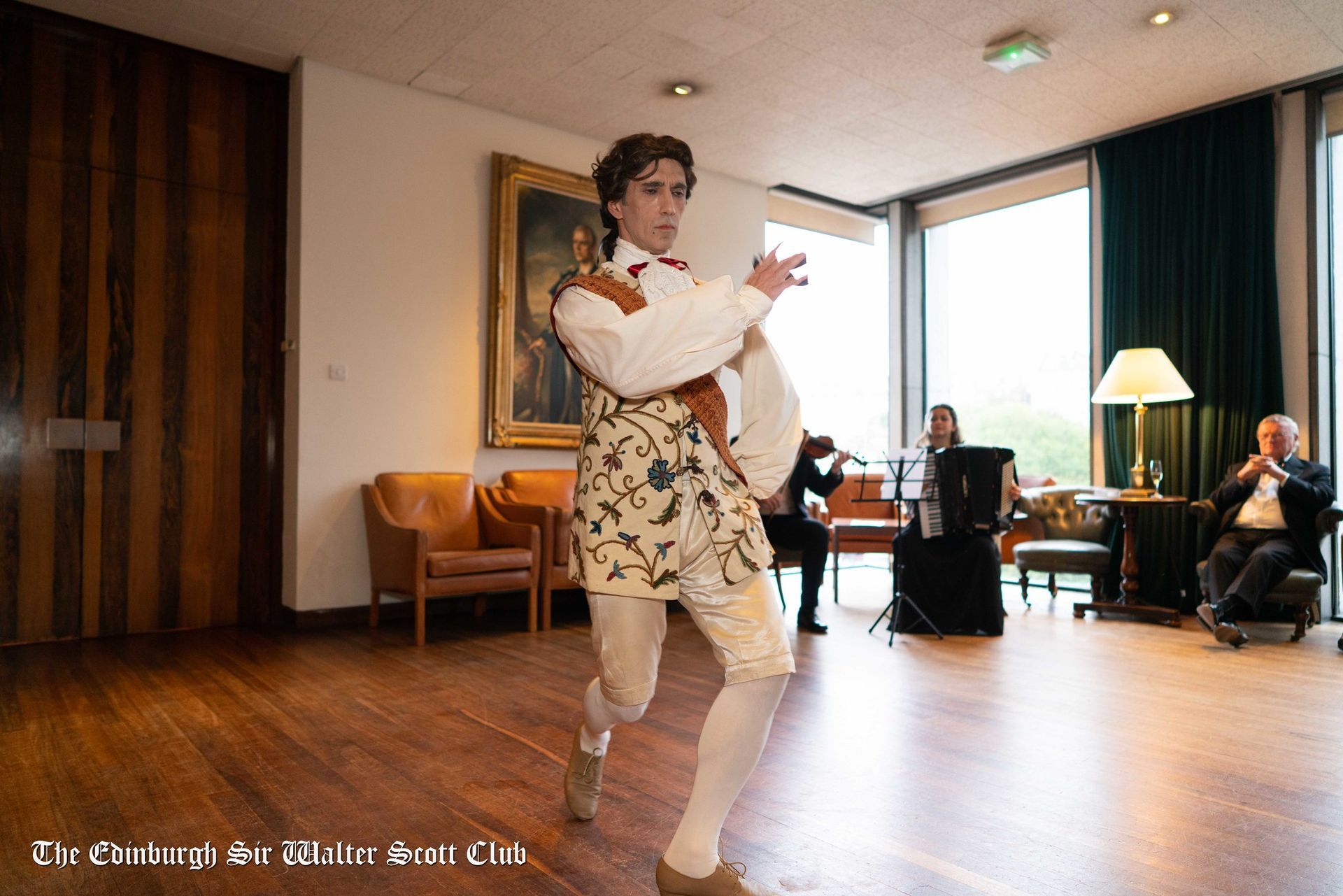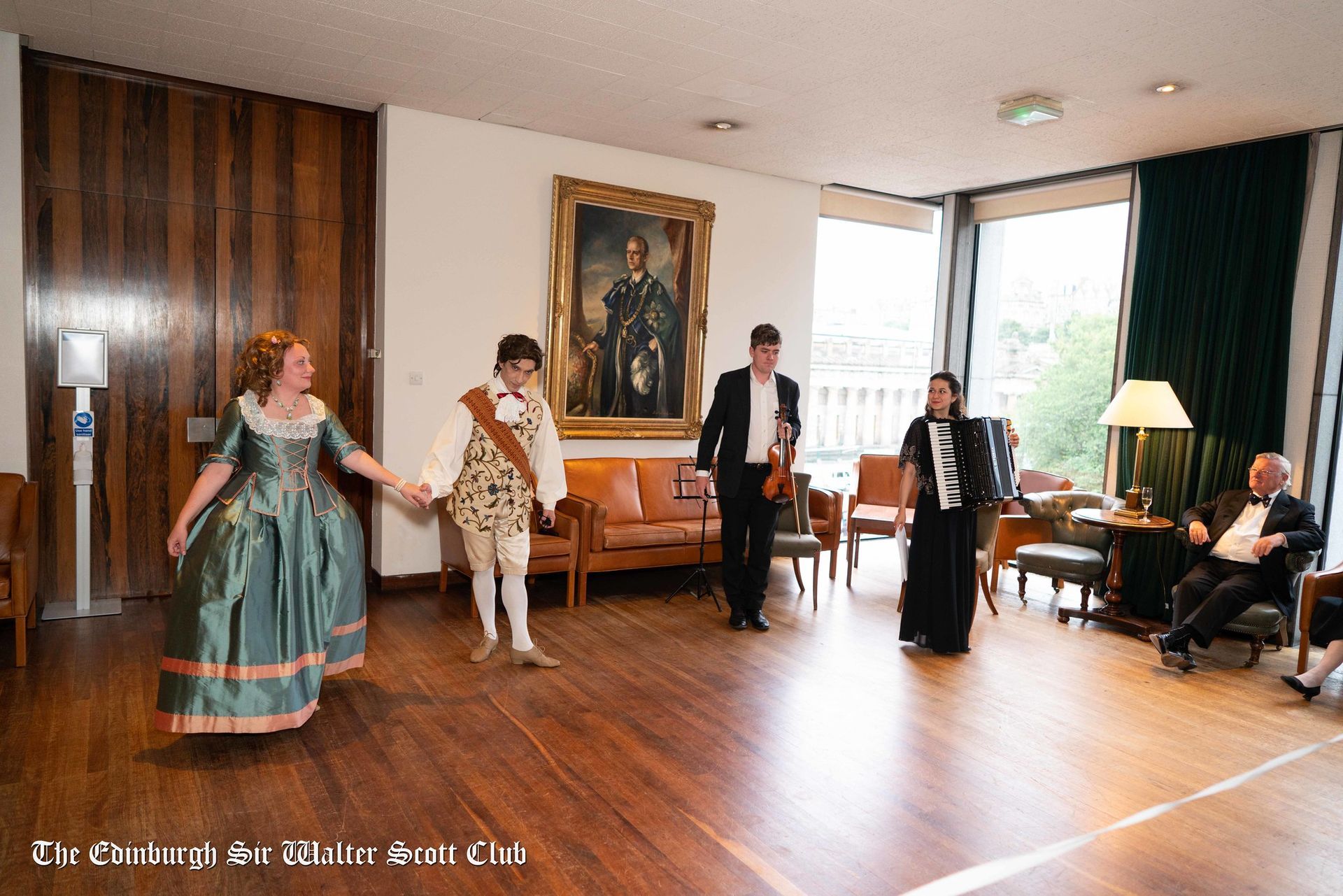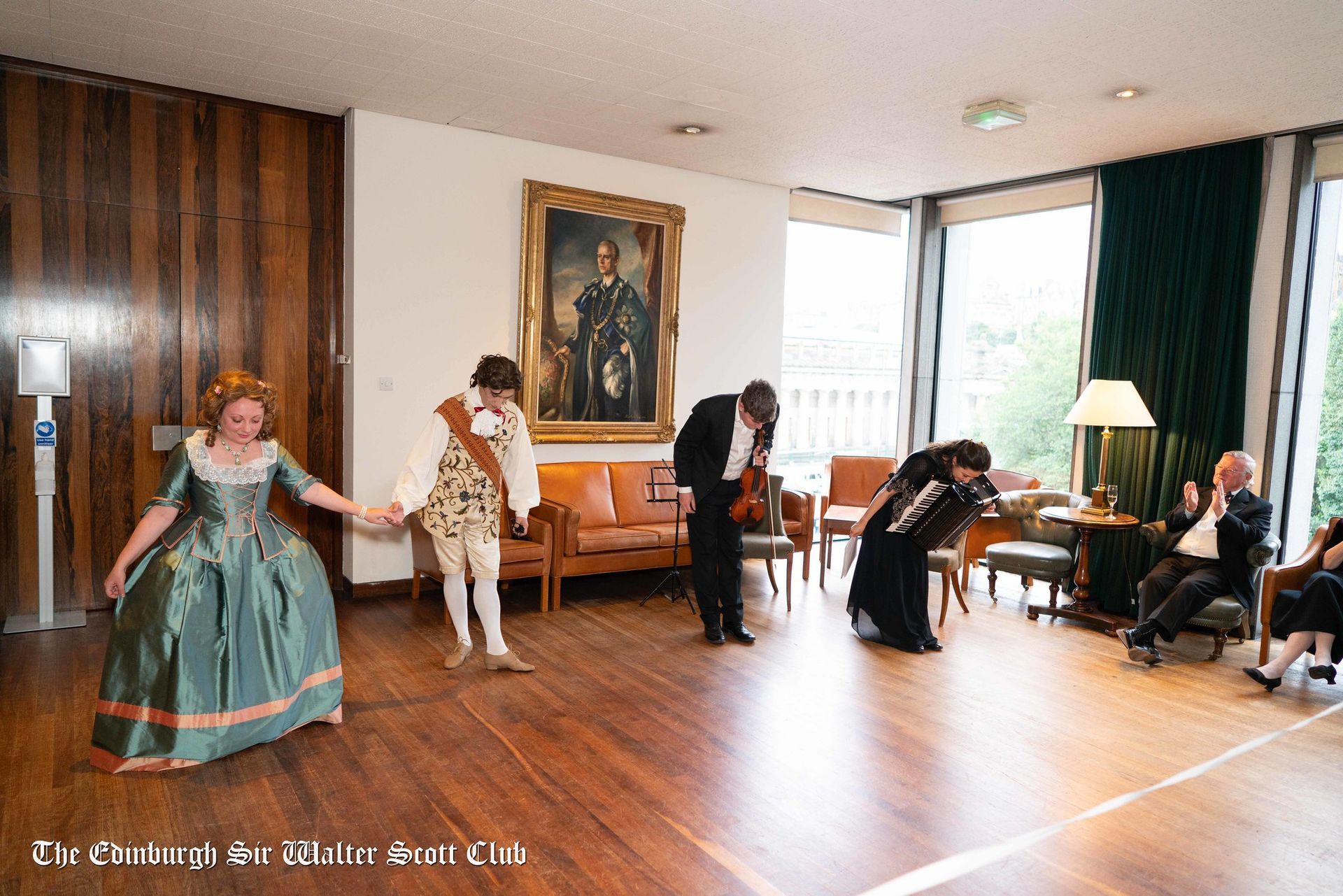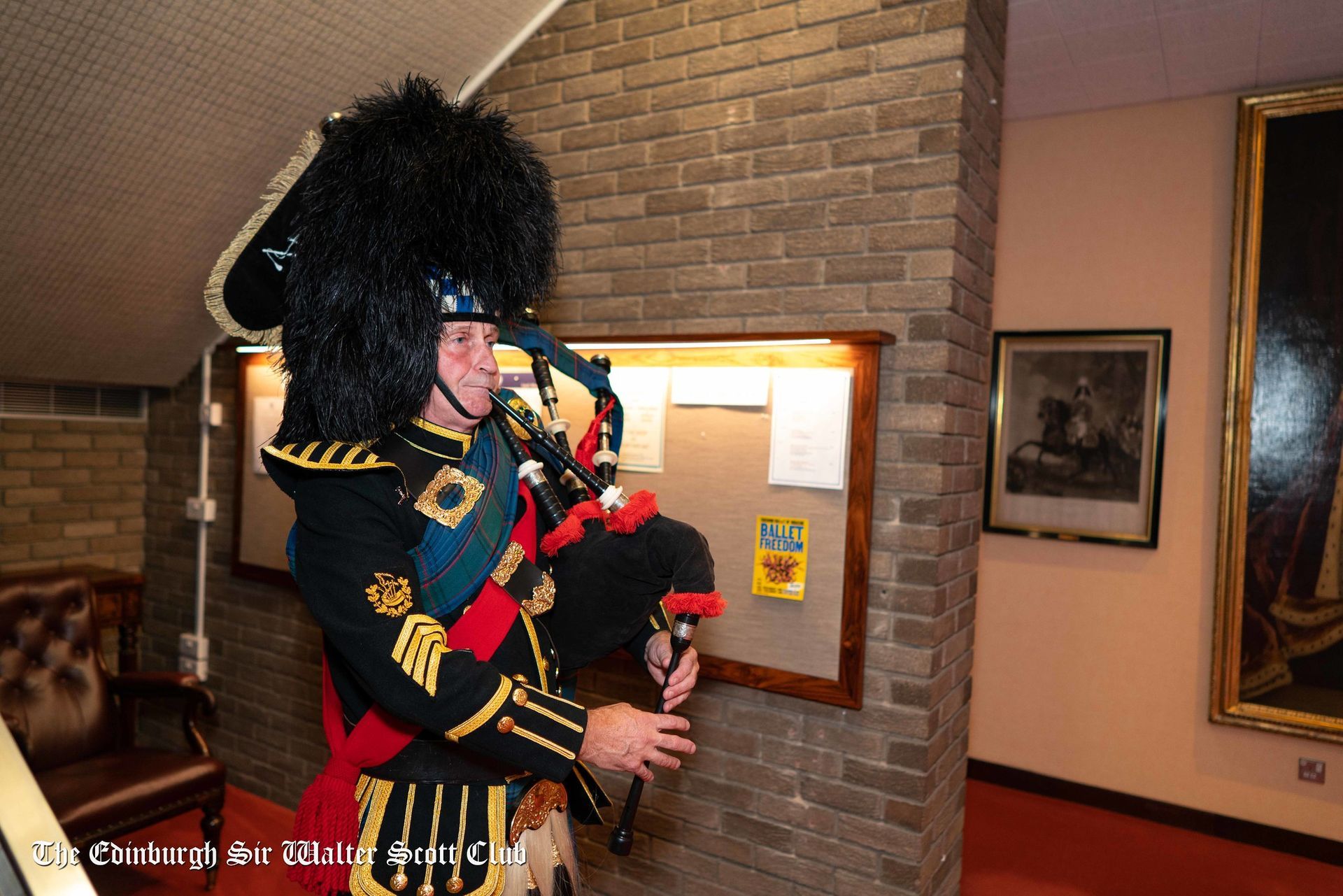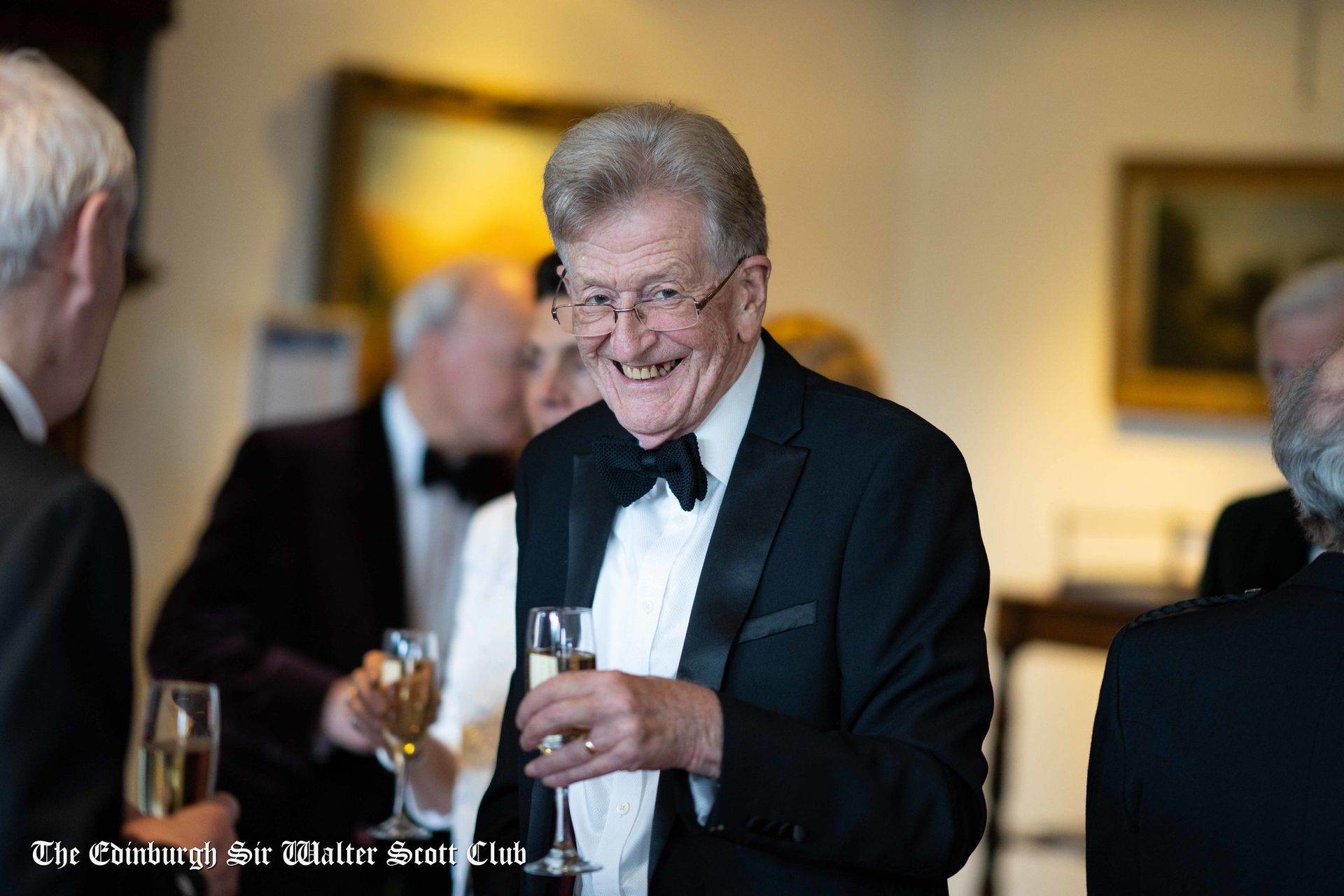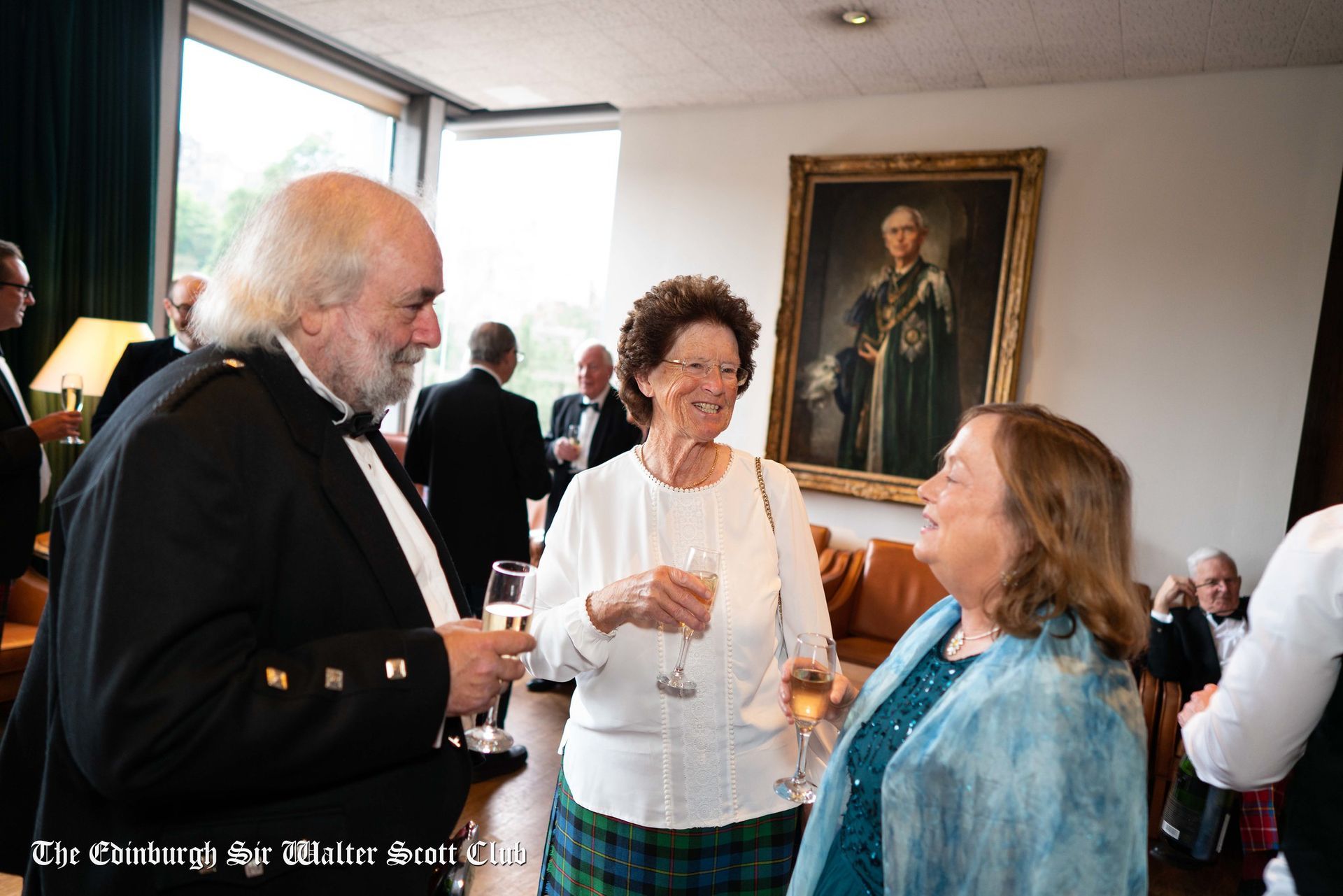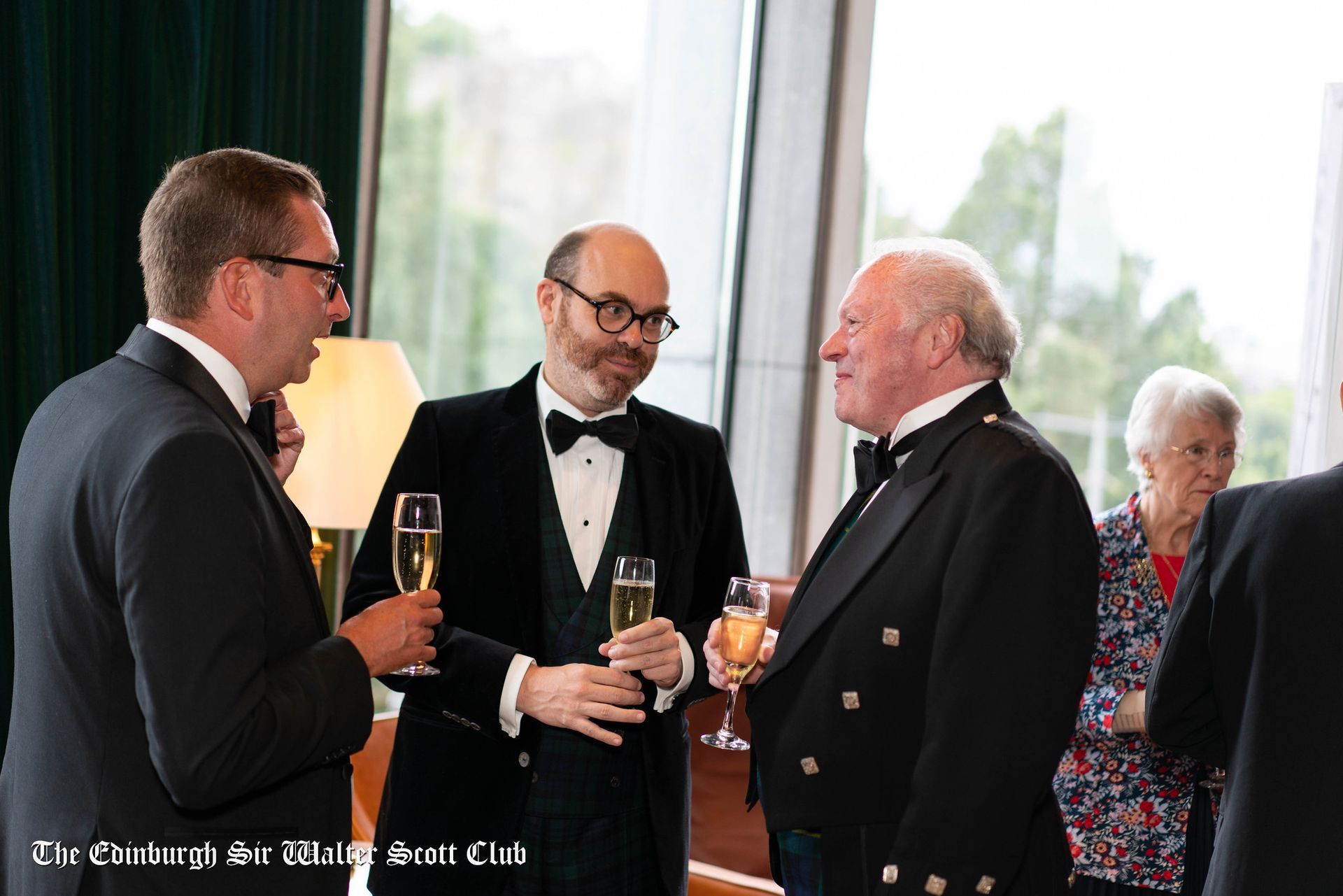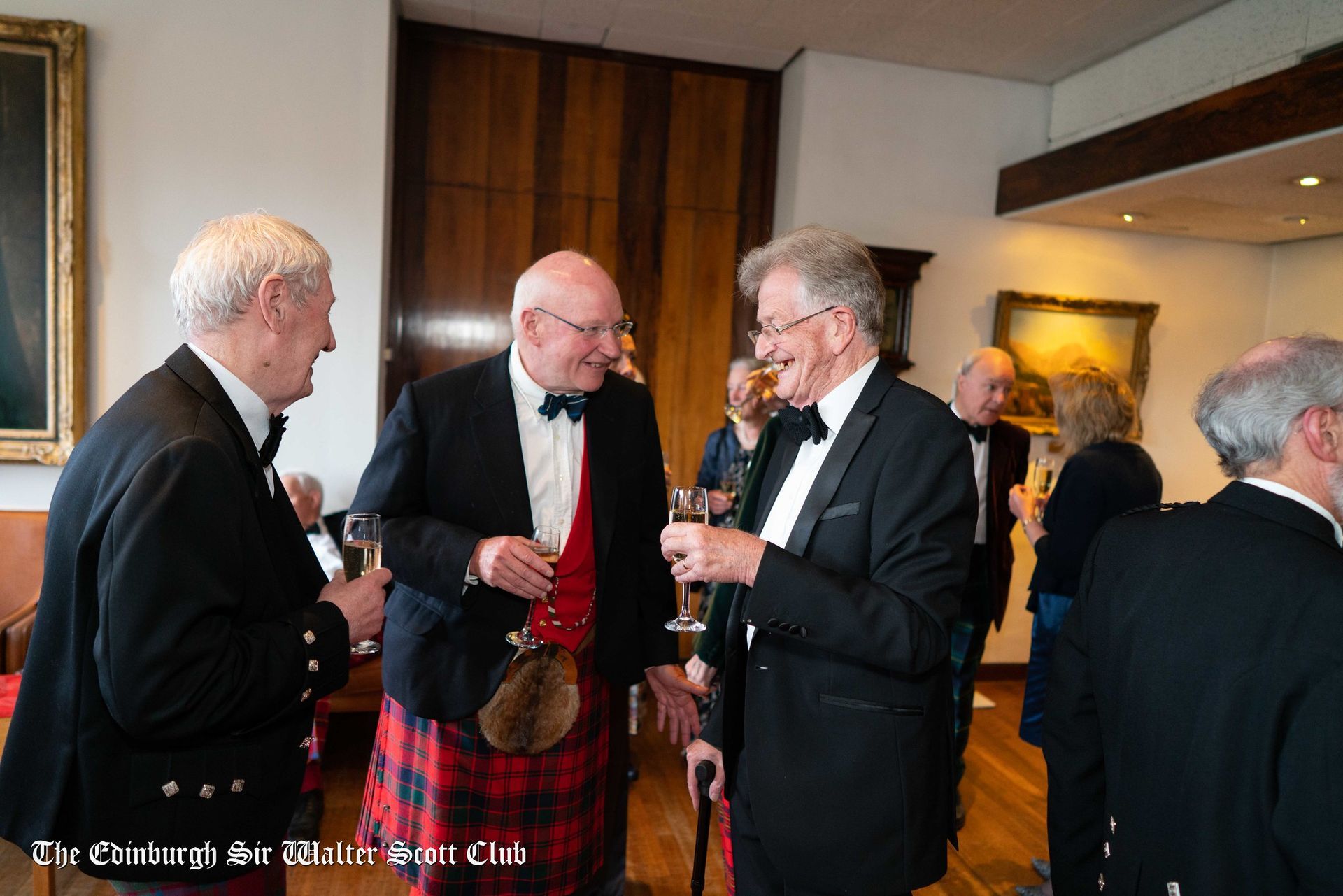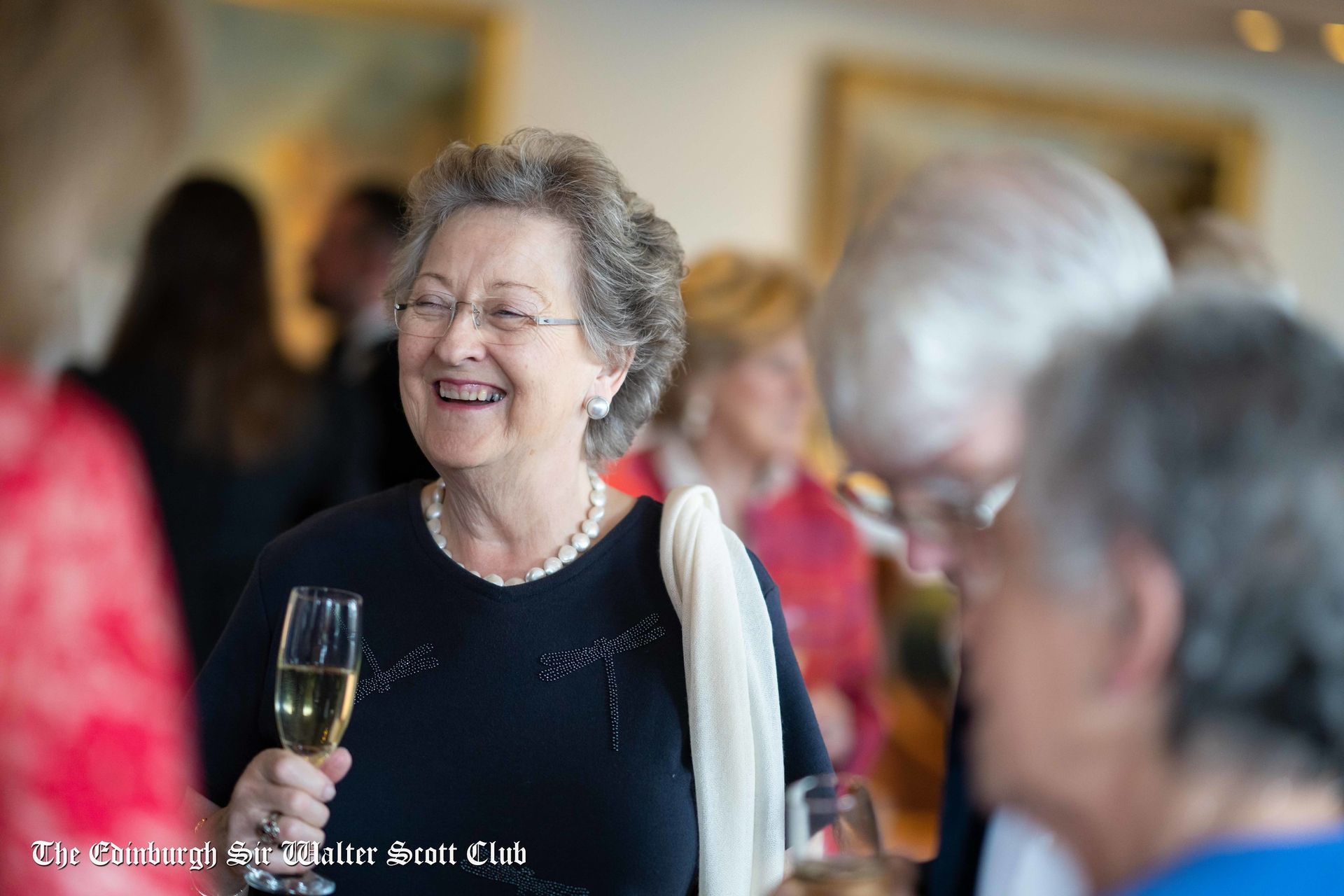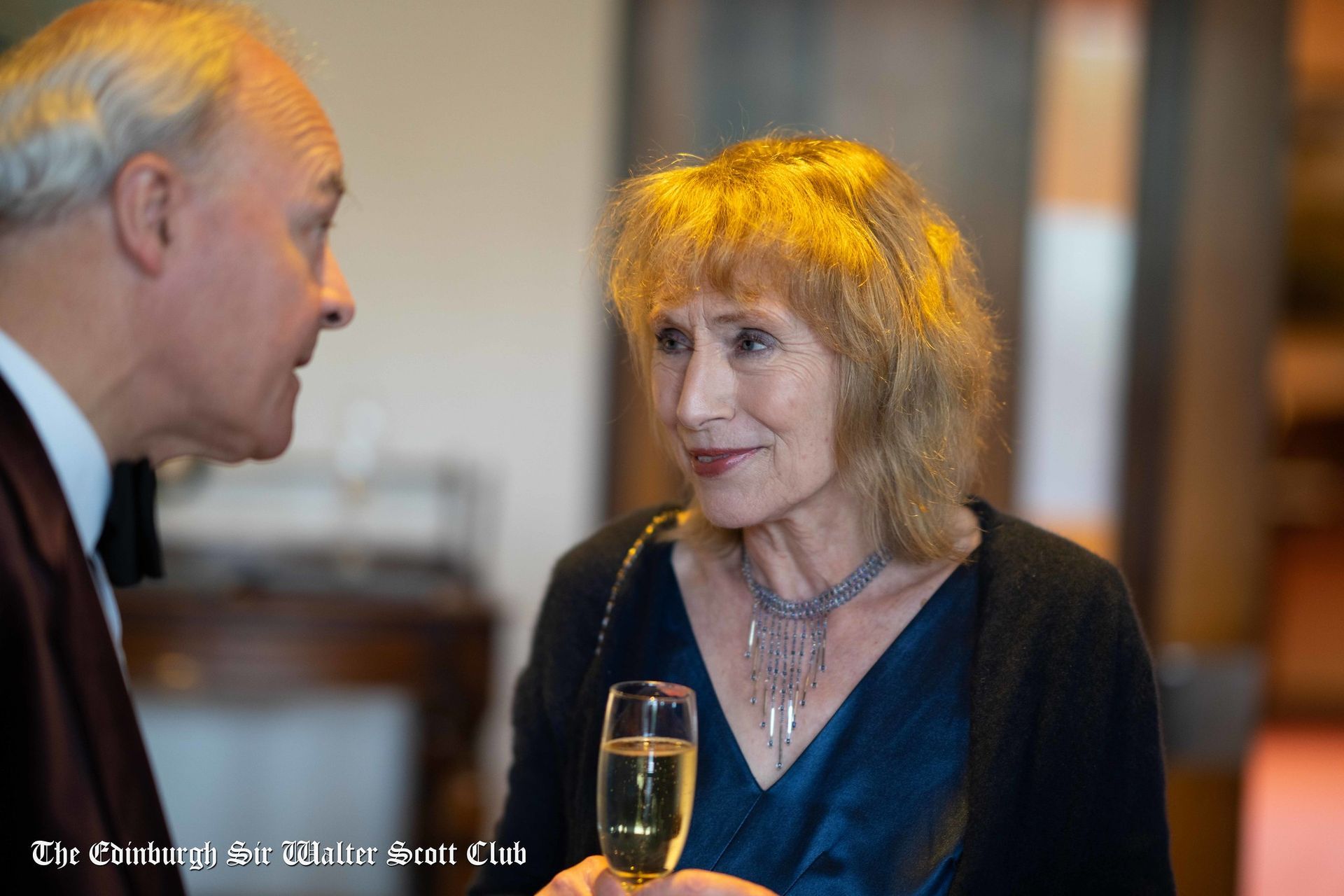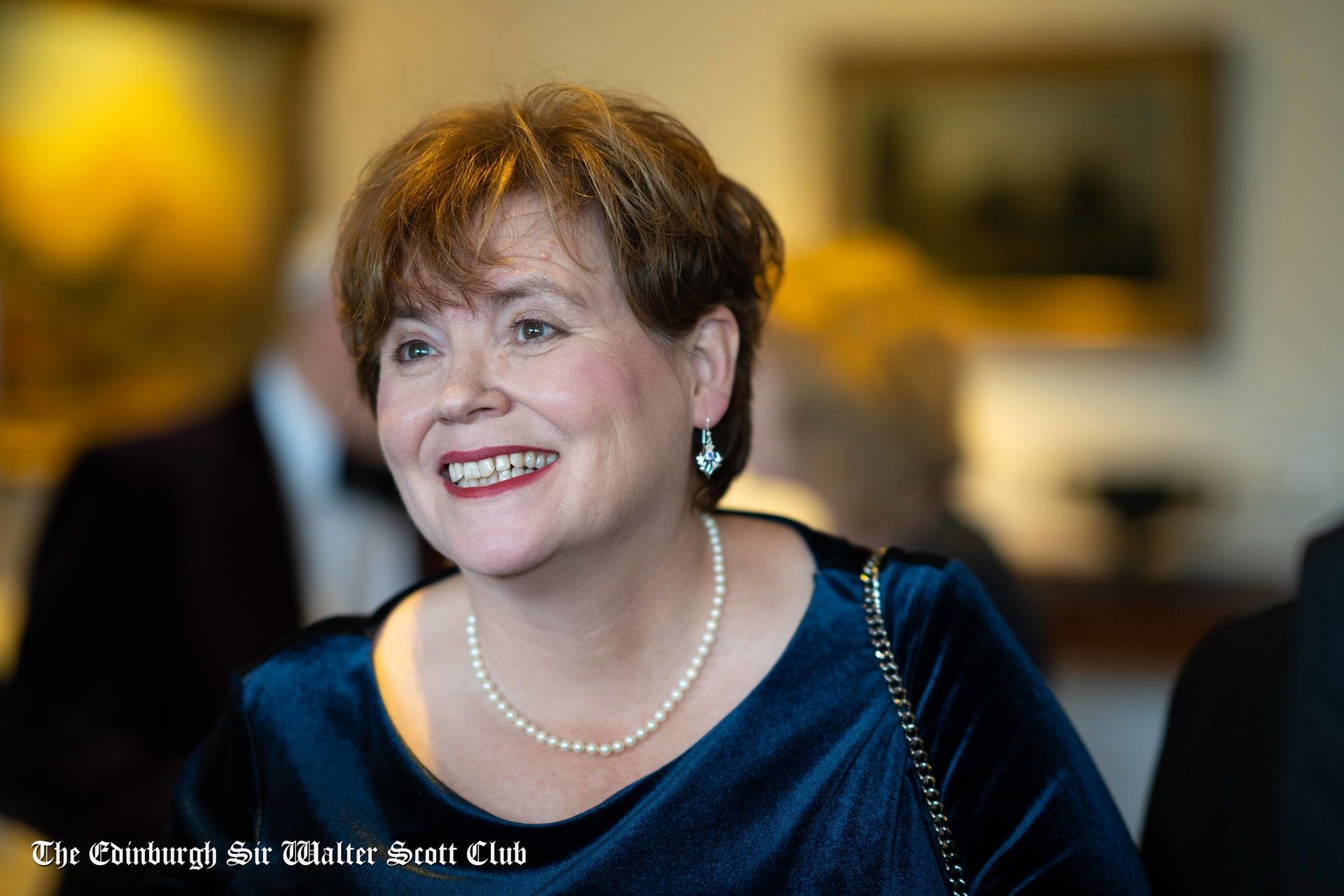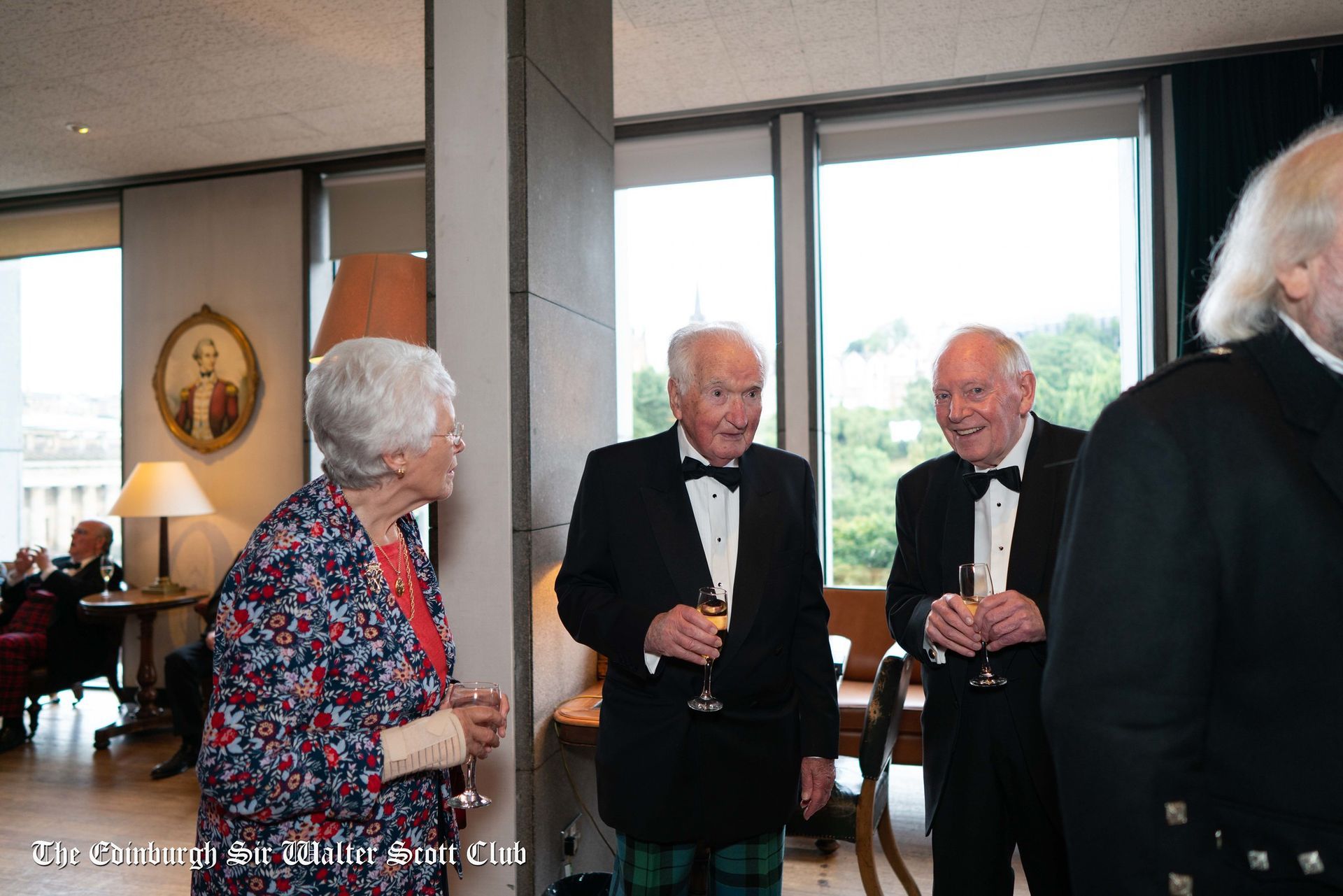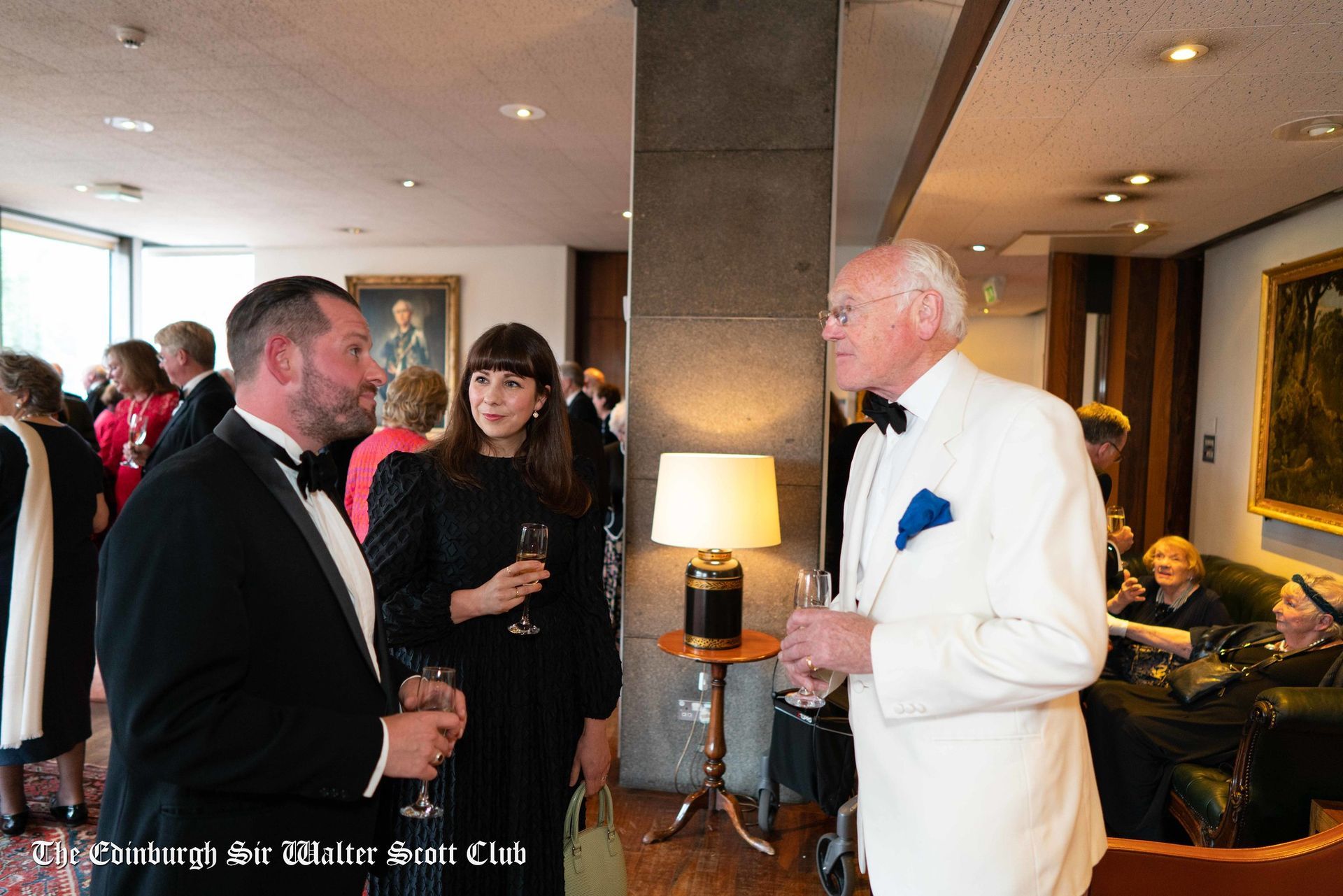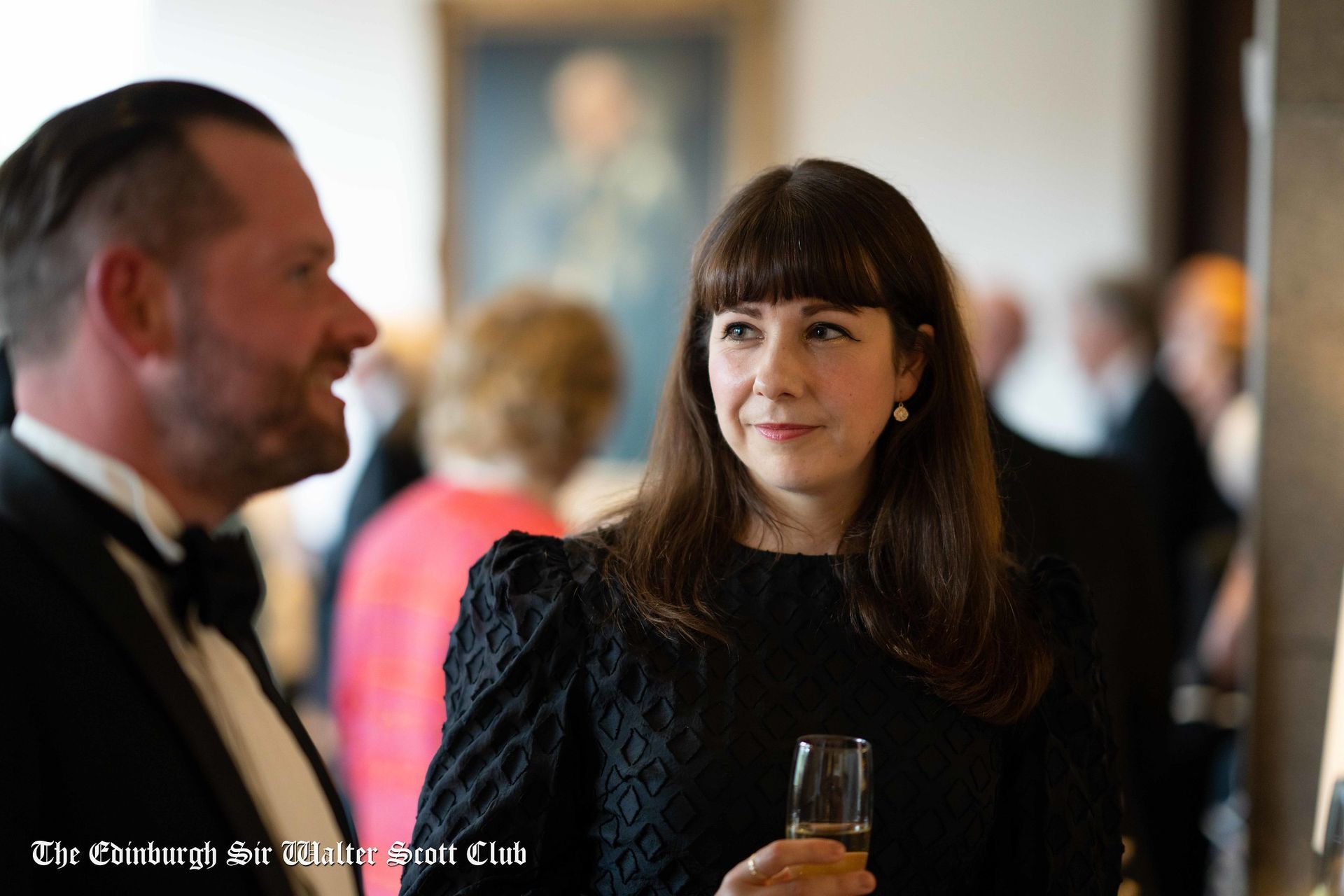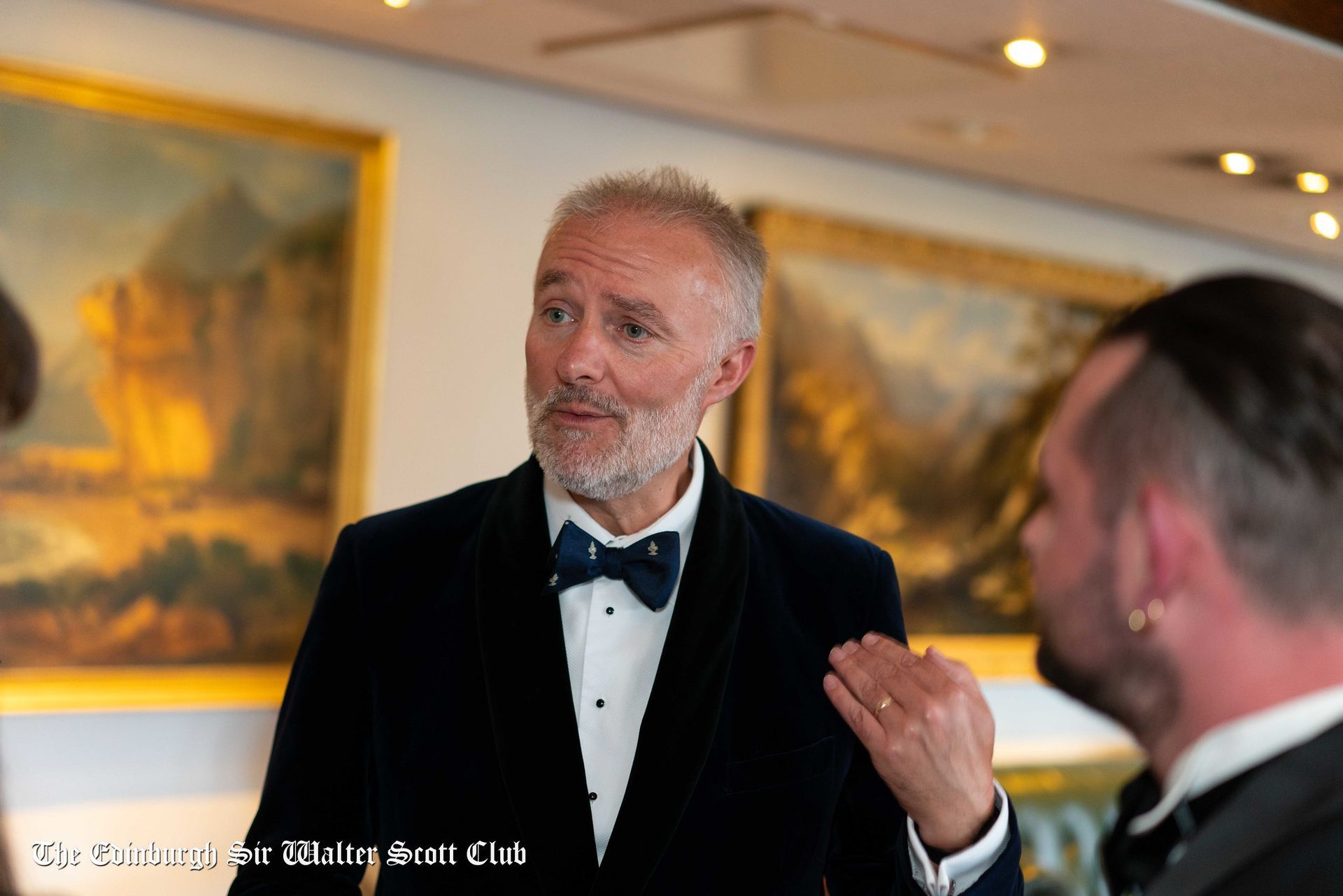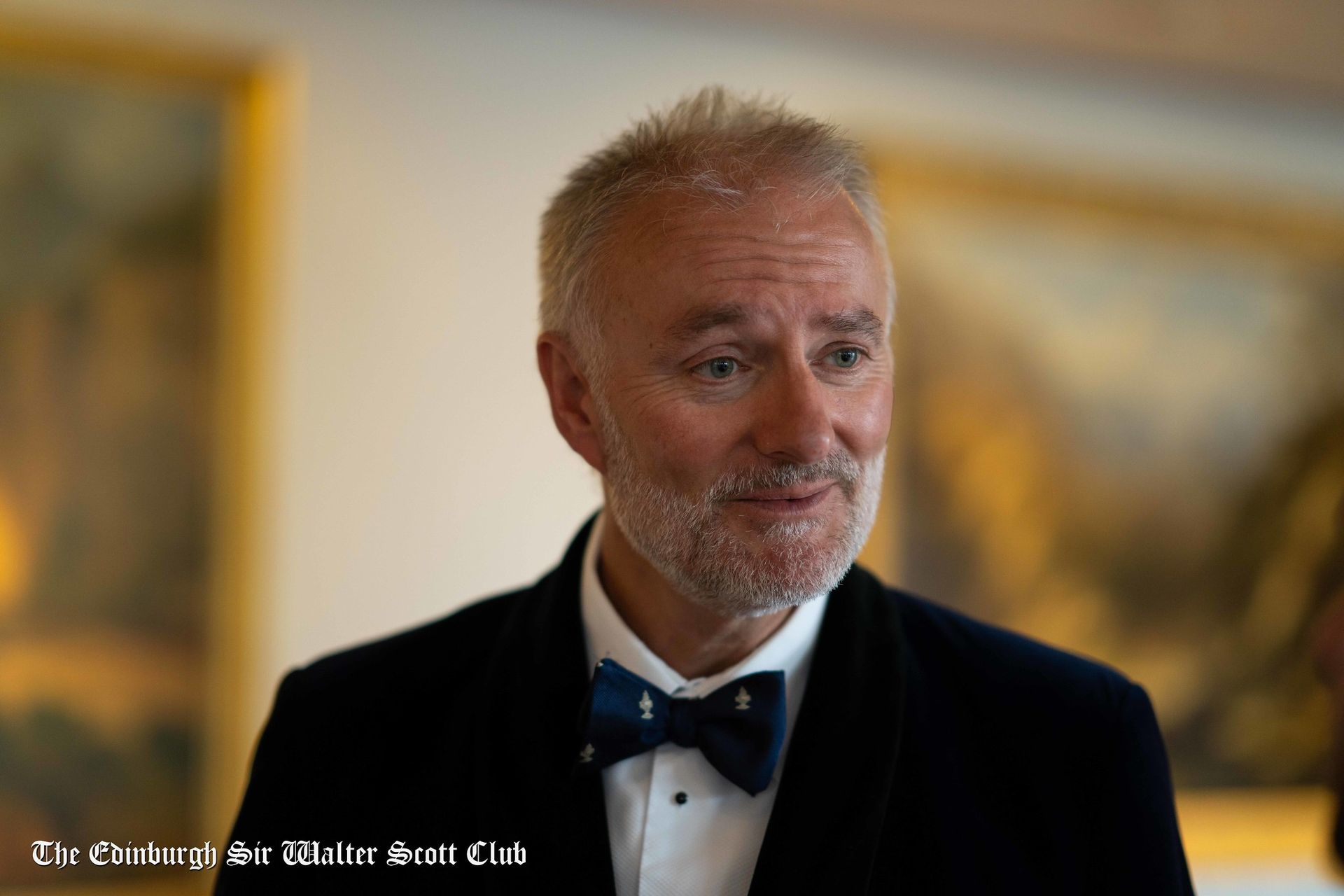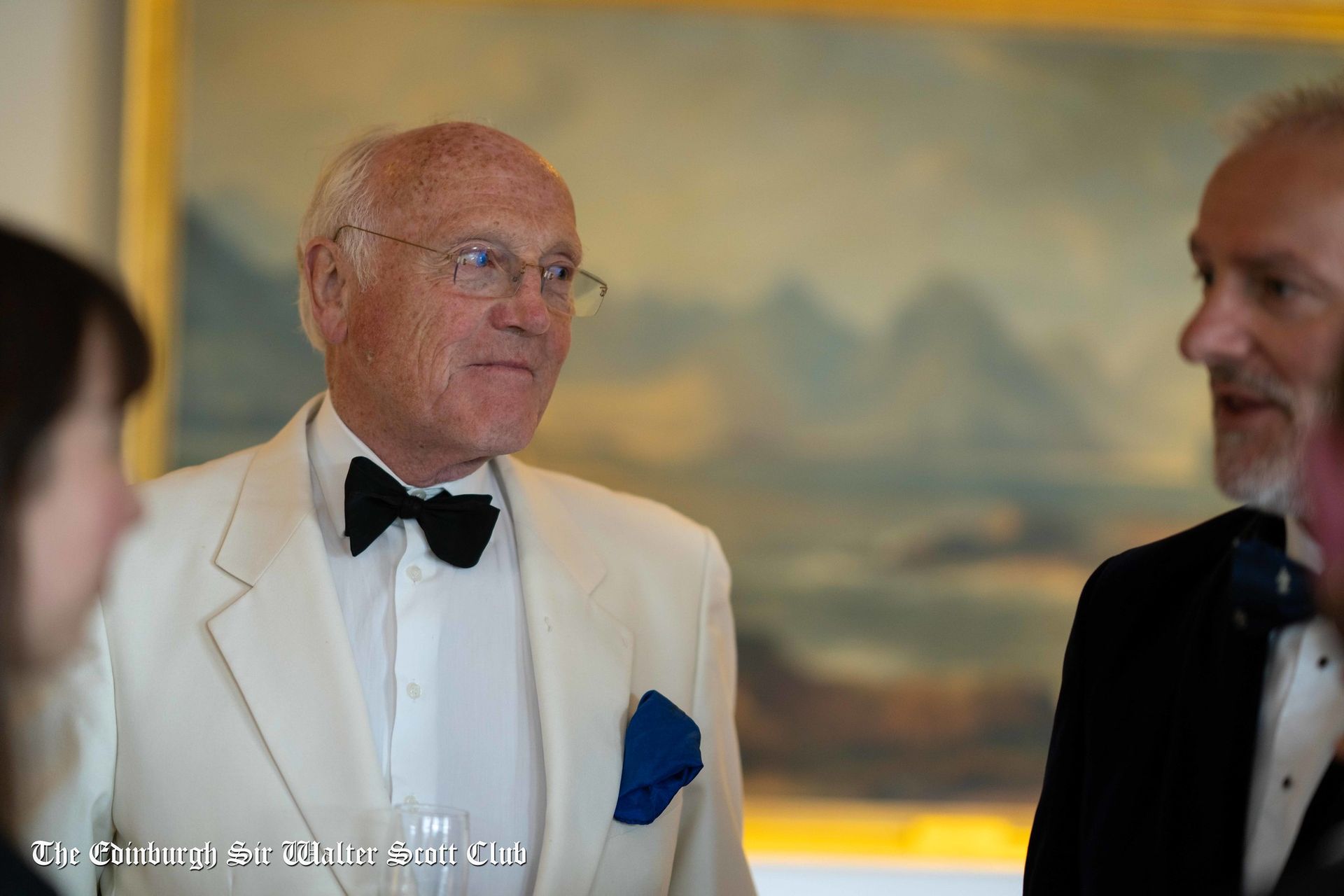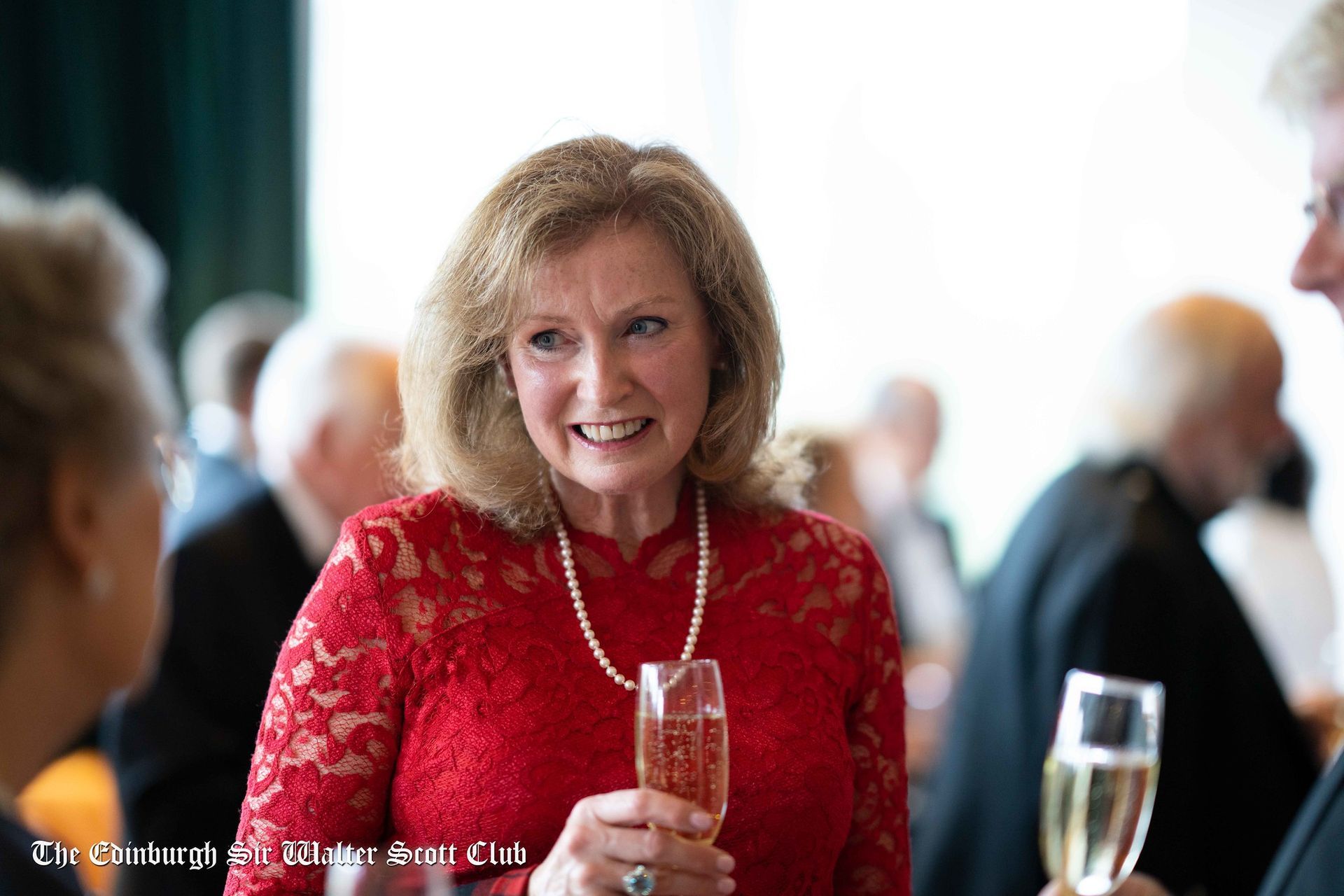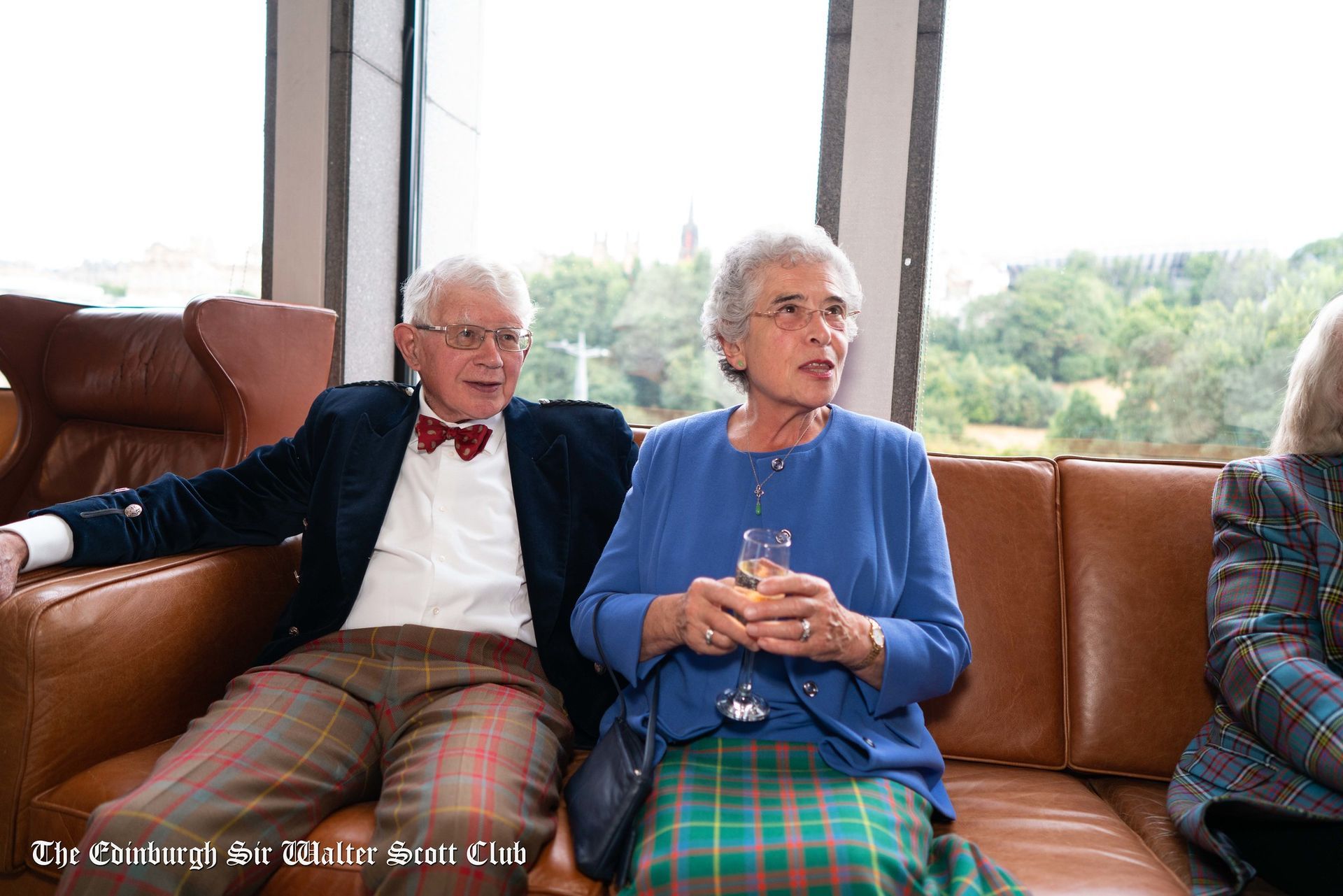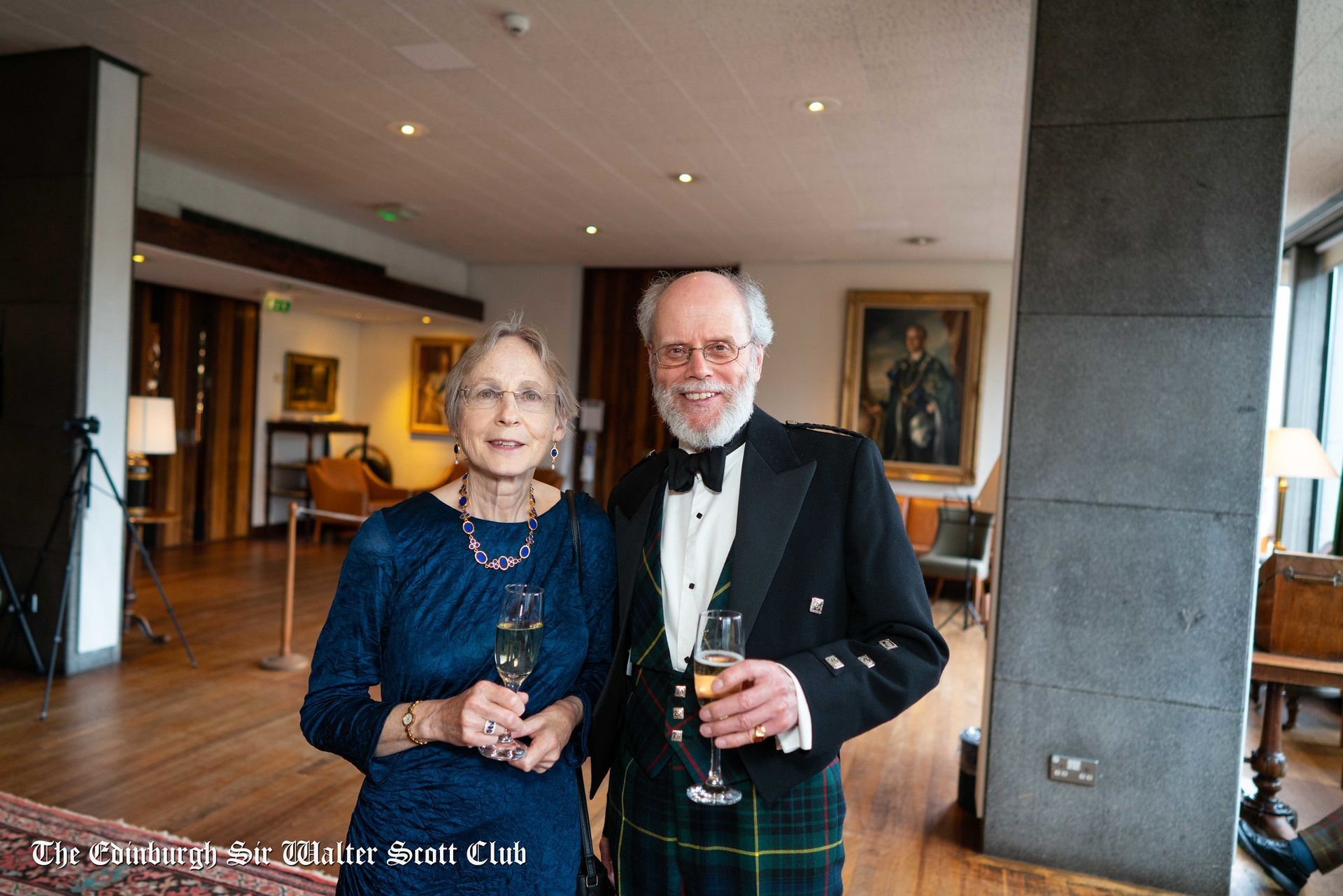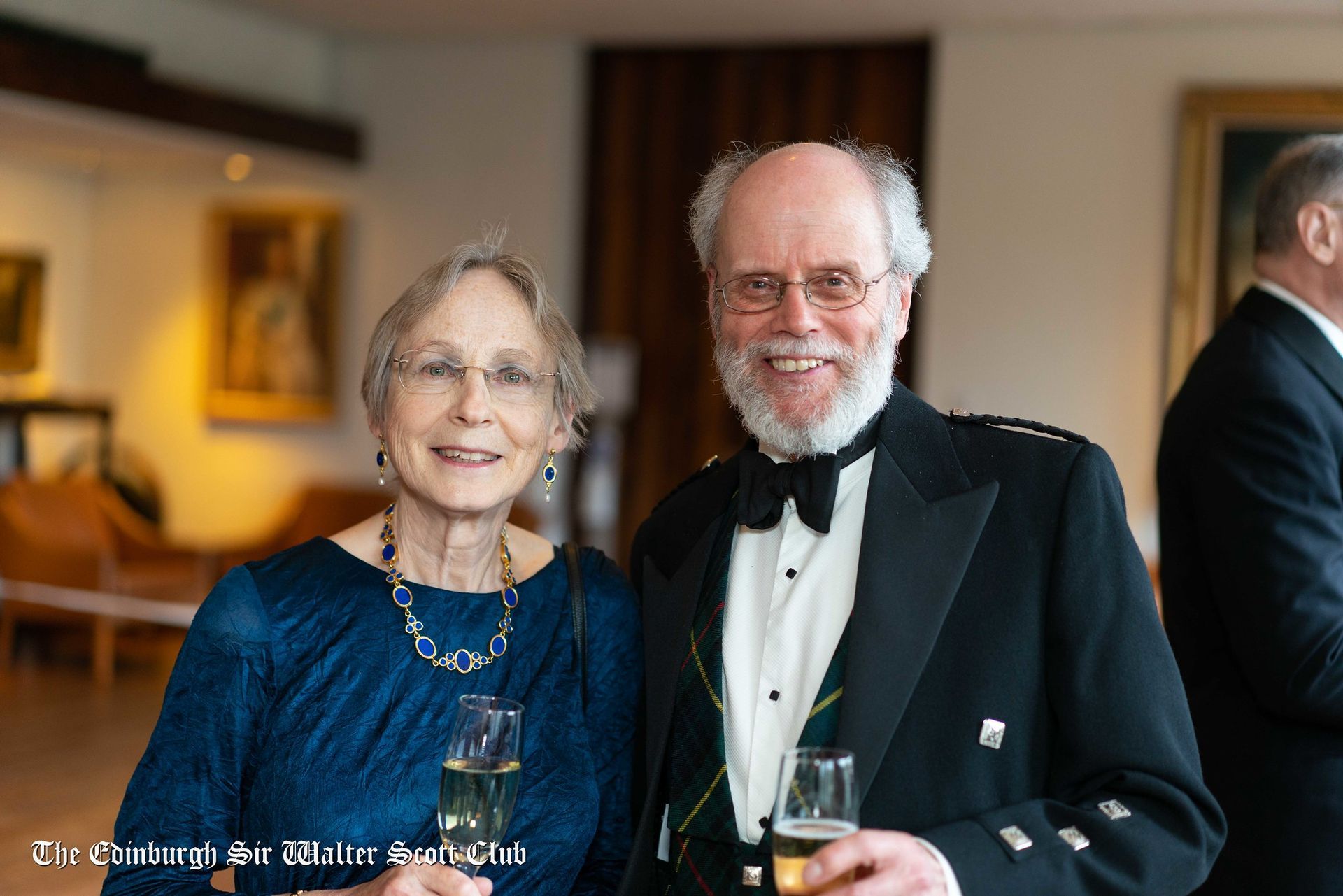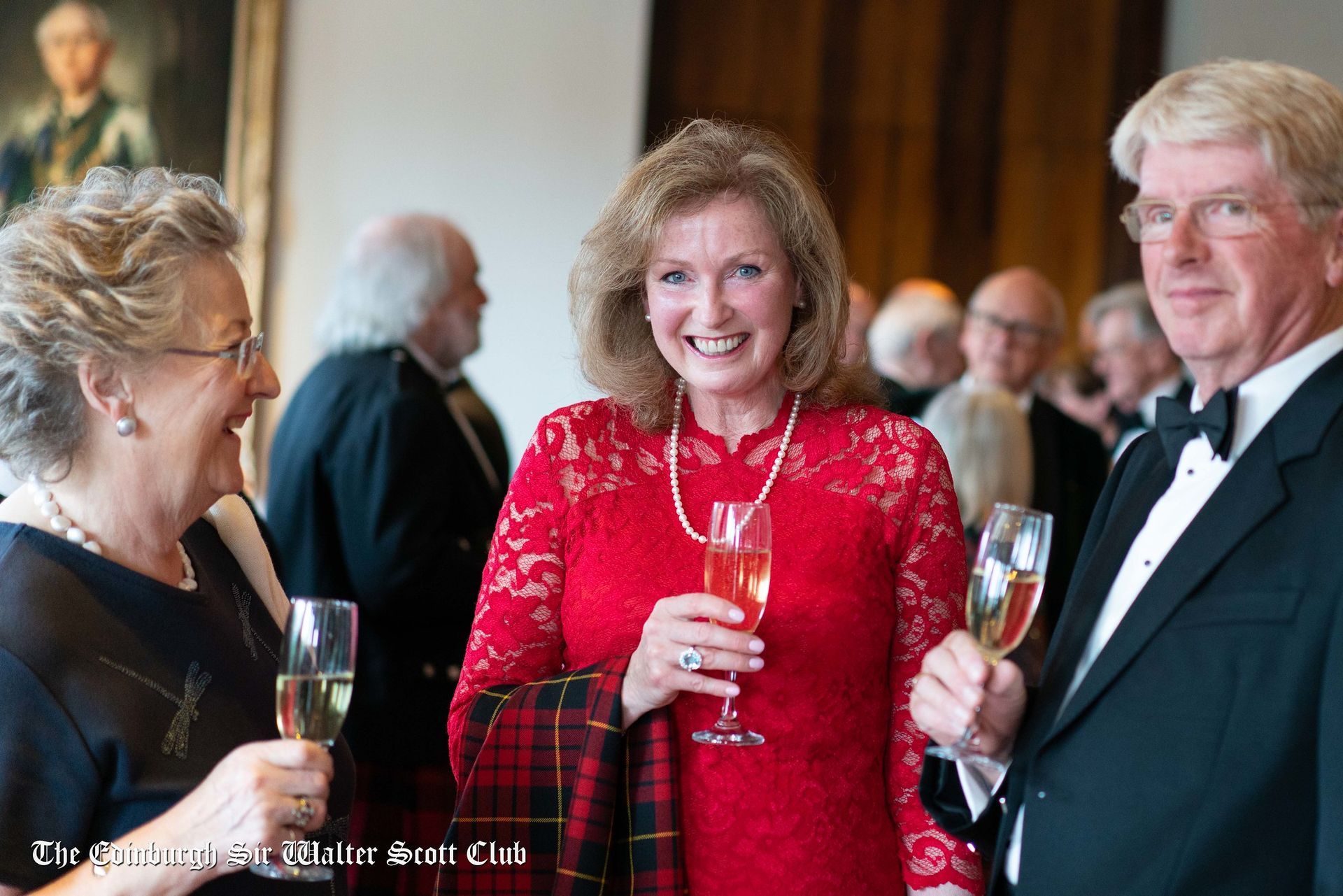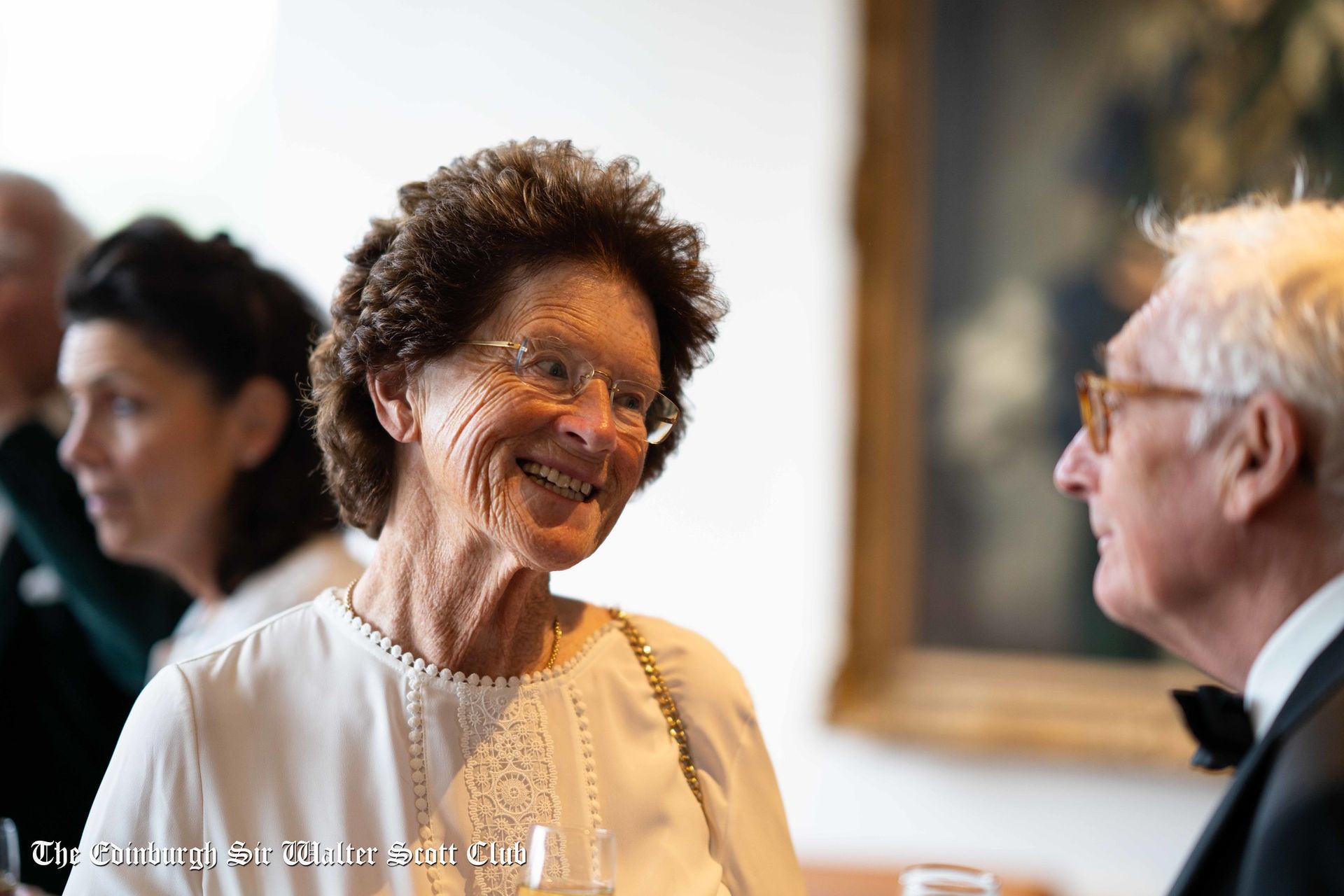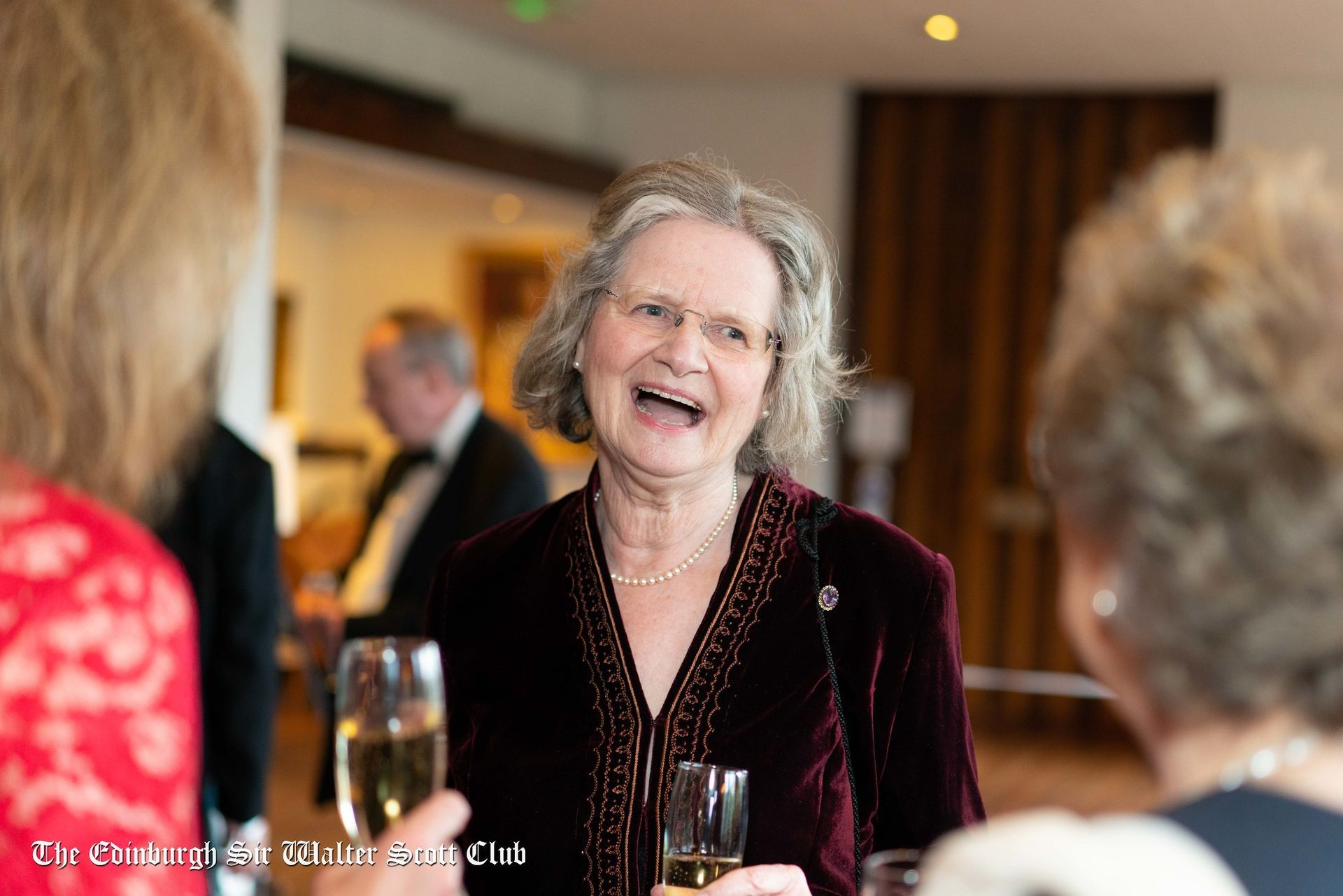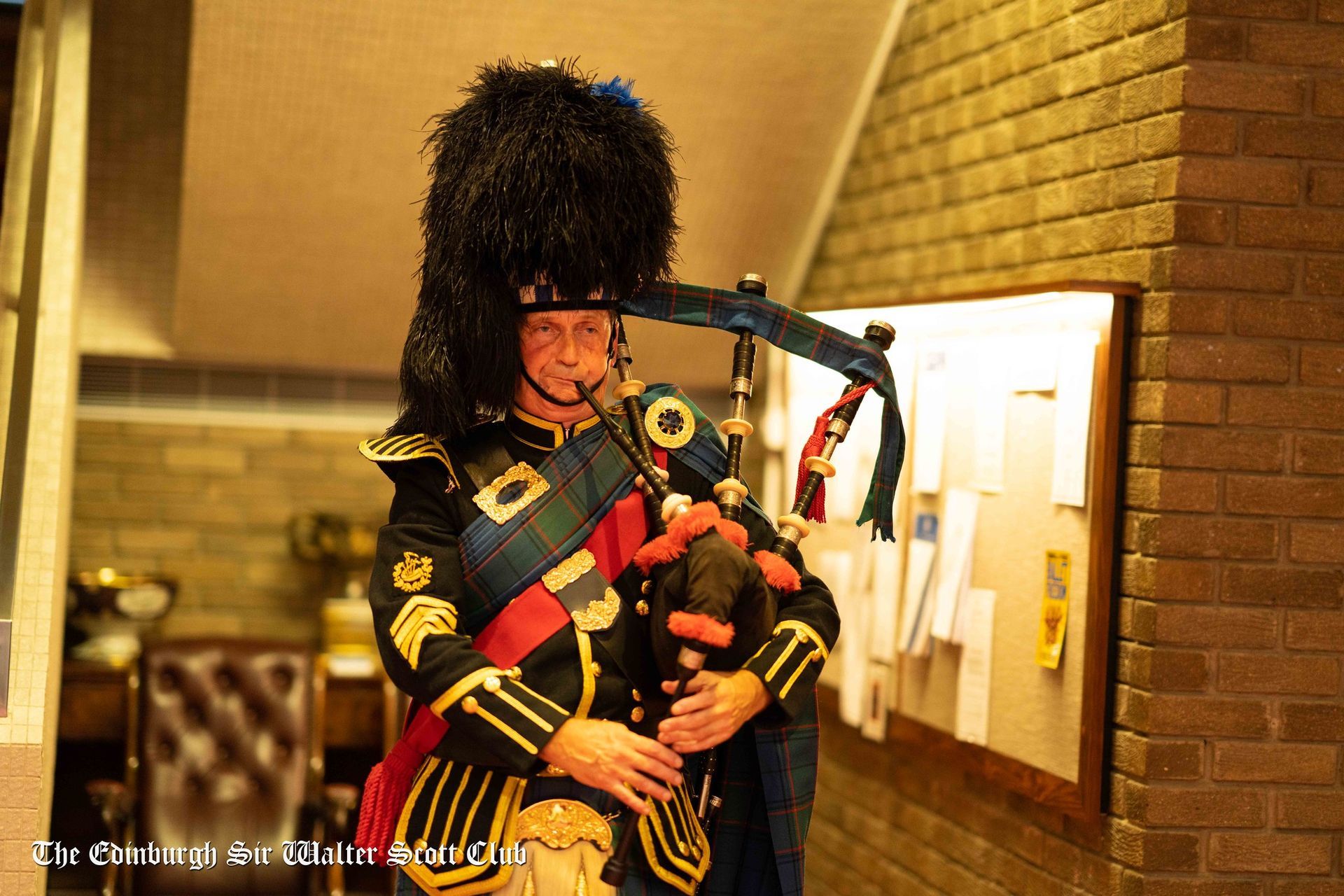Joint Bicentenary Dinner with The New Club to Celebrate George IV’s Visit
Wednesday 17th August 2022
Summary of the Talk:
The text discusses the celebration of George IV's visit to Scotland in 1822, organized by Sir Walter Scott, with a focus on its significance, planning, and outcomes.
The visit was politically motivated, orchestrated by the British government to keep the king away from the Congress of Verona. George IV was deeply unpopular in Scotland, particularly due to his treatment of his wife, Caroline. Sir Walter Scott was tasked with making the visit a success and rebranding the king's image. Scott, a staunch royalist, aimed to present George IV as a figure of Scottish heritage, ensuring the king wore the kilt and appeared as a romantic figure akin to Bonnie Prince Charlie. The king's extravagant Highland outfit cost the equivalent of £120,000 today.
The visit featured grand events, including a royal procession through Edinburgh, a Highland Ball, and a civic banquet. The king was well-received by the Scottish people, and the visit enhanced his reputation. The king also made significant gestures, such as expressing a desire to preserve the Holyroodhouse apartments. The visit’s success created a lasting impact, including the continuation of the title Duke of Rothesay for the heir apparent and the return of the Mons Meg cannon to Edinburgh.
Interesting Points:
- Scott's Role: Sir Walter Scott’s extensive involvement in the planning and attention to detail played a crucial role in transforming the king’s image in Scotland.
- The King’s Costume: The king’s elaborate Highland attire, including a bright red kilt and a heavily adorned bonnet, became a symbol of his connection to Scotland, despite his unpopularity.
- The Royal Reception: The visit was marked by impressive processions, public celebrations, and a sense of unity between Highlanders and Lowlanders.
- Cultural Shift: The royal visit helped establish tartan and kilts as Scotland’s national dress and contributed to a more unified Scottish identity.
- Symbolism and Legacy: The visit had long-lasting effects, including the return of the Mons Meg cannon to Edinburgh and the establishment of the Duke of Rothesay title for the heir to the throne.
This event, organized by Scott, ultimately played a significant role in reshaping Scottish national identity and royal relations.
Download the [transcript]
Download the [transcript]
Les Danses Antiques: Video
Les Danses Antiques: Photos
Photos from the Drinks Reception


